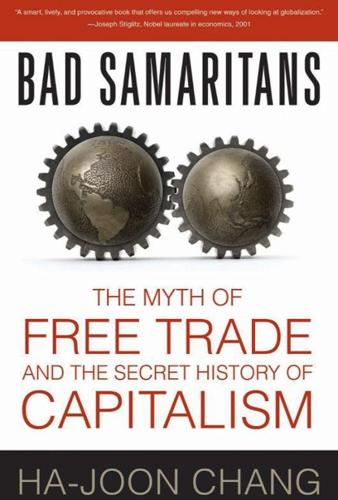
Bad Samaritans: The Myth of Free Trade and the Secret History of Capitalism
by
Ha-Joon Chang
Published 26 Dec 2007
This point is poignantly made by the British hit comedy film of 1997, The Full Monty, where six unemployed steel workers from Sheffield struggle to rebuild their lives as male strippers. There are clearly winners and losers involved in changing trade patterns, whether it is due to trade liberalization or to the rise of new, more productive foreign producers. Most free trade economists would accept that there are winners and losers from trade liberalization but argue that their existence cannot be an argument against trade liberalization. Trade liberalization brings overall gains. As the winners gain more than what is lost by the losers, the winners can make up all the latter’s losses and still have something left for themselves.
…
During 2001–2005, Mexico’s growth performance has been miserable, with an annual growth rate of per capita income at 0.3% (or a paltry 1. 7% increase in total over five years).4 By contrast, during the ‘bad old days’ of ISI (1955–82), Mexico’s per capita income had grown much faster than during the NAFTA period – at an average of 3.1% per year.5 Mexico is a particularly striking example of the failure of premature wholesale trade liberalization, but there are other examples.6 In Ivory Coast, following tariff cuts of 40% in 1986, the chemical, textile, shoe and automobile industries virtually collapsed. Unemployment soared. In Zimbabwe, following trade liberalization in 1990, the unemployment rate jumped from 10% to 20%. It had been hoped that the capital and labour resources released from the enterprises that went bankrupt due to trade liberalization would be absorbed by new businesses. This simply did not happen on a sufficient scale.
…
Because they lack tax collection capabilities and because tariffs are the easiest tax to collect, they rely heavily on tariffs (which sometimes account for over 50% of total government revenue).7 As a result, the fiscal adjustment that has had to be made following large-scale trade liberalization has been huge in many developing countries – even a recent IMF study shows that, in low-income countries that have limited abilities to collect other taxes, less than 30% of the revenue lost due to trade liberalization over the last 25 years has been made up by other taxes.8 Moreover, lower levels of business activity and higher unemployment resulting from trade liberalization have also reduced income tax revenue.When countries were already under considerable pressure from the IMF to reduce their budget deficits, falling revenue meant severe cuts in spending, often eating into vital areas like education, health and physical infrastructure, damaging long-term growth. It is perfectly possible that some degree of gradual trade liberalization may have been beneficial, and even necessary, for certain developing countries in the 1980s – India and China come to mind.
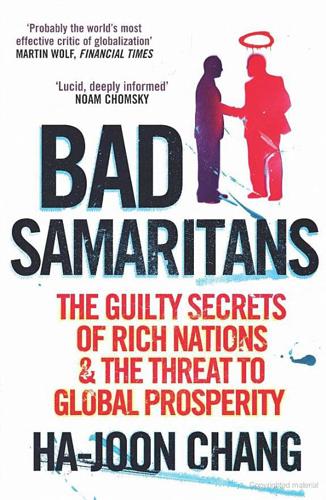
Bad Samaritans: The Guilty Secrets of Rich Nations and the Threat to Global Prosperity
by
Ha-Joon Chang
Published 4 Jul 2007
This point is poignantly made by the British hit comedy film of 1997, The Full Monty, where six unemployed steel workers from Sheffield struggle to rebuild their lives as male strippers. There are clearly winners and losers involved in changing trade patterns, whether it is due to trade liberalization or to the rise of new, more productive foreign producers. Most free trade economists would accept that there are winners and losers from trade liberalization but argue that their existence cannot be an argument against trade liberalization. Trade liberalization brings overall gains. As the winners gain more than what is lost by the losers, the winners can make up all the latter’s losses and still have something left for themselves.
…
During 2001–2005, Mexico’s growth performance has been miserable, with an annual growth rate of per capita income at 0.3% (or a paltry 1.7% increase in total over five years).4 By contrast, during the ‘bad old days’ of ISI (1955–82), Mexico’s per capita income had grown much faster than during the NAFTA period – at an average of 3.1% per year.5 Mexico is a particularly striking example of the failure of premature wholesale trade liberalization, but there are other examples.6 In Ivory Coast, following tariff cuts of 40% in 1986, the chemical, textile, shoe and automobile industries virtually collapsed. Unemployment soared. In Zimbabwe, following trade liberalization in 1990, the unemployment rate jumped from 10% to 20%. It had been hoped that the capital and labour resources released from the enterprises that went bankrupt due to trade liberalization would be absorbed by new businesses. This simply did not happen on a sufficient scale.
…
Because they lack tax collection capabilities and because tariffs are the easiest tax to collect, they rely heavily on tariffs (which sometimes account for over 50% of total government revenue).7 As a result, the fiscal adjustment that has had to be made following large-scale trade liberalization has been huge in many developing countries – even a recent IMF study shows that, in low-income countries that have limited abilities to collect other taxes, less than 30% of the revenue lost due to trade liberalization over the last 25 years has been made up by other taxes.8 Moreover, lower levels of business activity and higher unemployment resulting from trade liberalization have also reduced income tax revenue. When countries were already under considerable pressure from the IMF to reduce their budget deficits, falling revenue meant severe cuts in spending, often eating into vital areas like education, health and physical infrastructure, damaging long-term growth. It is perfectly possible that some degree of gradual trade liberalization may have been beneficial, and even necessary, for certain developing countries in the 1980s – India and China come to mind.
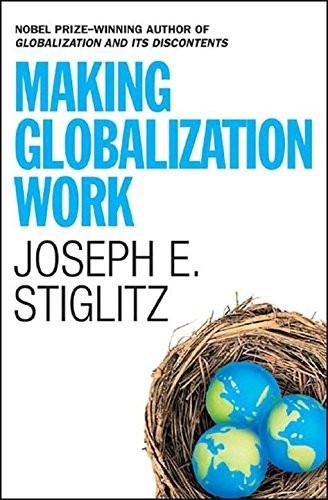
Making Globalization Work
by
Joseph E. Stiglitz
Published 16 Sep 2006
Unless the direction in which negotiations have been going in recent years is changed dramatically, more and more developing countries are likely to decide that no agreement is better than a bad one. But what are the prospects of a fairer trade regime? Trade liberalization has not lived up to its promise. But the basic logic of trade—its potential to make most, if not all, better off—remains. Trade is not a zero-sum game, in which those who win do so at the cost of others; it is, or least it can be, a positive-sum game, in which everyone can be a winner. If that potential is to be realized, first we must reject two of the long-standing premises of trade liberalization: that trade liberalization automatically leads to more trade and growth, and that growth will automatically “trickle down” to benefit all.
…
While it has not been the disaster that its critics predicted, neither has it brought all the benefits that were claimed by its advocates. Advocates of trade liberalization believe it will bring unprecedented prosperity. They want developed countries to open themselves up to exports from developing countries, liberalize their markets, take away man-made barriers to the flows of goods and services, and let globalization work its wonders. But trade liberalization is also among the most controversial aspects of globalization; many see the alleged costs—lower wages, growing unemployment, loss of national soveignty—as outweighing the purported benefits of greater efficiency and increased growth.
…
There is often a lack of infrastructure to bring their goods to market, and it may take years for the goods they produce to meet the standards demanded by the advanced industrial countries. These are among the reasons that when, in February 2001, Europe unilaterally opened up its markets to the poorest countries of the world, almost no new trade followed. To fulfill the promise that more trade will follow from trade liberalization, much else is required, as we shall see. Moreover, trade liberalization exposes countries to more risk, and developing countries (and their workers) are less prepared to bear that risk. Workers in the United States and Europe worry about being thrown out of their jobs as a result of a surge in imports. But workers in these countries have a strong safety net to fall back on: they have the education that makes it easier to move from one job to another; they often have bank accounts and receive severance pay to buffer their transition between jobs.
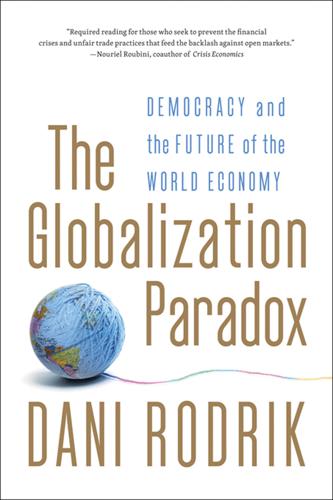
The Globalization Paradox: Democracy and the Future of the World Economy
by
Dani Rodrik
Published 23 Dec 2010
An enlarged foreign worker presence clearly garners little enthusiasm in the United States or in Europe. In light of this, it would be easy to write such programs off as politically unrealistic. That would be a mistake. Trade liberalization has never had a huge amount of domestic political support either. Imports from developing countries create the same downward pressure on rich country wages as immigration. Yet that has not stopped policy makers from bringing trade barriers down. Trade liberalization succeeded through a combination of political leadership, lobbying by exporters and multinational enterprises, and the ideas of economists. Temporary migration, by contrast, has rarely had a well-defined constituency in the advanced countries.
…
Many perceived the reform as a political and economic success in Britain. Economic commentators on the Continent pointed with awe to the large increase in Britain’s commerce and output since the repeal—although of course it was really the Industrial Revolution that deserved the bulk of the credit. Britain’s apparent success did not necessarily make trade liberalization easier in other countries. As the emperor Louis-Napoléon Bonaparte put it to the British MP and free trade proselytizer Richard Cobden, “I am charmed and flattered at the idea of performing a similar work in my country; but it is very difficult in France to make reforms; we make revolutions in France, not reforms.”2 However, there was one political expedient to which free trade–minded leaders have resorted ever since: reduce trade barriers in exchange for another country doing the same, and then present liberalization to the opposition as a necessary “concession” made to get the other party to open their markets.
…
Most recent estimates put the “overall” gains to the United States from a global move to free trade in tenths of 1 percent of U.S. gross domestic product.18 No doubt certain export interests would benefit considerably more; but the losses to others would be commensurately large as well. The more open an economy is, the worse the redistribution-to-efficiency ratio gets. The political and social-cost-benefit ratio of trade liberalization looks very different when tariffs are 5 percent instead of 50 percent. It is inherent in the economics of trade that going the last few steps to free trade will be particularly difficult because it generates lots of dislocation but little overall gain. There is nothing similarly self-exhausting in the case of technical progress.
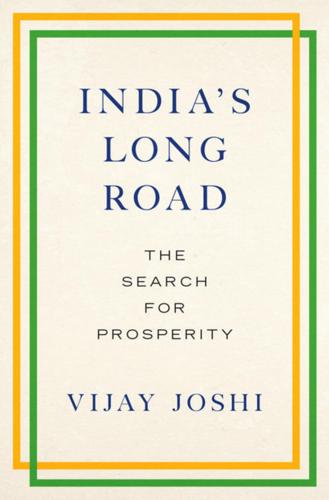
India's Long Road
by
Vijay Joshi
Published 21 Feb 2017
Worldwide experience confirms that trade openness is a crucial and necessary condition for rapid growth. Trade liberalization, especially for industrial goods, has been one of the signal achievements of India’s reform programme so far; and it has made a big difference. The economy has become much more open26 (though agriculture still remains highly protected, as in many other countries). Exposure to international competition has improved resource allocation and raised significantly the technological sophistication of the Indian economy. Further trade liberalization would be desirable. Whether this should be done unilaterally or as part of multilateral or regional agreements is a salient issue.
…
India has run a large trade surplus in agricultural products for years; with the right policies, it would have many further significant opportunities in this area.56 Most farmers would gain from trade liberalization since they could more than recoup the loss of subsidies from the gain on higher product prices. However, two groups would be adversely affected. The first group is poor urban and rural consumers of food, including landless labourers, who would suffer, for a time, a loss of real income due to higher food prices. The second group is very small, self-sufficient farmers, who consume what they produce and do not have a marketable surplus. This means that an essential accompaniment of agricultural trade liberalization is a functioning system of income support for poor people (as strongly advocated in Chapter 10).
…
Sukhtankar, S. (2015), ‘The Impact of Corruption on Consumer Markets: Evidence from the Allocation of 2G Wireless Spectrum in India’, Journal of Law and Economics, Vol. 58(1), 75–108. Sukhtankar, S., and M. Vaishnav (2015), ‘Corruption in India: Bridging Research Evidence and Policy Options’, India Policy Forum 2014/15, Vol. 10, 193–276. Topalova, P. (2007), ‘Trade Liberalization, Poverty and Inequality: Evidence from Indian Districts’, in A. Harrison (ed.), 291–336, Globalization and Poverty, University of Chicago Press, Chicago. Topalova, P., and A. Khandelwal (2011), ‘Trade Liberalization and Firm Productivity: The Case of India’, Review of Economics and Statistics, Vol. 93(3), 995–1009. [ 334 ] References 335 Triffin, R. (1960), Gold and Dollar Crisis: The Future of Convertibility, Yale University Press, New Haven.

Good Economics for Hard Times: Better Answers to Our Biggest Problems
by
Abhijit V. Banerjee
and
Esther Duflo
Published 12 Nov 2019
There was also a more nebulous but perhaps equally important shift in the attitude of the bureaucracy and the political system toward the business sector: the idea that business was a legitimate pursuit of honest people, something that could even be “cool.” It is essentially impossible to separate the effects of all these changes from that of trade liberalization. Third, it is hard to know what in the data constitutes trade liberalization. When the tariffs are 350 percent, there are no imports, so cutting them quite a bit might change very little. How do we distinguish relevant policy changes from irrelevant posturing? Moreover, such sky-high taxes invited defiance; people found creative ways to get around them.
…
(New York: Penguin Classics, 1977). 11 Petia Topalova, “Factor Immobility and Regional Impacts of Trade Liberalization: Evidence on Poverty from India,” American Economic Journal: Applied Economics 2, no. 4 (2010): 1–41, DOI: 10.1257/app.2.4.1. 12 “GDP Growth (annual %),” World Bank, accessed March 29, 2019, https://data.worldbank.org/indicator/ny.gdp.mktp.kd.zg?end=2017&start=1988. 13 Of course, the trade optimists, among them Jagdish Bhagwati, T. N. Srinivasan, and their followers make the argument that pre-1991 growth was about to grind to a halt and the bailout and trade liberalization saved it. 14 Tractatus 7, in Ludwig von Wittgenstein, Tractatus Logico-Philosophicus, originally published by Annalen der Naturphilosophie, 1921.
…
American Economic Review 103, no. 5 (2013): 1960–76. 24 Pinelopi K. Goldberg, Amit Khandelwal, Nina Pavcnik, and Petia Topalova, “Trade Liberalization and New Imported Inputs,” American Economic Review 99, no. 2 (2009): 494–500. 25 Abhijit Vinayak Banerjee, “Globalization and All That,” in Understanding Poverty, ed. Abhijit Vinayak Banerjee, Roland Bénabou, and Dilip Mookherjee (New York: Oxford University Press, 2006). 26 Topalova, “Factor Immobility and Regional Impacts of Trade Liberalization.” 27 Abhijit Banerjee and Esther Duflo, “Growth Theory Through the Lens of Development Economics,” ch. 7, in The Handbook of Economic Growth, eds.
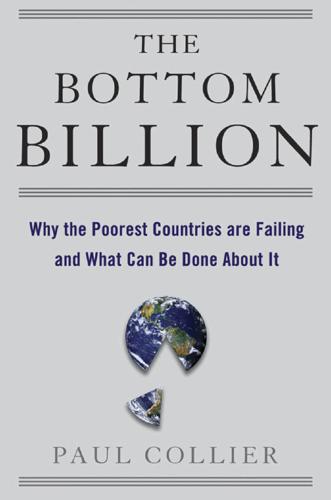
The Bottom Billion: Why the Poorest Countries Are Failing and What Can Be Done About It
by
Paul Collier
Published 26 Apr 2007
If a big increase in aid ruins export competitiveness, then inadvertently it accentuates the very problem that the bottom-billion countries need to put right—making new export activities competitive. Fortunately, trade liberalization is one of the remedies for Dutch disease. Extra aid increases the supply of imports, and so a matching increase in the demand for imports is needed. Only with a matching increase in demand are exporters not disadvantaged by the extra aid. Trade liberalization increases the demand for imports by making them cheaper without the need to appreciate the exchange rate: the taxes imposed on imports are reduced. How much trade liberalization is needed? That depends upon what the aid is used for. If the aid is used to buy foreign expertise, it directly increases the need for foreign exchange, as foreign experts are paid in dollars.
…
But if the aid is used to pay for local schoolteachers, then it has little direct effect on the need for foreign exchange, as schoolteachers are paid in local currency and probably don’t spend much of their salary on imports. So the sort of social uses that NGOs tend to favor generally require more trade liberalization than the growth-oriented uses such as expertise and infrastructure. Christian Aid should be campaigning for African trade liberalization alongside extra aid. I do not know whether the advocacy people in Christian Aid simply have not understood this connection between aid and trade policy. It is not Christian Aid’s fault if trade liberalization doesn’t sell T-shirts as well as depictions of capitalist pigs do, but profiting from popular misconceptions is their fault.
…
Gradually, over the past two decades governments have been coaxed and cajoled into reducing trade barriers. Inevitably, when exposed to external competition these unviable activities curl up and die. I am not, however, an enthusiast for “big bang” trade liberalization: where there is some hope that firms can become globally competitive it may be better to draw their feet gradually closer to the fire than to push them into sudden death. Trade liberalization has got parasitic firms off the backs of ordinary people, but it has not enabled other activities to flourish. For that governments need to change a whole range of policies that between them determine firms’ costs.
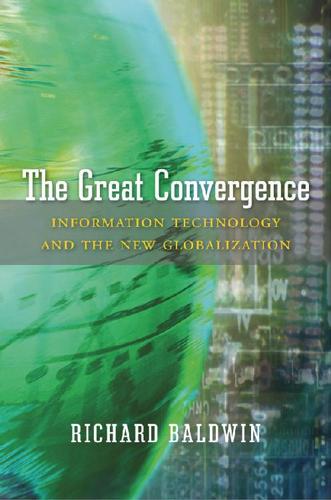
The Great Convergence: Information Technology and the New Globalization
by
Richard Baldwin
Published 14 Nov 2016
Apart from changing the name, the deal institutionalized the GATT’s judicial role in dispute settlement and added some basic “rules of road” for international investment, regulations, intellectual property, and services. DATA SOURCE: Will Martin and Patrick Messerlin, “Why Is It So Difficult? Trade Liberalization Under the Doha Agenda,” Oxford Review of Economic Policy 23, no. 3 (2007): 347–366. Specifically, three liberalization initiatives were launched in 1986. The United States and Canada started talks on a free trade agreement that finished in 1989 (this eventually turned into the North American Free Trade Agreement, or NAFTA). The year 1986 also saw the Europeans both deepen and widen their trade liberalization club, which was by then called the European Union (EU). Spain and Portugal were admitted as new members, and the EU embarked on a deep liberalization of many other economic barriers in the context of the so-called Single Market program.
…
Note that the sum of A7 plus G7 shares remains at approximately 80 percent throughout all three acts. DATA SOURCE: Maddison database (2009 version). Act III: 1946 to 1990. The “resolution” comes in Act III when the trade-cost hero regains her aplomb and triumphs over adversity. For forty years, trade costs are reduced by trade liberalization and transportation innovations. The unbundling of production and consumption advances as never before. This three-act structure is not just an organizational convenience—it is obvious in data, as Figure 16 shows. The technological breakthrough that started this reversal was the steam revolution.
…
Hitler knew he needed goods made outside of Germany, but his solution was to turn international trade into domestic trade by expanding the borders of the Third Reich from the Atlantic to Moscow and from the Arctic Sea to the Black Sea.7 This was the darkest period for trade in modern times—the period when the association between protectionism and really bad things first took hold in policymakers’ minds. Dawn, however, was on the way. Act III: Post–World War II Unbundling The history of post–World War II trade liberalization begins before itself, as so often happens with historical narratives. Regretting the burst of protectionism it sparked in the late 1920s, the United States Congress passed the Reciprocal Trade Agreements Act of 1934. This flipped the United States from a unilateral tariff setter to a reciprocal tariff cutter.
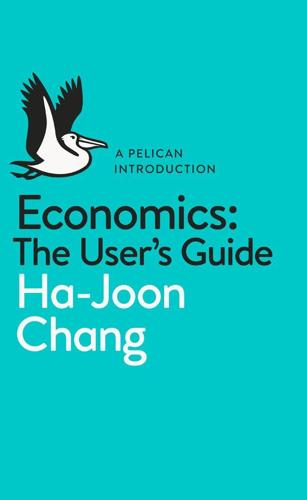
A Pelican Introduction Economics: A User's Guide
by
Ha-Joon Chang
Published 26 May 2014
HOS can present such a positive view of trade liberalization because it assumes that all capital and labour are the same (‘homogeneous’ is the technical term) and thus can be readily redeployed in any activity (technically this is known as the assumption of perfect factor mobility).4 Even the use of the compensation principle cannot quite hide the fact that a lot of people get hurt by trade liberalization Even when they acknowledge that trade liberalization may produce losers, free-trade economists justify trade liberalization by invoking the ‘compensation principle’ (see Chapter 4). They argue that, as trade liberalization makes the whole country better off, the losers from the process can be fully compensated and the winners still have additional income left.
…
In Sub-Saharan Africa, the share has fallen from 17–18 per cent during the 1970s and much of the 1980s to 12 per cent today.15 This premature deindustrialization is largely the result of neo-liberal economic policies implemented in these countries since the 1980s (see Chapter 3).16 Sudden trade liberalization has destroyed swathes of manufacturing industries in those countries. Financial liberalization has allowed banks to redirect their loans to (more lucrative) consumers, away from producers. Policies geared towards inflation control, such as high interest rates and over-valued currencies, have added to the agony of manufacturing firms by making loans expensive and exports more difficult.
…
International trade benefits every country involved. The logic behind the theory of comparative advantage is impeccable – given its assumptions Since Ricardo invented it in the early nineteenth century, the theory of comparative advantage has provided a powerful argument in favour of free trade and trade liberalization, that is, reduction in government restrictions on trade. The logic is impeccable – that is, insofar as we accept its underlying assumptions. Once we question those assumptions, its validity becomes much more limited. Let me explain this, focusing on two key assumptions behind the Heckscher-Ohlin-Samuelson version of the theory of comparative advantage (henceforth HOS), which we first encountered in Chapter 4 as lying at the heart of the modern argument for free trade.2 HOS structurally rules out the most important form of beneficial protectionism by assuming that all countries are equally capable The most important assumption underlying HOS is that all countries have equal productive capabilities – that is, they can use any technology they want.3 According to this assumption, the only reason why a country might specialize in one product rather than another is because that product happens to be produced using a technology that is in line with its relative factor endowment – that is, how much capital and labour it has.
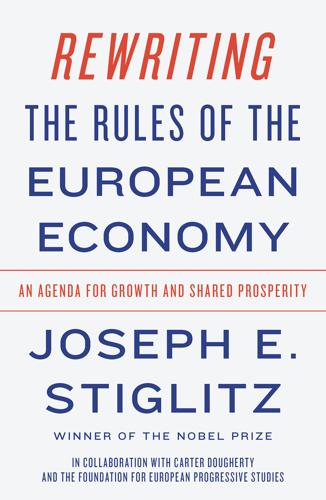
Rewriting the Rules of the European Economy: An Agenda for Growth and Shared Prosperity
by
Joseph E. Stiglitz
Published 28 Jan 2020
The presumption that free trade is welfare-enhancing is simply less true than had been realized. Examining the effects of trade liberalization in an economy that was based on the notion of perfect markets provided less insight into the world as it exists than advocates of globalization had assumed. In short, a limited and well-structured agenda of trade liberalization can enhance societal well-being, but it will do so only if the government takes an active role in ensuring that the benefits of globalization are equitably shared. But many of the same advocates of trade liberalization sought to scale back government, limiting its ability to do what had to be done to make sure that globalization would benefit most of society.
…
The advanced countries, including those of the EU, fell prey to this version of globalization, in large part because of a belief that if the national pie were larger, everyone would be better off. It has long been known that trade liberalization carries the risk of creating distinct groups of winners and losers, and over the last few decades, economists have further developed theories and compiled evidence to fortify this view. Markets for risk (insurance markets) are almost always imperfect, so individuals cannot buy insurance to guard against the most important risks they face, such as job loss. Moreover, trade liberalization often confronts firms with new risks, again against which they cannot buy insurance. Capital markets are also imperfect, so that new enterprises that seek to take advantage of new export opportunities that have opened up as a result of a trade agreement often cannot get the capital they need.
…
Although problems would remain—the GMO example tells us that—they would be small and isolated. But if differences in underlying economic, political, and social models persist, as appears to be the case, how will the global economic system be able to work? The principle that trade is desirable is still valid, though not necessarily the kind of trade liberalization that was imagined a quarter century ago when the WTO began. The world will have to work toward a set of fewer rules, with more discretion, than if all countries subscribed to the same economic and value system. Europe will have to take the lead in forging these new rules. China, it seems, is also attempting to create or expand rifts within the EU.
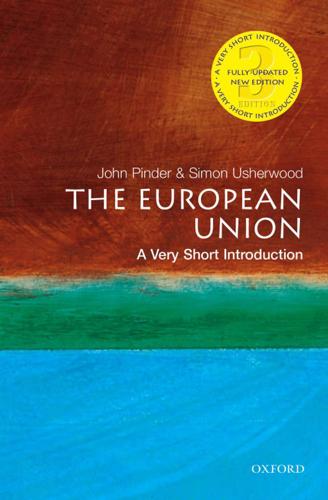
The European Union
by
John Pinder
and
Simon Usherwood
Published 1 Jan 2001
Wielding the common instrument of the external tariff, the Community was becoming, in the field of trade, a power comparable to the United States. President Kennedy had reacted by proposing multilateral negotiations for major tariff cuts. Skilfully led by the Commission, the Community responded positively; and the outcome was cuts averaging one-third, initiating an era in which it was to become the major force for international trade liberalization. Alongside the ups and downs of Community politics, the Court of Justice made steady progress in establishing the rule of law. Based on its treaty obligation to ensure that ‘the law is observed’, in judgments in 1963 and 1964 the Court established the principles of the primacy and the direct effect of Community law, so that it would be consistently applied in all the member states.
…
As a federalist in Monnet’s tradition, his short-list contained projects—single market, single currency, common defence policy, institutional reform—that could be seen as steps in a federal direction. But Thatcher, whose view of federalism was akin to de Gaulle’s, and so was hostile to the currency, defence, and institutional projects, was at the same time a militant economic liberal who saw the single market as an important measure of trade liberalization. European economies had lost momentum during the hard times of the 1970s and all the governments accepted the single market project as a way to break out of what was then called eurosclerosis. The project was strongly backed by the more dynamic firms and the main business associations, especially since the Luxembourg ‘compromise’ had served to let non-tariff barriers to trade build up during the period.
…
By the end of the 1990s, moreover, the twin pressures of enlargement to the East and negotiations in the newly established World Trade Organization (WTO) were forcing the EU into a more structural reform process. New member states, with their large agricultural sectors, were set to drive up costs very significantly, while the need to secure agreement in WTO trade liberalization negotiations was placing increasing pressure on reductions in levels of agricultural support. Consequently, the Union agreed substantial cuts for some products in 1999, as part of wider budgetary negotiations, as well as introducing the notion of a multifunctional CAP, i.e. one that extends into the social and environmental dimensions that surround farming.

The Making of Global Capitalism
by
Leo Panitch
and
Sam Gindin
Published 8 Oct 2012
In addition to becoming “the primary coordinator of US trade liberalization efforts” inside the American state, the USTR became—especially through thirty-one advisory committees with over 700 members from every industrial and agricultural sector, serving two-year terms—“the principle vehicle for translating capitalist interests into coherent trade policy positions.”7 But no less crucial for the “fast track” passage of trade legislation, and for anticipating and deflecting Congressional opposition despite considerable economic dislocation and rising unemployment, was the increasing juridification of the way domestic political problems arising from trade liberalization were handled. As Chorev has shown, the changes made under the 1974 Trade Act to expedite appeals for “adjustment assistance” for workers and firms affected by increased imports was indicative of “the willingness of the American government to take on itself the cost of trade liberalization rather than imposing it on others”—while the new quasi-judicial procedures established for anti-dumping measures and countervailing duties were designed to “restructure protectionist measures in a way that would limit their negative effects.”
…
Not only was it, as Clayton’s biographer put it, “the most sweeping trade agreement—in terms of tariff reduction and the number of goods and countries involved—in the history of the industrial world”;19it also allowed for flexibility in both bilateral and multilateral negotiations, where “the procedures of negotiation preserved the political advantage of the rich countries and permitted American dominance.”20As a commercial trade agreement not encumbered by the proposed charter for the ITO, the GATT set out long-term liberalizing goals, and set ground rules for non-discriminatory treatment of national and international investors while leaving ample scope for the type of temporary trade restrictions that were agreed with the British in the summer of 1947.21 US trade policy, which would henceforth no longer go under the name of the Open Door, remained primarily “shaped by domestic influences” rather than an “embedded” international regime.22But those influences were themselves increasingly structured by the way the American state had been internationalized and the responsibility it took upon itself for developing capitalism on a global scale after World War II. In the postwar period, the institutional restructuring introduced in the 1934 Trade Act was rendered much more significant than it could have been during the Depression, as successive administrations pursued “a general process of trade liberalization with only exceptional treatment to ‘special’ cases” (which were left to the play of “industry-specific pressures” in Congress).23And now that it was recognized, even in the State Department, that accumulation at home was only marginally dependent on exports, trade strategy was determined above all by the commitment to ensuring that what Truman called “the future pattern of economic relations” internationally would be conducive to the expansion of “free enterprise” in ways that would eventually allow for the free movement of capital.
…
The cost to the US economy of the Volcker shock’s renewal of confidence in the dollar was not only that the strong dollar pulled in imports, but also that it made US exports—which had grown at 8 percent annually in the 1970s (almost as fast as Japan’s)—more expensive. The growth of US exports fell to 2 percent annually from 1980 to 1985, and in conjunction with the impact of Japan’s export success on US manufacturing jobs this produced a protectionist backlash that threatened the trajectory towards trade liberalization that had been so central to the making of global capitalism since World War II. The growth of Japanese small car exports to the US, while 200,000 workers were laid off by GM, Ford, and Chrysler, produced the Congressional pressures that led the Reagan administration in 1981 to negotiate “voluntary export restraints” that effectively set quotas on the number of cars Japan could export to the US each year.
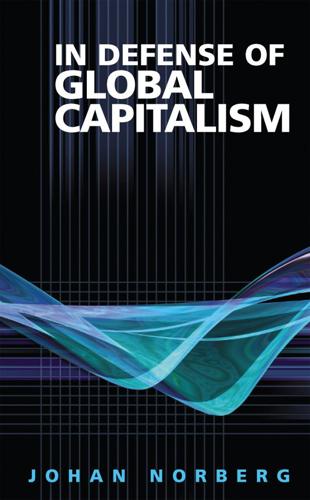
In Defense of Global Capitalism
by
Johan Norberg
Published 1 Jan 2001
‘‘The goal of this revolution,’’ according to Gray, ‘‘was to insulate neo-liberal policy irreversibly from democratic accountability in political life.’’4 Some pundits—among them Robert Kuttner, editor of The American Prospect, and economist Joseph Stiglitz—even characterize free-market advocacy as a kind of quasireligious cult, which they call ‘‘market fundamentalism.’’ Deregulation, privatization, and trade liberalization, however, were not invented by ultra-liberal ideologues. True, there were political leaders—Reagan and Thatcher, for instance—who had been inspired by economic liberalism. But the biggest reformers were communists in China and the Soviet Union, protectionists in Latin America, and nationalists in Asia.
…
That makes it hard to separate the effects of one policy from the effects of another.8 The problems of measurement are real ones, and results of this kind always have to be taken with a grain of salt, but it remains interesting that, with so very few exceptions, those studies point to great advantages with free trade. All the same, they have to be supplemented with theoretical analysis and case studies of individual countries before and after trade liberalization measures. Such studies also quite clearly bring out the advantages of free trade. The economist Sebastian Edwards maintains that the important thing is not to devise exact, objective measurements but to test many different variables, so as to see whether a pattern emerges. Using 8 different yardsticks of openness, he has made 18 calculations based on several data sets and using a variety of calculation methods.
…
There does not seem to be any strong and unambiguous connection between increased trade and changes in equality—except, possibly, a slightly positive connection. Certain groups lose out by free trade, but they are as likely to be the protected rich as the poor. Changes in equality depend primarily on overall policy. Results in trade-liberalizing countries varied during the 1990s: in China, inequality increased, in Costa Rica and Vietnam it remained constant, and in countries like Ghana and Thailand it diminished. After many years of a communist-planned economy and deepest poverty, Vietnam since the end of the 1980s has introduced free trade reforms and measures of domestic liberalization.
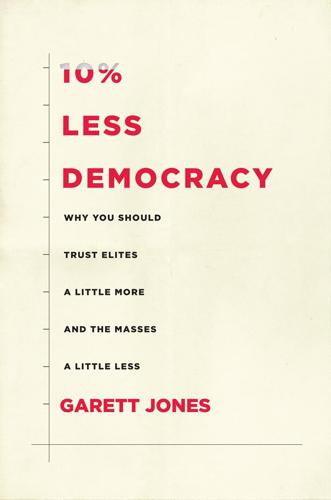
10% Less Democracy: Why You Should Trust Elites a Little More and the Masses a Little Less
by
Garett Jones
Published 4 Feb 2020
House of Representatives: vs. European Union, 151; vs. Senate, 33–34, 110; votes on trade liberalization, 33 U.S. presidents: and election year economy, 30–31, 194n5; term of, 188; and trade disputes, 34, 194n12 U.S. Senate, 109–10, 141, 180; backloading the pork in, 29–30; vs. European Union, 151; vs. House of Representatives, 33–34, 110; impact of looming elections on Senators, 3–4, 29–30, 31, 33, 35; six-year terms, 146–47; staggered elections for, 146–47, 179; unanimous consent in, 159–60; votes on trade liberalization, 33 U.S. state senators: legislative productivity among, 38–39 U.S. Supreme Court: lifetime tenure of members, 64, 65; as undemocratic, 64 Vanhanen, Tatu: Index of Democratization, 19 Van Prooijen, Jan-Willem, 98–100 Venezuela: health care in, 104 Verba, Sidney: on education, 109 voters: attitudes regarding cheap money, 53, 56; attitudes regarding currency devaluation, 36; attitudes regarding inflation, 30, 52, 53; attitudes regarding recent past, 4, 29–30; educational level of, 95–98, 100, 105–8, 110–12, 114–17, 188; elite control vs. control by, 1, 5, 42–43, 44–45, 52, 53, 56, 63–64, 65–66, 72, 76, 78–79, 80, 83, 84–85, 86–91, 93–94, 110, 119, 127, 136, 148–49, 152–53, 154–56, 167–68, 173, 177–79, 181–83, 186; forgetfulness among, 29–31; as informed, 6–7, 14, 96–98, 102, 103, 112, 179; and labor market policies, 35; older vs. younger, 106–7; as protectionist, 33; public credit with, 28–29; and real per capita GDP, 30; relations with judges, 66–68; restrictions on right to vote, 95–98, 101–2, 104–12, 113–17; short memories of, 29–30; women as, 105 Wagner, W.
…
Economist Paola Conconi of the Université Libre de Bruxelles and her coauthors established this fact in an aptly titled paper published in 2014: “Policymakers’ Horizon and Trade Reforms: The Protectionist Effect of Elections.” They provide anecdotal evidence for their case in a footnote: “For example, during her first [term] as senator from New York state, Hillary Clinton voted on six trade liberalization bills, four times in favor (during the first four years) and twice against (during the last two years).”⁹ Politicians act differently when the election looms. They don’t just show up to more county fairs and church services; they also are more reluctant to support one policy reform that experts overwhelmingly agree on: freer international trade.
…
On the productivity statement, two-thirds agreed or strongly agreed, and on unemployment rates, half agreed and many abstained or were uncertain, but in neither case did more than 5% of respondents disagree with the statement.¹⁵ The economists’ consensus on labor market reforms isn’t as overwhelming as with trade liberalization, but almost all the weight is on one side—the side of market-friendly, liberal economics. So how do looming elections fit into this? Rickard and Caraway checked to see if the IMF imposed fewer labor market liberalization reforms when an election was looming. Financial crises are somewhat random, so if they happen when elections are years away, does the IMF demand lots of pie-growing, productivity-increasing reforms?

The Locavore's Dilemma
by
Pierre Desrochers
and
Hiroko Shimizu
Published 29 May 2012
It must foster the production of substitutes irrespective of [economic] considerations. It cannot do without full government control of production because the selfishness of the individual citizens would thwart the plans of the leader. Even in peacetime the commander-in-chief must be entrusted with economic dictatorship.” 52 Many economists otherwise supportive of trade liberalization have also been willing to make an exception to their stance when national security was thought to be at stake. Perhaps the most famous was Adam Smith, who observed, “defence… is of much more importance than opulence.”53 In short, Smith implied, autarkic policies come at a significant price, but it pales in comparison to starvation in time of conflicts.
…
Even more remarkable, Danish crop growers expanded their production by a factor of almost three as the five-year average of all crops expressed in a measurement known as barley equivalent (i.e., as if they had been converted to barley) went from around 27 million tons to no less than 74 million tons during this period.65 By 1938, the British and German markets absorbed more than 76% of Danish exports, which were mostly made up of livestock products such as butter, eggs, lard, and bacon. As Karl Brandt argued in 1945, far from proving the assertions of agricultural protectionists that all trade liberalization “would financially ruin millions of European family farms and reduce the farmers to abject misery and poverty… [or a] general depression of their living standards,” Danish agriculture from the middle of the 19th century to the eve of World War II illustrated that, by embracing free trade, Danish farmers had not only learned to “discover the fields of production in which they had the best opportunity to compete successfully with the farmers of the world, but they also were able to develop their own abilities, their agricultural production and marketing plants to almost functional perfection,” the result being “a most remarkable degree of culture and the art of decent living.”66 The Nazi invasion of Denmark in April 1940, however, quickly cut off the importation of foreign oilseeds and grains along with access to the British market.
…
As estimated by the authors of a recent report from the Food and Agriculture Organization of the United Nations (FAO) on humanity’s capacity to feed itself in 2050, even if most of today’s less advanced economies are expected to provide for most of their future needs by expanding their own production, they would still need to double their net imports of cereals, from 135 million metric tons in 2008–09 to 300 million by mid-century, and therefore require not only infrastructure improvements, but also a “global trading system that is fair and competitive.”78 Paradoxically, a world where in a few decades 9 billion people could afford to purchase their food from 90 million highly efficient farmers using the planet’s most productive locations would be incredibly more food secure than one in which a few billion farmers feed their neighbors but lack the infrastructure to ship their products over long distances. Food insecurity is mainly due to a lack of income opportunities rather than geography, as poor and hungry people cannot afford to purchase food from the international market. Economic development through trade liberalization is what food security should really be about.79, 80 6 Myth #5: Locavorism Offers Tastier, More Nutritious, and Safer Food Of all the frauds practiced by mercenary dealers, there is none more reprehensible, and at the same time more prevalent, than the sophistication1 of the various articles of food.
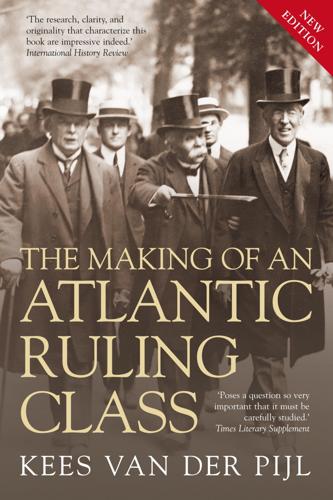
The Making of an Atlantic Ruling Class
by
Kees Van der Pijl
Published 2 Jun 2014
In late 1961, together with Christian Herter and Will Clayton, Ball had proposed to make an Atlantic Partnership the basis for trade liberalization and the coordination of development aid. Now he repeated the advice. Ball stressed the value of the newly-formed OECD for coordinating economic policy between the North Atlantic states and for jointly organizing their intervention in the underdeveloped world via aid programmes. These two goals replaced the trade liberalization objective advanced by the original OEEC and reflected the structural growth of state intervention as well as the projected widening of the international circuit of finance capital beyond the North Atlantic area.96 On 4 July, finally, the President made his famous statement that the United States was ‘ready for a “Declaration of Interdependence” ’ and was ‘prepared to discuss with a United Europe the ways and means of forming a concrete Atlantic partnership.’97 Concentrating the decisive military assets in American hands in the meantime was a crucial aspect of the Partnership concept.
…
In Link’s words, Wilson in this year ‘became almost a new political creature, and under his leadership a Democratic Congress enacted the most sweeping and significant progressive legislation in the history of the country up to that time’.27 Before the actual election campaign started, rural credits regulation and labour protection were enacted, and the Presidential support for an eight-hour day was secured. Business interests were compensated by a degree of protectionsim, modifying the earlier trade liberalism. Having manoeuvred himself into a strong position by asking for a popular mandate for peace and cementing approval with progressive legislation, Wilson proceeded to translate the results into freedom of manoeuvre in foreign affairs by publicly stressing the ‘popular’ nature of his international proposals.
…
It was promptly repealed when the Democrats regained control of both houses in the November election.74 The embargoes against Eastern Europe and the relatively weak effort at penetrating the dependencies of European imperialism lent free-trade policy its markedly Atlantic accent. Free trade was an important element in the requirements placed before the recipient Marshall states by Undersecretary Clayton at the Paris conference in September 1947. Clayton’s list, consisting essentially of a promise of regional self-sufficiency in four years, trade liberalization, and steps to achieve monetary and financial stability, which was repeated by the respective US ambassadors to each of the sixteen governments, showed the weight Washington attached to the liberalization aspect. At the same time, it testified to the narrowing of the wartime global scope to Atlantic dimensions.
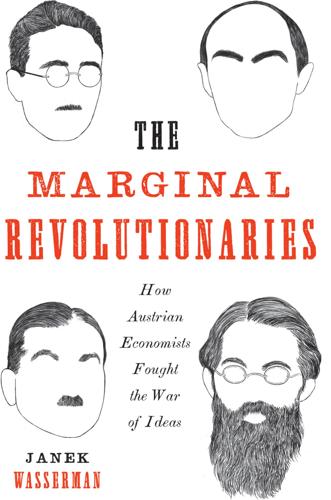
The Marginal Revolutionaries: How Austrian Economists Fought the War of Ideas
by
Janek Wasserman
Published 23 Sep 2019
Moving beyond the idea of limiting an already-existing state, neoliberals like the Austrians imagined how to create a state that protected economic freedom from government planners, international governing institutions, and democratic polities alike.20 The Austrians thus helped build postwar neoliberalism, which, in the name of freedom, prioritized the creation of a market-based society sustained by a strong state, the rule of law, and limited democratic involvement. They also contributed to the formation of a number of transnational epistemic communities that advocated trade liberalization, floating exchange rates, state deregulation, and privatization. Austrians played instrumental roles in these communities by persuading institutional actors, state and nonstate, to follow their prescriptions in times of uncertainty and crisis. Through GATT, the Bellagio Group, the RAND Corporation, and others, Haberler, Machlup, and Morgenstern proved adept at behind-the-scenes policy interventions that shaped economic liberalization and Cold War reasoning in the 1960s and 1970s.
…
Meanwhile in New York City, Mises faced similar challenges. He had to wait nearly a decade to establish a stable circle. When he did, the Mises-Kreis little resembled its predecessor, producing a different, more dogmatic “Austrian economics.” Haberler and Machlup took on leadership roles in incipient debates on globalization and trade liberalization by spearheading new policy initiatives. Haberler’s recasting of international trade signaled the beginning of a new “liberal international economic order.” Machlup starred in “reforming the world monetary system,” propelling the international monetary debates that overturned the Bretton Woods order.
…
The fund-raising efforts of Hunold and Luhnow ensured continued viability by providing the cash to make all-expenses-paid meetings possible.9 In recent years, the MPS has become associated with a neoliberalism that advocates “market fundamentalism” predicated on neoclassical economics, limited government, international trade liberalization, and globalization. In its formative years, it looked less single-minded and dogmatic. Within the society, there were staunch antistatists like Mises. There were also German ordoliberals like Röpke and Rüstow, who saw the state serving a central role in the creation of markets and the maintenance of law, order, and prosperity.
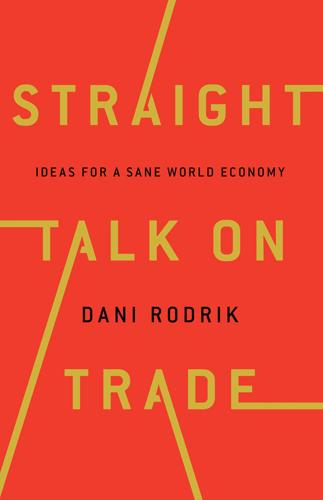
Straight Talk on Trade: Ideas for a Sane World Economy
by
Dani Rodrik
Published 8 Oct 2017
The guiding philosophy behind the Bretton Woods regime, which governed the world economy until the 1970s, was that nations—not only the advanced nations but also the newly independent ones—needed the policy space within which they could manage their economies and protect their social contracts. Capital controls, restricting the free flow of finance between countries, were viewed as an inherent element of the global financial system. Trade liberalization remained limited to manufactured goods and to industrialized nations; when imports of textiles and clothing from low-cost countries threatened domestic social bargains by causing job losses in affected industries and regions, these, too, were carved out as special regimes. Yet trade and investment flows grew by leaps and bounds, in no small part because the Bretton Woods recipe made for healthy domestic policy environments.
…
The Petri-Plummer model is squarely rooted in decades of academic trade modeling, which makes a sharp distinction between effects that are microeconomic (that shape resource allocation across sectors) and those that are macroeconomic (that relate to overall levels of demand and employment). In this tradition, trade liberalization is a microeconomic “shock” that affects the composition of employment, but not its overall level. Trade economists tend to analyze trade agreements in such terms, which renders the Petri-Plummer model more congenial to them. By comparison, the Capaldo framework lacks sectoral and country detail; its behavioral assumptions remain opaque; and its extreme Keynesian assumptions sit ill at ease with its medium-term perspective.
…
Compensation also ensures buy-in from broader constituencies and should be good politics. Prior to the welfare state, the tension between openness and redistribution was resolved either by large-scale emigration of workers or by reimposing trade protection, especially in agriculture.2 With the rise of the welfare state, the constraint became less binding, allowing for more trade liberalization. Today the advanced countries that are the most exposed to the international economy are also those where safety nets and social insurance programs—welfare states—are the most extensive.3 Research in Europe has shown that losers from globalization within countries tend to favor more active social programs and labor-market interventions.4 If opposition to trade has not become politically salient in Europe today, it is in some part because such social protections remain strong there, despite having weakened in recent years.
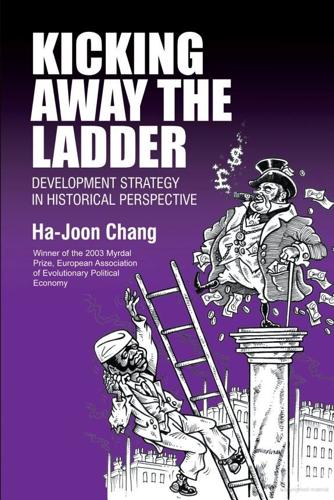
Kicking Awaythe Ladder
by
Ha-Joon Chang
Published 4 Sep 2000
Nowadays, some economists even believe that the Great Depression was caused primarily by these tariffs'. 3 The likes of Germany and Japan erected high trade barriers and also started creating powerful cartels, which were closely linked with fascism and these countries' external aggression in the following decades.4 The world free trade system finally ended in 1932, when Britain, hitherto its champion, succumbed to temptation and reintroduced tariffs. The resulting contraction and instability in the world economy, and then the Second World War, destroyed the last remnants of the first Liberal world order. After the Second World War, so the story goes, some significant progress was made in trade liberalization through the early GATT (General Agreement on Trade and Tariffs) talks. However, dirigiste approaches to economic management dominated the policy-making scene until the 1970s in the developed world, and until the early 1980s in developing countries (as well as the Communist world until its collapse in 1989).
…
It most certainly could not have flourished, as it has done, both in these states, and in France, Belgium, and Switzerland, through the fostering bounties which the highpriced food of the British artisan has offered to the cheaper fed manufacturer of those countries'.45 Symbolic though the repeal of Corn Law may have been, the real shift to free trade only happened in the 1850s. It was only after Gladstone's budgets of the 1850s, and especially that of 1860, in conjunction with the Anglo-French free trade treaty (the so-called Cobden-Chevalier Treaty) signed that year, that most tariffs were eliminated. The following passage succinctly describes the magnitude of trade liberalization that happened in Britain during the 1850s. 'In 1848, Britain had 1,146 dutiable articles; by 1860 she had forty-eight, all but twelve being revenue duties on luxuries or semi-luxuries. Once the most complex in Europe, the British tariff could now be printed "on half a page of Whitaker's Almanack" It is important to note here that Britain's technological lead that enabled this shift to a free trade regime had been achieved 'behind high and long-lasting tariff barriers'.47 It is also important to note that the overall liberalization of the British economy that occurred during the mid-nineteenth century, of which trade liberalization was just a part, was a highly controlled affair overseen by the state, and not achieved through a laissez-faire approach.48 It should also be pointed out that Britain 'adopted Free Trade painfully slowly: eighty-four years from The Wealth of Nations to Gladstone's 1860 budget; thirty-one from Waterloo to the ritual victory of 1846'.49 Moreover, the free-trade regime did not last long.
…
Once the most complex in Europe, the British tariff could now be printed "on half a page of Whitaker's Almanack" It is important to note here that Britain's technological lead that enabled this shift to a free trade regime had been achieved 'behind high and long-lasting tariff barriers'.47 It is also important to note that the overall liberalization of the British economy that occurred during the mid-nineteenth century, of which trade liberalization was just a part, was a highly controlled affair overseen by the state, and not achieved through a laissez-faire approach.48 It should also be pointed out that Britain 'adopted Free Trade painfully slowly: eighty-four years from The Wealth of Nations to Gladstone's 1860 budget; thirty-one from Waterloo to the ritual victory of 1846'.49 Moreover, the free-trade regime did not last long.
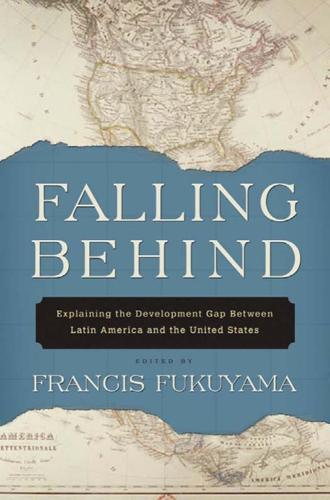
Falling Behind: Explaining the Development Gap Between Latin America and the United States
by
Francis Fukuyama
Published 1 Jan 2006
Academics outside and inside Korea were concerned that Korean cultural values might prove to be an insurmountable obstacle that would impede economic growth. But South Korea, like Taiwan, was able to modify its economic strategy after the 1950s, just as the United States had done after World War II by establishing an international system for the liberalization of trade. While some countries carried out the necessary structural reforms for trade liberalization, Latin American countries opted not to do so. There were, however, two other major areas in which Latin America and East Asia diverged: agrarian reform and human capital development. At the end of World War II, the United States imposed drastic agrarian reform on Japan and its former colony, South Korea; the Nationalist Party government in Taiwan also carried out major agrarian reform.
…
It is interesting and ironic that it is easier to open a new business in the People’s Republic of China than in Mexico or Argentina, and three times easier in communist China than in Brazil. It should come as no surprise that the countries that facilitate the creation of new businesses, which generate employment and income, grow more. There are, however, some positive cases in Latin America. Mexico’s trade liberalization program, which allowed its subsequent entry to the North American Free Trade Agreement (NAFTA), generated quick growth in the sectors linked to the international economy. Despite table 4.6 Number of Days Required to Start Up a New Firm, 2003 Australia United States Puerto Rico Chile Japan South Korea Thailand People’s Republic of China Mexico Argentina Brazil 2 4 6 28 31 33 42 46 51 68 152 Source: World Development Indicators 2004 ( Washington, DC: World Bank, 2004).
…
The democratic transitions were nearing completion, with the last in Chile (1990) about to take place. At a conference at the Institute for International Economics in 1989, a group of economists identified 10 key reforms that were essential to restore economic growth.23 The now well-known shopping list dubbed the Washington Consensus included fiscal discipline, trade liberalization, tax reform, a competitive exchange rate regime, privatization, liberalization of foreign direct investment inflows, market-determined interest rates, and deregulation. And there were two additional priorities: one focused on reducing subsidies and redirecting government spending toward education, health, and infrastructure development; the second was the enforcement of property rights.
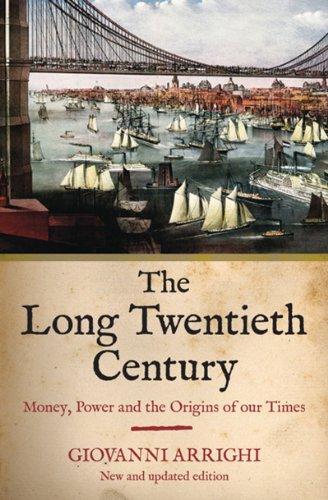
The Long Twentieth Century: Money, Power, and the Origins of Our Times
by
Giovanni Arrighi
Published 15 Mar 2010
The free trade ideologized and practiced by the US government throughout the period of its hegemonic ascendancy has been, rather, a strategy of bilateral and multilateral intergovernmental negotiation of trade liberalization, aimed primarily at opening up other states to US commodities and enterprise. Nineteenth-century beliefs in the “selfregulating market” — in Polanyi’s (1957) sense — became the official ideology of the US government only in the 1980s under the Reagan and Bush administrations in response to the hegemonic crisis of the 1970s. Even then, however, the unilateral measures of trade liberalization actually undertaken by the US government were very limited. In any event, free trade played no role in the formation of the Cold War world order.
…
As previously noted, what eventually came into being — the General Agreement on Tariffs and Trade (GATT) created in 1948 — was no more than a forum for the bilateral and multilateral negotiation of reductions in tariffs and of other restrictions on international trade. It left the pace of trade liberalization in the hands of national governments. Although the GATT no doubt helped in reconstituting a multilateral trading system, trade liberalization followed rather than led the world economic expansion of the 1950s and 1960s, in sharp contrast to Britain’s unilateral adoption of free trade which preceded and contributed decisively to the mid-nineteenth-century expansion of world trade and production.
…
But as long as the US government wielded effective control over world liquidity — as it did throughout the 1950s and most of the 1960s — it could use this control to promote and sustain a generalized expansion of world trade with few precedents in capitalist history (see chapter 4). Similarly, the chief instrument of world market formation under US hegemony, the General Agreement on Trade and Tariffs (GATT), left in the hands of governments in general, and of the US government in particular, control over the pace and direction of trade liberalization. By unilaterally liberalizing its foreign trade in the nineteenth century, Britain had ipso facto forgone the possibility of using the prospect of such a liberalization as a weapon in forcing other governments to liberalize their own trade. By never renouncing the use of this weapon through unilateral free trade, the United States instituted a trade regime that was far less “generous” towards the rest of the world than the British regime.
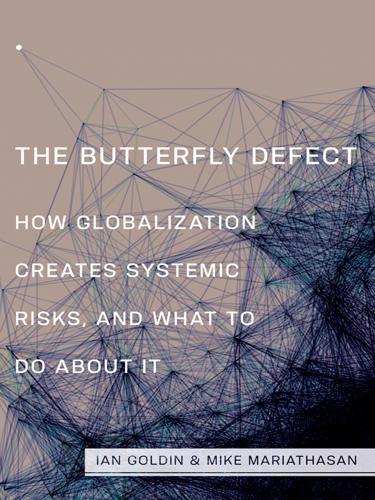
The Butterfly Defect: How Globalization Creates Systemic Risks, and What to Do About It
by
Ian Goldin
and
Mike Mariathasan
Published 15 Mar 2014
Divided Nations: Why Global Governance Is Failing, and What We Can Do about It Globalization for Development: Meeting New Challenges Exceptional People: How Migration Shaped Our World and Will Define Our Future The Case for Aid The Economics of Sustainable Development Economic Reform, Trade and Agricultural Development Modelling Economy-wide Reforms Trade Liberalization: Global Economic Implications Open Economies The Future of Agriculture Economic Crisis: Lessons from Brazil Making Race THE BUTTERFLY DEFECT How Globalization Creates Systemic Risks, and What to Do about It IAN GOLDIN AND MIKE MARIATHASAN PRINCETON UNIVERSITY PRESS PRINCETON AND OXFORD Copyright © 2014 by Princeton University Press Published by Princeton University Press, 41 William Street, Princeton, New Jersey 08540 In the United Kingdom: Princeton University Press, 6 Oxford Street, Woodstock, Oxfordshire OX20 1TW press.princeton.edu All Rights Reserved Library of Congress Cataloging-in-Publication Data Goldin, Ian, 1955– The butterfly defect : how globalization creates systemic risks, and what to do about it / Ian Goldin, Mike Mariathasan.
…
Antweiler, Copeland, and Taylor’s landmark study, referred to previously, also suggests that economic growth “drives concentrations down by 1.25–1.5 percent via a technique effect.”37 The authors concluded that “trade-induced technique and scale effects imply a net reduction in pollution from these sources,” meaning that “freer trade appears to be good for the environment.”38 Ian Goldin and Alan Winters, on the other hand, along with Cole and Elliott, stress that the net effect can be different depending on the characteristics of the pollutant: in addition to the detrimental net effects of nitrogen oxide and carbon dioxide, Cole and Elliott report that “technique effects are dominating scale effects for SO2 and BOD.”39 Thus we see that in the case of some pollutants, “pollution declines with per capita income,” though the authors stress that this is not universal.40 In the same spirit, and in contrast to his findings with respect to air pollutants, Junyi Shen observes that “for water pollutants (COD, arsenic, and cadmium) trade liberalization decreases emissions.”41 Using an instrumental variables approach to address estimation issues related to the endogeneity of trade, Jeffrey Frankel and Andrew Rose show “that trade tends to reduce three measures of air pollution” and, more precisely, that “statistical significance is high for concentrations of SO2, moderate for NO2, and lacking for particulate matter.”42 Like Antweiler, Copeland, and Taylor, they conclude that “there is little evidence that trade has a detrimental effect on the environment.”43 Arriving at a similar conclusion, André Dua and Daniel Esty report that, for the Asia–Pacific region, “economic expansion and environmental protection can, in fact, be made mutually supportive.”44 This is an example of the scale effect and relates to what economists term the intensive margin.
…
Everything else being equal, this increase in the scale of economic activity and energy use will lead to higher levels of greenhouse gas emissions.” See WTO, 2013c, “The Multilateral Trading System and Climate Change,” World Trade Organization, accessed 1 December 2013, http://www.wto.org/english/tratop_e/envir_e/climate_change_e.pdf. 31. Junyi Shen, 2008, “Trade Liberalization and Environmental Degradation in China,” Applied Economics 40: 997–1004, quote on 997. 32. Pongsiri et al., 2009, 945. 33. Ibid. 34. L. Philip Lounibos, 2001, “Invasions by Insect: Vectors of Human Disease,” Annual Review of Entomology 47: 233–266, quote on 233. 35. Ibid. 36. Authors’ calculation using producer support estimates for OECD countries relating to 2007–11.
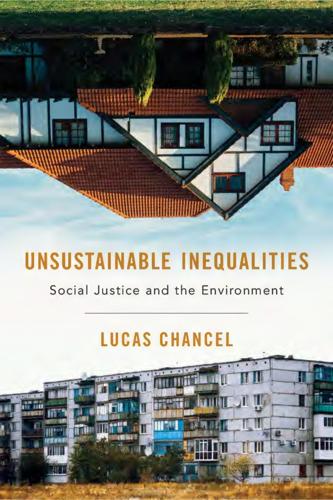
Unsustainable Inequalities: Social Justice and the Environment
by
Lucas Chancel
Published 15 Jan 2020
TRADE GLOBALIZATION Another explanation that is often put forward holds that the increase in inequality is due to the effects of trade globalization, which is to say the growing proportion of world production that crosses international boundaries.15 The opening up of commerce through the General Agreement on Tariffs and Trade (GATT) in 1947, and subsequently in the framework of the World Trade Organization (WTO) in the 1990s, put low-skilled workers in developed countries in competition with those in emerging and developing countries. The increase in inequality in developed countries was predicted and explained more than seventy years ago by one of the most important results of international trade theory, the Stolper-Samuelson theorem.16 Trade liberalization, the theorem states, leads to increased demand for unskilled workers in the countries of the South (where they are supposed to be “abundant”) and a relatively greater demand for skilled workers in the countries of the North (for the same reason), which leads in turn to an increase in inequality in rich countries and a corresponding reduction of inequality in poor countries.17 Subsequently it became necessary to explain why Stolper and Samuelson’s model had been contradicted by events, since trade did not take place to the extent forecast between countries richly endowed with skilled labor in the North and countries richly endowed with unskilled labor in the South, but predominantly between countries in the North instead.
…
The increase in inequality in developed countries was predicted and explained more than seventy years ago by one of the most important results of international trade theory, the Stolper-Samuelson theorem.16 Trade liberalization, the theorem states, leads to increased demand for unskilled workers in the countries of the South (where they are supposed to be “abundant”) and a relatively greater demand for skilled workers in the countries of the North (for the same reason), which leads in turn to an increase in inequality in rich countries and a corresponding reduction of inequality in poor countries.17 Subsequently it became necessary to explain why Stolper and Samuelson’s model had been contradicted by events, since trade did not take place to the extent forecast between countries richly endowed with skilled labor in the North and countries richly endowed with unskilled labor in the South, but predominantly between countries in the North instead. Moreover, most economists long continued to insist that the negative trade effects predicted by the theorem were limited, if not in fact nonexistent, in industrialized countries, chiefly because trade liberalization enabled low-wage workers in these countries to purchase less expensive goods, which therefore strengthened their purchasing power. Not quite fifteen years after the publication of his influential 1994 book on international trade, Paul Krugman did an about-face, saying that he had not taken into account all the relevant information in his earlier work (for which, by a twist of fate, he was shortly thereafter to be awarded the Nobel Prize).18 This work, he now claimed, needed to be reinterpreted in the light of new data on the evolution of inequality.19 Owing to the strong market penetration of goods from emerging countries since the 1990s, trade globalization could now be seen to be a good candidate for explaining the rise in inequality in the industrialized world.
…
In particular, they can refuse to sign trade agreements with countries that do not meet CO2e emission reduction goals. The EU-Canada Comprehensive Economic and Trade Agreement (CETA), which provisionally entered into force in September 2017, does the opposite, however, by making climate protection a secondary objective by comparison with trade liberalization. Another option is to institute a border carbon adjustment (BCA)—a levy on the carbon content of imported products—with a view to protecting domestic industry against foreign companies that are not bound by stringent targets for reducing greenhouse gas emissions. In this way an equitable relationship between domestic and foreign companies could be reestablished.
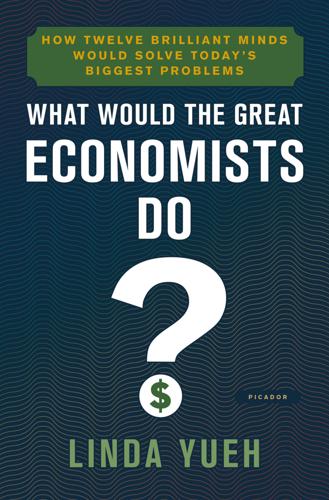
What Would the Great Economists Do?: How Twelve Brilliant Minds Would Solve Today's Biggest Problems
by
Linda Yueh
Published 4 Jun 2018
Since the reign of William and Mary, the British government had offered financial support to its prime constituency, namely landowners. British cereals were among the most expensive in Europe, yet until 1760 Britain was able to be a major grain exporter owing to government subsidies.15 In the late eighteenth century there was a brief period of trade liberalization between Britain and France, but this ended with the Napoleonic Wars. This was followed by the reinstatement of the Corn Laws in 1815. Trade was not very free for much of the first half of the nineteenth century. Adam Smith had excluded food in his defence of free trade. Ricardo, by contrast, was not too concerned about depending on foreign countries for food, noting that even during the Napoleonic Wars, France had continued to export corn to Britain after lobbying by French exporters.
…
There are also ‘manu-services’, such as the output of firms in the engineering and software sectors that produce both goods and services, and these are easily misclassified by statisticians. If services were measured more accurately, perhaps we could worry a bit less about the trade deficit. There is also huge scope for growth in the export of services. Unlike in manufacturing, post-war global trade liberalization has not progressed much in services. Nearly all of the global trade in goods is covered by a wide-reaching multilateral agreement overseen by the World Trade Organization (WTO). By contrast, services haven’t seen the same degree of opening up of markets. Service-sector liberalization would help ameliorate Britain’s and America’s trade deficits since they are among the largest services economies.
…
So, in an imperfect global trade regime, America’s and Britain’s comparative advantage hasn’t been able to deliver all of the benefits postulated by Ricardo. He would also be concerned about the lack of a level playing field in international trade. Ricardo would have pushed harder for the opening of global markets, particularly the relatively closed services sector. Services trade liberalization would help both America’s and the UK’s trade position and the global economy too, since over 70 per cent of world GDP consists of services. With greater opening of trade and investment in services, Britain’s deficit position may improve if its dominant sector can gain greater traction in world markets.
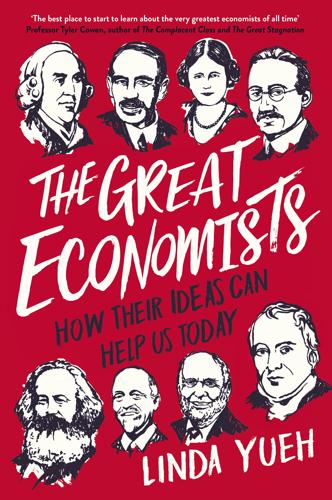
The Great Economists: How Their Ideas Can Help Us Today
by
Linda Yueh
Published 15 Mar 2018
Since the reign of William and Mary, the British government had offered financial support to its prime constituency, namely landowners. British cereals were among the most expensive in Europe, yet until 1760 Britain was able to be a major grain exporter owing to government subsidies.15 In the late eighteenth century there was a brief period of trade liberalization between Britain and France, but this ended with the Napoleonic Wars. This was followed by the reinstatement of the Corn Laws in 1815. Trade was not very free for much of the first half of the nineteenth century. Adam Smith had excluded food in his defence of free trade. Ricardo, by contrast, was not too concerned about depending on foreign countries for food, noting that even during the Napoleonic Wars, France had continued to export corn to Britain after lobbying by French exporters.
…
There are also ‘manu-services’, such as the output of firms in the engineering and software sectors that produce both goods and services, and these are easily misclassified by statisticians. If services were measured more accurately, perhaps we could worry a bit less about the trade deficit. There is also huge scope for growth in the export of services. Unlike in manufacturing, post-war global trade liberalization has not progressed much in services. Nearly all of the global trade in goods is covered by a wide-reaching multilateral agreement overseen by the World Trade Organization (WTO). By contrast, services haven’t seen the same degree of opening up of markets. Service-sector liberalization would help ameliorate Britain’s and America’s trade deficits since they are among the largest services economies.
…
So, in an imperfect global trade regime, America’s and Britain’s comparative advantage hasn’t been able to deliver all of the benefits postulated by Ricardo. He would also be concerned about the lack of a level playing field in international trade. Ricardo would have pushed harder for the opening of global markets, particularly the relatively closed services sector. Services trade liberalization would help both America’s and the UK’s trade position and the global economy too, since over 70 per cent of world GDP consists of services. With greater opening of trade and investment in services, Britain’s deficit position may improve if its dominant sector can gain greater traction in world markets.
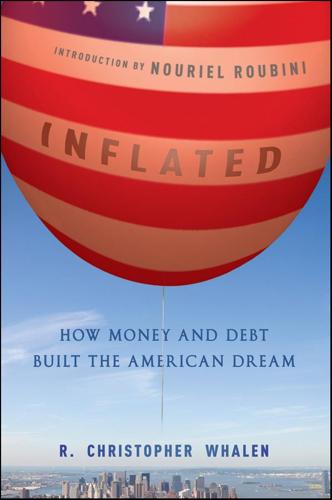
Inflated: How Money and Debt Built the American Dream
by
R. Christopher Whalen
Published 7 Dec 2010
Even before the WWII ended, the Roosevelt Administration drafted a document authorizing the ITO and enabling legislation from Congress for broad powers to reduce tariffs at the discretion of the Executive Branch. The support for trade liberalization was consistent with the traditional Democratic opposition to tariffs, which Progressives saw merely as a means of enhancing the monopoly profits of big business for the benefit of the rich. Republicans, on the other hand, were the traditional protectionists and built the government’s limited finances on tariff revenue. But the most important domestic factor behind the broad and largely bipartisan support for trade liberalization was the fact that while much of the world lay in ruins, U.S. industrial capacity had grown to first in the world.
…
Like Wilson, he ran against the war, but would involve the United States in assisting the British from the outset of hostilities. FDR subsequently ran even bigger deficits than Hoover and eventually took American back to war. Ever duplicitous, FDR at first campaigned against tariffs in the months leading up to the 1932 election, promising that trade liberalization would be a key part of his administration. Echoing Democratic leaders such as Bryan and Al Smith, FDR made tariff reduction a centerpiece at the start of his campaign against Hoover. By the end of his campaign, FDR was singing from the protectionist gospel of the Republican Party. His flexibility in regard to these serious issues of economic and financial policy evidenced an agenda that was first and foremost political.
…
Both Baruch and Hoover spoke strongly against the new loan to Britain, insisting that American needs first be reckoned.76 Vinson had not reached Washington by taking risks and in 1947, with Truman down badly in the polls and the American electorate restive, selling Congress on forgiving the Lend Lease loans to Britain, much less make new loans to London, was difficult. Public opinion, led by major media organs like the New York Times, condemned Bretton Woods and the idea of trade liberalization—unless the United Kingdom and other nations of Europe followed suit and dropped their tariffs as well. Eventually, after lengthy negotiations and sometimes difficult exchanges between Keynes and Vinson, the two sides agreed on forgiveness of the lend-lease obligation and low-interest rate loans to finance Britain’s balance of payments deficit.
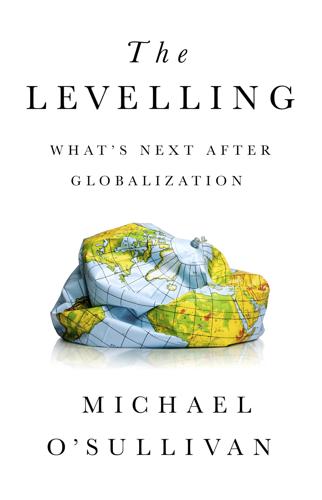
The Levelling: What’s Next After Globalization
by
Michael O’sullivan
Published 28 May 2019
One of the authorities on the matter, the Global Trade Alert center, launched in 2009 to monitor the extent to which cross-government policies liberalize and restrict trade in the aftermath of the global financial crisis, notes that trade-defense measures and bailouts or state aid are by far the most popular measures implemented to “protect” trade, followed by import tariffs and trade finance.8 Trade liberalization has been declining since 2009 and is now at its lowest level since then (for example, in 2018 there were over three times as many trade-discriminatory as trade-liberalizing measures announced internationally). Interestingly, it is the United States that implements the greatest number of trade-protectionist measures (outnumbering trade-liberalizing measures by a factor of nearly nine to one), followed by Russia and India. It is also worth commenting that the United Kingdom, Spain, Germany, and France have each implemented more traditional trade-protection measures than China, though China does have more discreet ways of tipping trade relations in its favor.
…
Proceedings of the National Academy of Sciences 112, no. 49 (December 8, 2015): 15078–15083. Case, S. The Third Wave. Simon and Schuster, 2016. Chambers, D., E. Dimson, and J. Foo. “Keynes the Stock Market Investor.” Journal of Financial and Quantitative Analysis (JFQA) 50, no. 4 (2015): 431–449. Che, Y., Y. Lu, J. Pierce, and P. Schott. “Does Trade Liberalization with China Affect US Elections?” Finance and Economics Discussion Series, Divisions of Research and Statistics and Monetary Affairs, 2016-039, Federal Reserve Board, Washington, DC, 2016. Chen, S., and J. S. Kang. “Credit Booms: Is China Different?” IMF Working Paper 18/2, January 2018. https://www.imf.org/en/Publications/WP/Issues/2018/01/05/Credit-Booms-Is-China-Different-45537.
…
Zanardi, “Policy Makers Horizon and Trade Votes,” CEPR Discussion Paper DP 8561, September 2011. 8. S. J. Evenett and J. Fritz, “Global Trade Plateaus,” Nineteenth Global Trade Alert Report, July 13, 2016, Global Trade Alert, https://www.globaltradealert.org/reports/15. 9. Autor, Dorn, Hanson, and Majlesi, “Importing Political Polarization?” 10. Che, Lu, Pierce, and Schott, “Does Trade Liberalization with China Affect US Elections?” 11. Lang and Mendes, “The Distribution of Gains from Globalization.” 12. R. Dobbs, A. Madgavkar, J. Manyika et al., “Poorer Than Their Parents?” 13. Jeff Desjardins and Visual Capitalist, “This Is What Countries around the World Think about Globalization,” World Economic Forum, November 13, 2017, https://www.weforum.org/agenda/2017/11/what-your-country-thinks-of-globalization. 14.
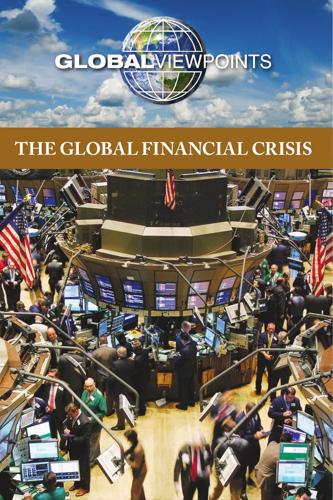
Global Financial Crisis
by
Noah Berlatsky
Published 19 Feb 2010
During the campaign, he opposed bilateral free trade agreements (FTAs) with Colombia and Panama and called for renegotiating NAFTA. In his first meeting with Mexican President Felipe Calderón, shortly before Inauguration Day, Obama expressed his desire to “upgrade” NAFTA. The world is now waiting to see whether, as president, Obama will be more skeptical of trade liberalization than Republican George W. Bush or Democrat Bill Clinton, the latter of whom championed NAFTA in the face of intense opposition from his fellow Democrats in Congress. If Obama wishes to maintain U.S. credibility and bolster America’s trade part182 Solutions to the Global Financial Crisis Protectionism in the European Union To revive the economy and curb the rising unemployment rate, leaders of some EU [European Union] member states have begun using protectionist measures at the cost of other member states. . . .
…
But when push comes to shove, will he risk angering Democratic lawmakers—and powerful Democratic constituencies—in order to defend free trade? The Europeans and Canadians are eager to know. So are political and business leaders in Latin America. Free trade is especially important to Latin America. In countries throughout the region, U.S.-led trade liberalization has improved economic opportunities, fortified market-oriented democracy, and strengthened the rule of law. At a time of major economic turmoil, U.S. leadership on free trade is critical. Obama must provide it. He faces at least three big tests on hemispheric trade: whether he will revisit NAFTA; whether he will endorse (and urge Congress to approve) the Colombia and Panama FTAs; and whether he will pursue new FTAs with countries such as 183 The Global Financial Crisis Brazil and Uruguay.
…
The Colombia and Panama deals were both signed in late 2006; their approval by Congress is long overdue. Colombia is a key U.S. ally in South America whose government deserves credit for reducing violence and working with the United States to curb drug production. In countries throughout the region, U.S.-led trade liberalization has improved economic opportunities, fortified market-oriented democracy, and strengthened the rule of law. Brazil and Uruguay are both members of Mercosur, the South American trade bloc, which would complicate U.S. efforts to negotiate bilateral FTAs but not necessarily stymie them. In 2006, U.S. and Brazilian officials launched a new U.S.
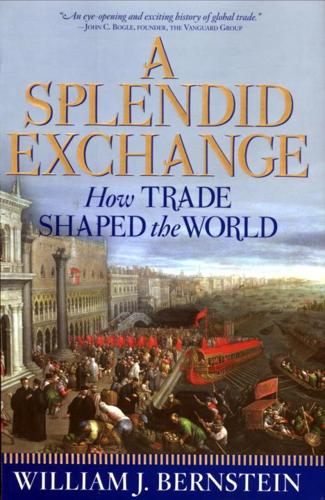
A Splendid Exchange: How Trade Shaped the World
by
William J. Bernstein
Published 5 May 2009
Many American advocates of free trade realize that in order for the current system of relatively free trade to survive, the nation's social safety net needs to be expanded, but lip service, at best, is all that is usually offered. Consider Jagdish Bhagwati, perhaps today's best-known proponent of trade liberalization and a formidable academician who has trained many of today's foremost economists. His book In Defense of Globalization spends three hundred pages living up to its title; it gives the issue of "adjustment assistance" less than two pages. The following passage from this book captures the tone used by many free traders in discussing displaced workers: If a steel mill closes down in Pennsylvania because steel in California has become cheaper, workers tend to accept that as something that happens, and the general unemployment insurance seems to be an adequate way to deal with the bad hand that an unpredictable fate has dealt one.
…
Or they ask for special relief in the form of additional unemployment compensation, with or without retraining benefits and requirements." Professor Bhagwati only grudgingly accepts the need for compensation. Referring to a safety net specifically intended for those put out of work by foreign products, he continues: "This quasi-xenophobia is just a fact of life. If trade liberalization is to occur and be sustained, one or more of these special programs and policies have to be considered."34 Such sentiments not only unnecessarily antagonize workers but also are unfair; American industry has in fact been much more adept than labor at getting protection, particularly in the form of non-tariff barriers: quotas, subsidies, antidumping legislation, and the like.35 Trade economists are slowly beginning to realize that they must stop being their own worst enemies.
…
Ward, "The Industrial Revolution and British Imperialism, 1750-1850," Economic History Review 47, no. 1 (February 1994): 47. 9. Adam Smith, An Inquiry into the Nature and Causes of the Wealth of Nations (Chicago: University of Chicago Press, 1976), I: 82. 10. Ibid., II:33; Barber, 97. 11. Anthony Webster, "The Political Economy of Trade Liberalization: The East India Company Charter Act of 1813," The Economic History Review 43, no. 3 (August 1990): 404-419. 12. Jack Beeching, The Chinese Opium Wars (New York: Harcourt Brace Jovanovich, 1975), 51. 13. W. Travis Hanes III, The Opium Wars (Naperville IL: Sourcebooks, 2002), 13-19. 14. Hsin-pao, 9-10. 15.
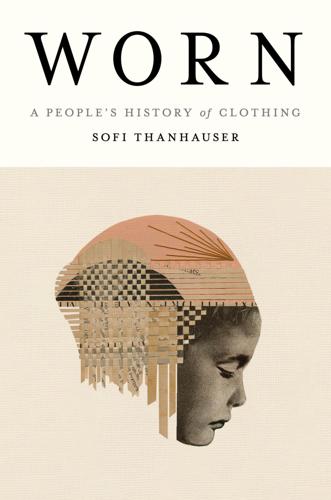
Worn: A People's History of Clothing
by
Sofi Thanhauser
Published 25 Jan 2022
Kennedy also provided tax breaks to southern textile producers to help them upgrade equipment, and established funds to provide for job training and assistance for displaced workers, which remained in effect until Ronald Reagan cut these programs in the 1980s. But these programs were designed to help the U.S. industries fade less slowly, not to keep them alive. Trade liberalization became the new paradigm. And Kennedy’s quota was to have unexpected consequences. * * * — Kennedy’s quota regime had been set at the behest of the American Cotton Manufacturers Institute, and thus it only regulated cotton fabric and clothing made from cotton fabric. Increasingly, however, the important industry story in the postwar period was taking place in the realm of synthetics like nylon.
…
Fifteen percent of the rising U.S. trade deficit was because of apparel imports, they announced. The country now imported fifty-three yards of cloth and clothing for every one hundred yards made in the U.S. The nation’s third largest industry, one that had contributed $45 billion to the GNP in 1983 compared to the automotive industry’s $40 billion, was in danger. Trade liberalization had already caused massive job loss in the 1970s: 210,000 people worked in New York City’s garment sector in 1970. By 1981, this figure had almost halved. Now, they warned, the 2.3 million workers who worked in fiber, textiles, and clothing manufacture were at risk. Between 1972 and 1991, the number of workers in U.S. manufacturing is estimated to have dropped by 7 percent, with the textile and apparel industry accounting for just over three fifths of this decline.
…
At the same time, quotas made it almost impossible for local companies to develop their own export products for the American market. In some places, local garment manufacturers were thriving before the Caribbean Basin Initiative crippled them. This pattern first played out in Jamaica. Even before the CBI was enshrined in law, Jamaica’s prime minister Edward Seaga had enthusiastically supported its underlying logic of trade liberalization and structural adjustment, and set out to transform his country into a garment exporter. Seaga’s handling of the Jamaican economy met with Reagan’s frequent and vocal approval. Seaga became a crucial consultant to Reagan in forming the Caribbean Basin Initiative’s policies, and, in turn, Reagan held up Jamaica as an example of the type of development that the CBI would reward.
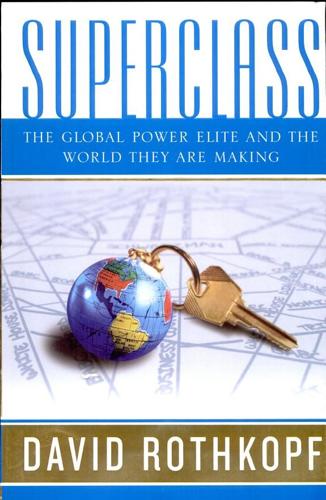
Superclass: The Global Power Elite and the World They Are Making
by
David Rothkopf
Published 18 Mar 2008
AND AFTER THE EASY PART… The following day, I met with Chile’s former minister of the economy, Jorge Marshall, in his roomy but dimly lit office. At the time the number two man at Chile’s central bank, Marshall tackled the issue another way. “We have come a long way, here in Chile,” he said. “We stabilized the economy. Controlled inflation. And we then opened up. We embraced privatization and trade liberalization. But the secret is that we did those things because they were, comparatively speaking, the easy things for us to do politically. Fixing the core problems within our society—like the inequality issue and finding new ways to stimulate growth—those are much harder.” The necessary reforms, in other words, may not be politically possible, let alone popular.
…
They welcomed market opening because, as owners of large entities, they were the most likely to benefit from new capital flows and the increased trade opportunities. But when it came time to address ownership structures that favored—sometimes grotesquely favored—majority shareholders and diminished the rights of minority shareholders, or that produced more competition, those in power dragged their feet. And as trade liberalization connected them to the world, they began to recognize that keeping labor costs down in their countries would help them attract investment capital. Their interests actually grew less and less aligned with those of their workers and more tied to those of the investment bankers and others who could offer them big paydays or accelerated growth (read: wealth creation) for their companies.
…
It is the seventh-biggest military contractor in the United States—the only foreign Pentagon supplier to make the top ten—and as The New York Times reported, the company has special access to some of the Defense Department’s most highly classified programs. (Of course, that privileged position may change following revelations that BAE allegedly bribed Saudi Prince Bandar bin Sultan to facilitate a $54 billion arms deal.) Britain’s defense industry is an exemplar of globalization and trade liberalization: The most open defense market in the world, it buys three-quarters of its arms through open competition, forcing British firms to compete with U.S. and European companies. Turner has consistently protested the system, saying it hurts Britain’s indigenous industry, and has openly floated the possibility of merging with a U.S. firm.

Revolution at Point Zero: Housework, Reproduction, and Feminist Struggle
by
Silvia Federici
Published 4 Oct 2012
Moreover, it is in the nature of the present capitalist crisis that no mediation is possible and development planning in the so-called “Third World” gives way to war.3 That the connection between integration in the global economy and warfare is not usually recognized is due to the fact that globalization today, while in essence continuing the nineteenth century imperial project, presents itself primarily as an economic program. Its first and most visible weapons are structural adjustment programs, trade liberalization, privatizations, intellectual property rights. All these policies are responsible for an immense transfer of wealth from the “colonies” to the metropoles, but they do not require territorial conquest, and thus are assumed to work by purely peaceful means.4 Military intervention too is taking new forms, often appearing under the guise of benevolent initiatives, such as “food aid” and “humanitarian relief,” or, in Latin America, the “war against drugs.”
…
This type of program was imposed by the World Bank and the IMF on most African countries starting in the early 1980s, allegedly to spur economic recovery and help the African governments pay for the debts that they had contracted during the previous decade in order to finance development projects. Among the reforms it prescribes are land privatization (starting with the abolition of communal land tenure), trade liberalization (the elimination of tariffs on imported goods), the deregulation of currency transactions, the downsizing of the public sector, the de-funding of social services, and a system of controls that effectively transfers economic planning from the African governments to the World Bank and non-governmental organizations (NGOs).5 This economic restructuring was presumably meant to boost productivity, eliminate inefficiency and increase Africa’s “competitive edge” on the global market.
…
They are the ones who, with their struggles, have contributed most to “valorizing” the labor of their children and communities, challenging the sexual hierarchies on which capitalism has thrived and forcing the nation state to expand investment in the reproduction of the workforce.3 They have also been the main supporters of a noncapitalist use of natural resources (lands, waters, forests) and subsistence-oriented agriculture, and therefore have stood in the way of both the full commercialization of “nature” and the destruction of the last remaining commons.4 This is why globalization in all its capitalist forms—structural adjustment, trade liberalization, low intensity warfare—is in essence a war against women, a war that is particularly devastating for women in the “Third World,” but undermines the livelihood and autonomy of proletarian women in every region of the world, including the “advanced” capitalist countries. From this it follows that the economic and social condition of women cannot be improved without a struggle against capitalist globalization and the de-legitimization of the agencies and programs that sustain capital’s global expansion, starting with the IMF and the World Bank, and WTO.
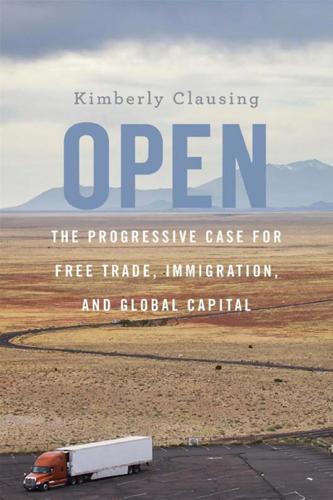
Open: The Progressive Case for Free Trade, Immigration, and Global Capital
by
Kimberly Clausing
Published 4 Mar 2019
Researchers have found that, across many countries, poorer consumers consume a higher fraction of traded goods relative to non-traded services than do richer consumers, and this pattern is particularly stark for Americans.5 In the United States, tariffs take a bite out of the after-tax incomes of the poorest 20 percent of the population three times larger, in percentage terms, than they take from the top 20 percent.6 Consumers have a lot to gain from international trade, but consumers are often politically disorganized, and they are unlikely to form a vocal constituency in favor of open international trade. Instead, trade liberalization often proceeds based on other considerations. Export-oriented business interests, and globally oriented multinational companies, provide constituencies in favor of an open trading system. And policy-makers also pursue trade agreements toward political ends. Back When Tariffs Paid for Government Tariffs have played an important role in our nation’s tax history, and indeed were the primary source of revenue to the US federal government until the early twentieth century.
…
Gregory Mankiw, “Why Voters Don’t Buy It When Economists Say Global Trade Is Good,” The Upshot, July 29, 2016; Edward D. Mansfield and Diana C. Mutz, “Support for Free Trade.” This political problem is daunting, but the case against protectionism remains strong. Giving up trade, or even reducing trade by instituting a 30 percent tariff or shutting down the trade-liberalizing components of international agreements, would create large costs for the US economy and US workers. In particular: Tariffs would harm consumers, with particularly harmful effects for low- or middle-income workers. Export industries would be hurt by the higher costs of intermediate products and the likely retaliatory actions of our trading partners, hurting workers in those sectors.
…
The International Trade Organization itself never came into being. Instead, the General Agreement on Tariffs and Trade (GATT) liberalized trade, and nations worked together as contracting parties to the agreement. Eventually, the GATT evolved into the World Trade Organization in 1995, after the Uruguay Round of trade liberalization. 5. This process began with the Treaty of Rome in 1957. Originally the European Economic Community, the European Union was established in 1993. 6. See Max Roser, “War and Peace,” Our World in Data, 2016, https://ourworldindata.org/war-and-peace/. 7. At a recent World Economic Forum in Davos, Xi Jinping said: “Pursuing protectionism is like locking oneself in a dark room.
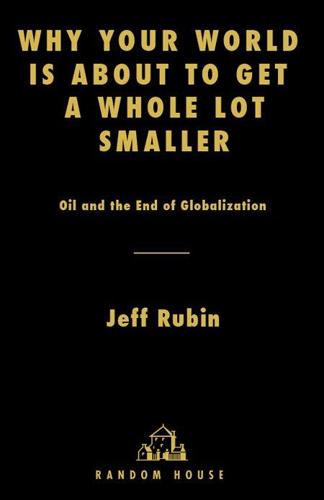
Why Your World Is About to Get a Whole Lot Smaller: Oil and the End of Globalization
by
Jeff Rubin
Published 19 May 2009
In other words, if transport costs double because of soaring fuel prices, we can calculate how much those costs raise the final selling price of the item being shipped and then express that amount as if it were a tariff. So just how high would those tariffs be? We got a glimpse of that between 2004 and 2008, when world oil prices shot up from $30 to almost $150 per barrel. Transoceanic shipping costs tripled over the period. Express that in tariff terms, and the increase offsets all the trade liberalization of the last three decades. That’s one hell of an increase. Back in 2000, when oil prices were $20 per barrel, transport costs associated with shipping cargoes across the Pacific were the equivalent of an average 3 percent US tariff rate. At $100 per barrel, transport costs are equivalent to an average tariff of 8 percent.
…
Just as soaring transoceanic shipping prices will turn global cost curves on their heads, carbon pricing can induce a 180-degree shift in labor’s attitude toward environmentalism. Armed with the knowledge that a third of China’s carbon emissions comes from its export sector, US steelworkers have every reason now to be at the vanguard of those urging Congress for tougher action on carbon emissions. American labor will soon learn that what has been lost through trade liberalization can be won back through environmental protection. A carbon tariff, just like triple-digit oil prices, will soon be bringing a lot of long-lost jobs back home. [CHAPTER 7] JUST HOW BIG IS CLEVELAND? I NEVER KNEW THAT CLEVELAND WAS THAT BIG. I’m sure it is big enough for the folks who live there.
…
Many people who have not seen a lunch box since middle school, or who haven’t had a callous on their hands since the time they tried to build their own backyard fence, may soon become reacquainted with both. All of a sudden, the globalizing forces of the last three decades will come to a screeching halt. While trade liberalization and technical change have flattened the world, the soaring prices for energy are going to make the world rounder again. And this smaller, rounder world is going to look more like the past than what we are accustomed to expect from the future. EATING OUT There is hardly a sector of the economy that will not be affected by these global shifts.
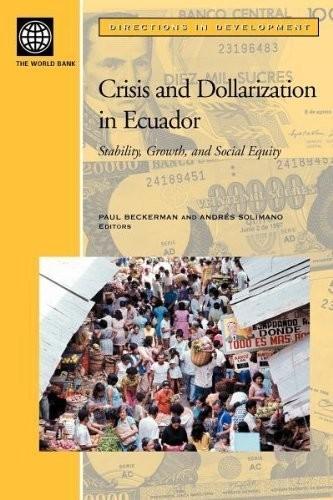
Crisis and Dollarization in Ecuador: Stability, Growth, and Social Equity
by
Paul Ely Beckerman
and
Andrés Solimano
Published 30 Apr 2002
Inflation persisted in the range of 50 to 60 percent, and the nonfinancial public-sector deficit remained around 6 to 7 percent of GDP, despite higher oil prices at the time of the Persian Gulf War. Building on the Cordero Government’s reforms, the Borja Government undertook several 30 CRISIS AND DOLLARIZATION IN ECUADOR significant structural-adjustment initiatives, including a partial tax reform, trade liberalization, and progress toward financial-sector liberalization. In the run-up to the mid-1992 elections, however, government expenditure rose sharply, and, although the authorities maintained a relatively appreciated exchange rate, inflation persisted at high rates. In mid-1992, Sixto Durán Ballén was elected president on a platform of stabilization, liberalization, and structural reform.
…
The reliance of public revenue on volatile oil earnings rather than on more stable revenue sources, together with the expenditure commitments deriving from the publicdebt burden, the essentially tenured public-sector labor force, and mandated transfers (required in many instances by revenue earmarking), made the fiscal accounts inherently vulnerable to exogenous shocks. The elected governments of the 1980s and 1990s differed ideologically, but all were persuaded of the practical need for public-sector reform. The Cordero and Borja Governments made significant advances in financial liberalization and trade liberalization, but found substantive public-sector reform difficult to achieve. The Durán Ballén Government made somewhat more progress. Its 1992 Public Budgets Law set a legal basis for mod- LONGER-TERM ORIGINS OF ECUADOR’S “PREDOLLARIZATION” CRISIS 35 ernization of the systems of formulating and implementing public budgets.
…
This government had inadequate political support for anything more than caretaking. It made vigorous efforts to persuade the Con- 36 CRISIS AND DOLLARIZATION IN ECUADOR gress to enact tax reform and to advance privatization, but these efforts were largely fruitless. To increase revenue it enacted a tariff surcharge, reversing the long process of trade liberalization. Moreover, in early 1998, with the conclusion of its term close, this government had to deal with the El Niño rains and declining oil-export prices that turned out to be the onset of the predollarization crisis. The core of Ecuador’s public-finance problem was (and indeed remains) that revenue depended too heavily on volatile oil earnings, while inadequate non-oil revenue and overwhelming debt-service and payroll commitments narrowed the scope for developmental expenditure.
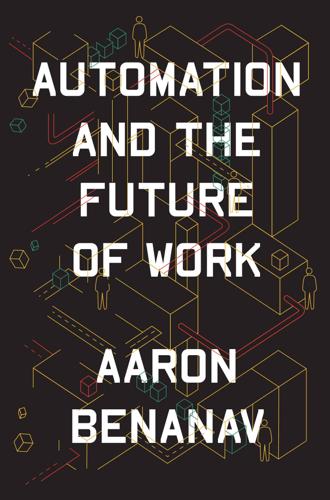
Automation and the Future of Work
by
Aaron Benanav
Published 3 Nov 2020
As additional manufacturing capacity appeared and entered the fray of international competition, falling rates of manufacturing-output growth and consequent labor deindustrialization spread to more regions: Latin America, the Middle East, Asia, and Africa, as well as to the global economy taken as a whole. Deindustrialization came to most global South regions in the aftermath of the 1982 Third World debt crisis, amid the imposition of IMF-led structural adjustment programs. As trade liberalization opened the borders of poorer countries to imports, while financial liberalization brought hot money flowing into “emerging markets,” their currencies revalued sharply. Unit labor costs in these regions rose just as markets were becoming more overcrowded, with the result that firms found themselves able neither to compete with imports nor to export their wares abroad.33 Deindustrialization was a matter not only of technological advance, but also of global redundancy of productive and technological capacities.
…
See post-scarcity tradition Postone, Moishe, 104n23 pre-industrialization deindustrialization, 108n23 price trends, manufacturing vs. nonmanufacturing, 110n35 production, conquest of, 79, 82, 86, 99 productivity about, 19 growth in United States, 123–4n40 growth rates in, 20 productivity paradox, 16–22 productivity-wages gap, 9–10 protests, 95–6 public debt-to-GDP ratios, 66–8 Raising the Floor (Stern), 4 rate of growth of output, 19 Reclus, Élie, 85 Reich, Robert, 4 Republic (Plato), 84 Rio Tinto, 117n45 Rise of the Robots (Ford), 3, 62 Robinson, Joan, 69, 127n15 robotization, 28, 107n16 robots tax, 3 Rodrik, Dani, 26 Ross, Kristin, 115n30 routine intellectual activities, 105n2 Rowthorn, Robert, 107–8n21 Russia, labor productivity growth in, 34 rust belts, 27–8 Salomons, Anna, 61 Scotland, universal basic income (UBI) and, 72 The Second Machine Age (Brynjolfsson and McAfee), 2–3, 45 SEIU (Service Employees International Union), 4 self-employment, 104n26 Service Employees International Union (SEIU), 4 service sector employment, 56–7, 59–60, 105n1 sewbots, 43 Singapore, robots in, 107n16 slaves, 83–4, 125n47 socialist calculation debate, 134n16 social policy, major shifts in, 12 South Africa deindustrialization in, 108n22 employment rates in, 53 labor productivity growth in, 34 service sector employment in, 56, 58, 97 South Korea economic bubbles in, 37 employment rates in, 53 export-processing zones in, 27 income growth in, 34–5 manufacturing employment shares in, 28 robotization in, 28, 107n16 as service-sector economy, 97 SpaceX, 3 Spain out-of-work income maintenance/support in, 119–20n6 universal basic income (UBI) and, 72 Srnicek, Nick on folk politics, 95 Inventing the Future, xii, 4–5, 76 on UBI, 76 stagnation, 57, 69–70 about, 29 growth and, 30–5 lack of alternatives and, 35–9 role of technology, 39–44 secular stagnation, x, 69–70 state-owned enterprises, employment in, 108–9n25 Stern, Andy Raising the Floor, 4 Streeck, Wolfgang, 96 strikes, 95–6 structural reform, 69 Strugatsky brothers, 132n4 Summers, Lawrence, 4, 69 sun belts, 27–8 Susskind, Daniel A World without Work: Technology, Automation, and How We Should Respond, 102n7 Sweden labor market institutions in, 121n14 Meidner Plan, 79 unemployment rates in, 47 women’s labor force in, 52 Taiwan export-processing zones in, 27 income growth in, 34–5 tariff protections, 117n41 technological unemployment, 2 technology legal context of development in, 120–1n12 role in, 39–44 The Technology Trap: Capital, Labor, and Power in the Age of Automation (Frey), 102n7 Tesla, 1 Thailand employment rates in, 53 service sector employment in, 58 They Live (Carpenter), x–xi, xi–xii Third World debt crisis, 25–6 Thomas, Zoe, 103n15 trade liberalization, 25–6 Travels in Icaria (Cabet), 84–5 Treganna, Fiona, 108n23 Tunisia, employment rates in, 53 Turkey, service sector employment in, 56 2008 crisis, xii Uber, 50 UBI (universal basic income). See universal basic income (UBI) underdemand, 110n37 underemployment, 11, 122–3n31 underinvestment, 110n37 unemployment benefits in Africa, 122n27 labor plans and, 128n21 unemployment rates about, 104n24 after 2008 crisis, 45–6 during COVID-19 recession, 45–6 global, 55 growth in, xi as a measure of labor market health, 119n3 postindustrial, 56 rise in wealthy countries of, 46–7 welfare-state regimes and, 119n5 UNIDO (United Nations Industrial Development Organization), 108n24 union density, 63–4 unions, 48, 131n48 United Kingdom employment rates in, 53 GDP (gross domestic product) in, 115n26 manufacturing employment shares in, 28 OECD index and, 50–1 public debt-to-GDP ratio in, 66, 67 robotization in, 28 United Nations Industrial Development Organization (UNIDO), 108n24 United States capital stock growth in, 31–2 deindustrialization in, 21 gross manufacturing output shares in, 113n11 imports of goods to, 111n42 labor productivity growth in, 32 manufacturing employment shares in, 28 manufacturing growth in, 35 OECD index and, 50–1 productivity growth in, 123–4n40 public debt-to-GDP ratio in, 67 robotization in, 28, 107n16 service sector employment in, 58 unemployment rates in, 46–7, 48–50 universal basic income (UBI) and, 72 waves of strikes in, 96 universal basic income (UBI) about, 2, 5, 12, 71, 72–6 COVID-19 pandemic and, 128–9n24 limitations of, 76–9 Vanderborght on, 130n37 van Parijs on, 130n37 urbanization, 125n49 Ure, Andrew, 133–4n13 The Philosophy of Manufactures, 7–8 Utopia (More), 82, 84 value, dollar, 110n32 value added, 107n17 Vanderborght, Yannick, 75, 130n37 van der Veen, Robert “A Capitalist Road to Communism,” 95 van Parijs, Philippe, 75 “A Capitalist Road to Communism,” 76, 95 on UBI, 130n37 Verdoorn’s law, 34 voluntary associations, 74, 85, 91–2 von Mises, Ludwig, 134n16 Vonnegut, Kurt Player Piano, 6 Walmart, 44 warehousing, 123–4n40 The War on Normal People (Yang), 4 wealth effect, 35–6 Westergard, Björn, 135n28 West Germany, workforce statistics in, 41 Williams, Alex on folk politics, 95 Inventing the Future, xii, 4–5, 76 on UBI, 76 women, “hidden abode” and, 87 workers’ parties, 131n48 work sharing, 86–90 A World without Work: Technology, Automation, and How We Should Respond (Susskind), 102n7 World Bank, 109n27 world manufacturing, 23–4, 33–4 Yang, Andrew, 46, 136–7n1 The War on Normal People, 4 Zuckerberg, Mark, 3

People, Power, and Profits: Progressive Capitalism for an Age of Discontent
by
Joseph E. Stiglitz
Published 22 Apr 2019
It’s really that simple. Anybody who believes in the law of supply and demand should understand why globalization (in the absence of government programs to ameliorate its effects) hurts low-skilled workers. The same goes for labor more generally: the US imports labor-intensive goods, and thus trade liberalization (opening up US markets to foreign goods by reducing tariffs or other trade barriers) reduces the overall demand for labor, and thereby also reduces (real) wages in equilibrium. Again, if wages don’t fall, employment will. Trade advocates similarly stress that trade increases the country’s GDP, as it takes advantage of its comparative advantage (whether a result of specialization or resource endowments), and somehow, mystically, everyone will be better off—another instance of the belief in trickle-down economics.
…
TRIPS was really about increasing profits of Big Pharma and firms in a few other industries.25 It was about ensuring a flow of money from poor developing countries and emerging markets to the US.26 Not surprisingly, then, it wasn’t a balanced agreement, even within the domain of intellectual property; it didn’t recognize the intellectual property of developing countries, either that of the genetic resources that resided in their rich biodiversity that so many were working so hard to preserve, or in traditional knowledge.27 Protectionism Is Not the Answer While globalization, and especially poorly managed trade liberalization, has contributed to deindustrialization, unemployment, and inequality, Donald Trump’s protectionist policies won’t solve any of these problems. Indeed, his mindless undoing of the global rules-based system may make some of them worse. Renegotiating trade agreements will neither reduce the trade deficit nor lead to a return of manufacturing jobs.
…
Another study found negative effects for growth of the US economy. Jeronim Capaldo, Alex Izurieta, and Jomo Kwame Sundaram, “Trading Down: Unemployment, Inequality and Other Risks of the Trans-Pacific Partnership Agreement” (Global Development and Environment Institute working paper 16-01, Tufts University, 2016). The usual champions of trade liberalization found, perhaps not surprisingly, somewhat larger positive effects than the US government did, at least by 2030: Peter A. Petri and Michael G. Plummer (Peterson Institute for International Economics) and the World Bank both estimated that the TPP would increase annual GDP by 0.5 by 2030. See World Bank Group, Global Economic Prospects: Spillovers amid Weak Growth.
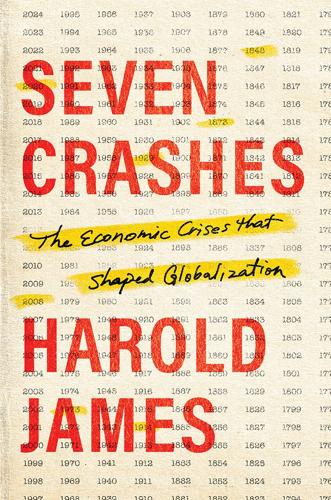
Seven Crashes: The Economic Crises That Shaped Globalization
by
Harold James
Published 15 Jan 2023
In particular, what institutions were required? The mid-nineteenth-century upheavals rapidly produced a dramatic transformation of politics and business. There was a revolution in government, when public authorities took on many more tasks concerned with managing the economy, including guiding the course of trade liberalization. Business was also revolutionized through new corporate forms, the limited liability joint stock company as well as universal banks that mobilized capital in innovative ways. The middle of the 1840s appeared as a classical hunger or subsistence crisis of the ancien régime of the kind that had wracked Europe at the beginning of the eighteenth century in the midst of the War of the Spanish Succession.
…
Those poor areas such as Scandinavia with high levels of emigration saw living standards rise more quickly than poor areas with little emigration: for instance, Kevin O’Rourke and Jeffrey Williamson contrast Sweden with Portugal.36 Monetary expansion followed the crisis, pushed to some extent by the discovery of gold (the Californian Gold Rush of 1849) and in part by financial innovation of the crédit mobiliers that expanded the business of banking. In consequence, very quickly, Europe looked much less likely to experience a repeat of the simultaneous move to political revolution. Trade liberalization, which was given a model or template in the form of the 1860 Anglo-French agreement (the Cobden-Chevalier pact), international capital movements, and migration all took off after the political revolutions, although there was already a substantial growth of international trade before 1860.37 Contemporaries were quick to celebrate the meaning of trade policy for political stability, domestic and international, although there was some pushback, especially outside Britain, where critics depicted free trade as a doctrine that would give advanced British industry an unfair advantage.
…
They complained that trade imbalances “would almost be bound to develop such disruptive tendencies as might be capable of wrecking any plan.”128 Only in December 1945, well after the end of the war, did the United States launch an initiative for an International Trade Organization, but then it was rather late. Other countries demanded exemptions and protections, and the U.S. Congress then felt alienated by the ingratitude of the old allies. There was no organization to supervise the liberalization of trade (until the establishment of the World Trade Organization in the post–Cold War world), and trade liberalization occurred instead in fundamentally bilateral trade arrangements that could be multilateralized in the framework of an overall agreement, the General Agreement on Tariffs and Trade (GATT). European countries only started to liberalize their trading payments (payments on current account) in the late 1950s; Japan only did that in 1964.
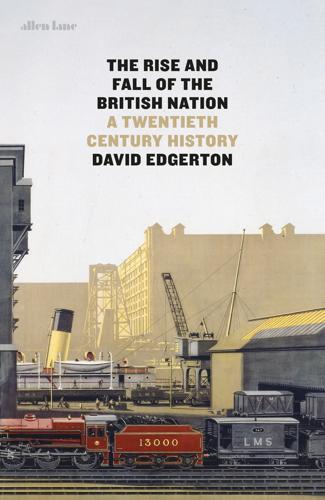
The Rise and Fall of the British Nation: A Twentieth-Century History
by
David Edgerton
Published 27 Jun 2018
Imperial Germany, which did so, was seen by free traders not only as nationalistic and militaristic, but as a place where wages were low, bread was brown, and meat came from horses and dogs.7 The Conservative campaign failed. The free-trading Liberal Party won the election of 1906, fought on this issue, with a huge majority. Under Sir Henry Campbell-Bannerman and Herbert Asquith the New Liberalism set in train the development of the welfare state, and faced down the still powerful House of Lords in order to pass the People’s Budget which funded it. That is the usual story, but as we shall see, it misses out much. The 1906 election was not the end of the matter with respect to free trade. The Great War led to measures which free-trading liberals regarded with distaste. The wartime coalition, formed in 1915, when Conservatives joined the existing Liberal government, introduced what some liberals regarded as Prussian measures: conscription and some economic nationalism.
…
The dominant Conservatives called for ‘Empire Economic Unity’, which meant tariffs, and quotas for cereals. Indeed, the need for protection was practically the only point their manifesto made. Their minor partners, MacDonald’s National Labour and the Liberal Nationals, were confused on this key issue. The free-trading Liberals also supported the National government. The main opposition – the Labour Party and the Lloyd George Independent Liberals – were, however, firmly in favour of free trade. Labour was categorical: The Labour Party has no confidence in any attempt to bolster up a bankrupt Capitalism by a system of tariffs.
…
Most people, when they had a vote, voted not only for parties of the elite, but for members of parliament drawn from the upper reaches of society. Furthermore, politics was fundamentally about what happened in parliament and the elite public sphere, rather than a matter for the electorate. Only rarely did the electorate and electoral system give unambiguous instructions. In 1906 the electorate returned a free trade Liberal government. In 1918 the electorate endorsed a coalition, as it was to do in 1931, with protection the likely result. The 1945 general election brought a Labour majority government, with a distinct programme and parliamentary candidates. The politics of party and the politics of parliament were usually more important than the votes of the electorate.
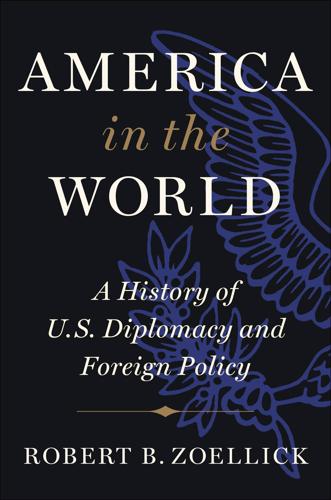
America in the World: A History of U.S. Diplomacy and Foreign Policy
by
Robert B. Zoellick
Published 3 Aug 2020
But Mahan wanted the United States to sail powerfully in Pacific waters. Mahan’s strategic vision incorporated other diplomatic elements. He wanted to boost trade, including imports as well as exports. Tariffs, Mahan wrote in 1890, were like “a modern ironclad that has heavy armor, but inferior engines and guns; mighty for defence, weak for offence.” Trade liberalization would extend American influence. He observed how Seward’s trade reciprocity treaty with Hawaii had pulled the islands into the U.S. orbit. Mahan further believed that America’s “moral influence”—its values—would gradually encourage political liberalization and indigenous republican institutions that would contribute to a more secure international order.6 In 1900, Mahan published a series of essays in The Problem of Asia.
…
Therefore, Hull and his associates “agreed that we should try to secure the enactment of the next best method of reducing trade barriers, that is by bilateral trade agreements which embraced the most-favored-nation policy in its unconditional form—meaning a policy of nondiscrimination and equality of treatment.”36 When I became the U.S. trade representative in 2001, I recalled Hull’s experience. A number of countries had thwarted an effort to launch a new round of trade liberalization in the World Trade Organization. Many capitals were reluctant to devise new rules for sectors—such as services and technologies—that had become huge in the world economy. In the spirit of Hull, we decided on a strategy of “competitive liberalization”—negotiating multilaterally, regionally, and bilaterally.
…
At one point in August, Clayton was ready to leave the British out of the new multilateral trading system. But the president had too many other priorities with Britain in 1947, and the United States agreed to launch GATT even with Britain’s imperial preferences.113 This first multilateral trading round, with twenty-three participants, proved that cooperation on trade liberalization was possible. The parties cut tariffs on forty-five thousand items, covering about half of world trade. The process stimulated world trade even as economies were struggling to recover and remove foreign exchange controls. Some in Congress complained about a trade “giveaway,” but the new trade diplomacy helped unleash unparalleled economic growth in the United States and the world for decades.
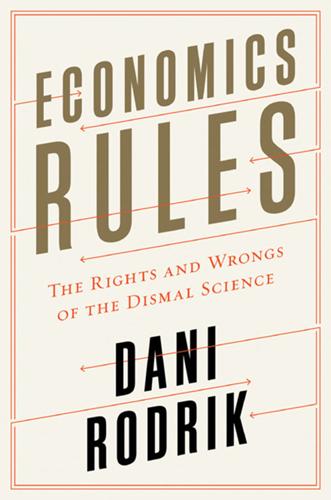
Economics Rules: The Rights and Wrongs of the Dismal Science
by
Dani Rodrik
Published 12 Oct 2015
So the initial Washington Consensus was supplemented by a burgeoning list of additional measures encompassing labor markets, financial standards, governance improvements, central banking rules, and so on.10 The economists behind the Washington Consensus forgot they were operating in an inherently second-best world. As discussed in Chapter 2, in environments where markets are subject to multiple imperfections, the usual intuition on the effects of policies can be quite misleading. Privatization, deregulation, and trade liberalization can all backfire. Market restrictions of a certain sort can be desirable. Policy reforms in these environments require models that explicitly take such second-best complications into account. Consider how opening up to trade—one of the key items of the Washington Consensus—was supposed to work.
…
We also showed that there was no strong or uniform evidence one way or another. After circulating and presenting the paper, I got two kinds of reactions. Committed advocates of the Washington Consensus thought I was muddying the waters and undermining the good cause of free trade. But many others expressed their appreciation, complaining that the push for trade liberalization had gone much beyond what economic research was able to support. The second type of reaction was unexpected, since it came from people who had not taken a public stance. They had chosen not to have their voices heard, despite their skepticism. As a result, the public message was not representative of the profession as a whole, where views were, in fact, considerably more hedged.
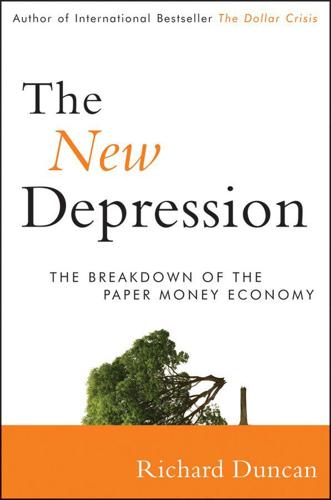
The New Depression: The Breakdown of the Paper Money Economy
by
Richard Duncan
Published 2 Apr 2012
Any regulatory action that damages the interest of the banks—regardless of how justified—has the potential to inflict significant, even fatal, harm on the economy. Until these conflicts are resolved, the banking industry will continue to be a dangerously destabilizing factor within the U.S. economy. Global Imbalances: Still Unresolved In the post–Bretton Woods era, trade liberalization, cross-border capital flows, and currency manipulation combined to produce widespread global imbalances that have destabilized the world economy. In the past, trade between nations had to balance because deficits had to be paid for with gold. Since 1971, however, it has become possible to finance large trade deficits with debt denominated in fiat money.
…
The United States bears the greatest responsibility for allowing the global imbalances to develop. First, President Richard Nixon destroyed the Bretton Woods international monetary system, which had been designed to ensure that international trade did balance. Later, the United States promoted trade liberalization and cross-border capital flows with no concern for the very large U.S. trade deficits that emerged as a result. Finally, it failed to act when many of its trading partners blatantly manipulated the value of their currencies in a way that prevented the trade imbalances from correcting. When the U.S. credit bubble began in earnest in the 1980s, other countries expanded their industrial capacity to satisfy the United States’ rapidly expanding debt-financed demand.
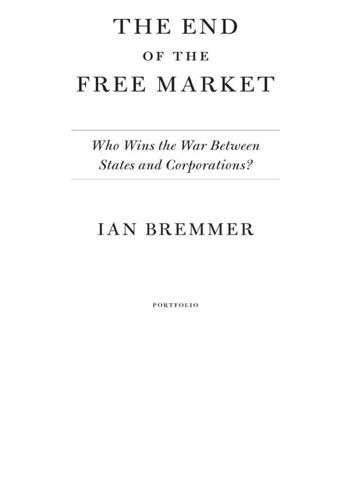
The End of the Free Market: Who Wins the War Between States and Corporations?
by
Ian Bremmer
Published 12 May 2010
The growth of emerging-market countries and their export markets has cut America’s total share of the global merchandise export market in half over the past sixty years, from 28 percent to about 14 percent.20 In other words, many more countries have embraced capitalism in recent years, and most of the world’s international financial institutions reflect the change.21 Mercantilism is dead, but its influence continues. Governments are again intervening in their economies to promote declared national interests, and they have found subtler and more effective ways to practice protectionism. Even states considered among the world’s foremost advocates of trade liberalization and free-market capitalism refuse to yield ground on especially sensitive trade issues. The European Union, the world’s largest trading bloc, continues to use import tariffs to protect its farmers against products that European consumers could buy for less from the developing world.22 The EU’s agricultural policies are in some ways a legacy of extreme wartime food shortages.
…
In other words, the conflict had enormous and lasting consequences for international politics and the global economy. The Second Wave—Fast-Emerging Markets The second wave of state capitalism made landfall during the 1980s and early 1990s with the liberalization and economic expansion of the so-called emerging markets—China, Russia, India, Brazil, South Korea, Mexico, Turkey, and others. Trade liberalization produced a surge in consumer demand in dozens of countries, the global economy has since gained hundreds of millions of new participants, and most of the emerging markets have a history of relatively direct state involvement in economic decision making. China and Russia depended for decades on command economies.
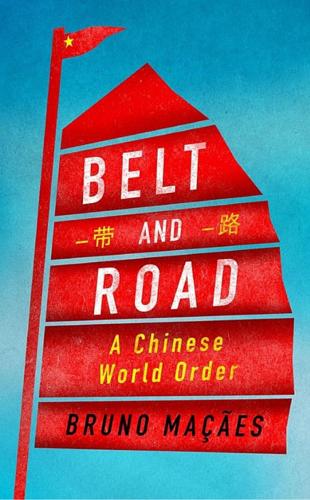
Belt and Road: A Chinese World Order
by
Bruno Maçães
Published 1 Feb 2019
The orderly flow of economic factors in both countries “will significantly improve the resource allocation efficiency and bring into full play the comparative advantage of each country.”14 China and Pakistan are expected to strengthen cooperation in trade and industrial areas, expand bilateral economic and trade relations, and enhance the level of bilateral trade liberalization. They should cooperate in key areas, enhance the effectiveness of cooperation and strive to achieve synchronization, coordination and reciprocity of economic development. Specific sectors to be actively promoted include textiles, the production of parts and components for industry, and agriculture.
…
The global economy has a Tianxia feel. When intermediate inputs tend to cross borders many times, even small tariffs and border bottlenecks have a cumulative effect, and protective measures against imports increase the costs of production and reduce a country’s export competitiveness. These are all good arguments for trade liberalization—and it should therefore not surprise us that China has started vocally to defend the removal of barriers to cross-border flows of goods and services—but consider what happens to a country’s ability to organize production along the most efficient lines. If goods are produced entirely in one country, that country has full control over the whole process.
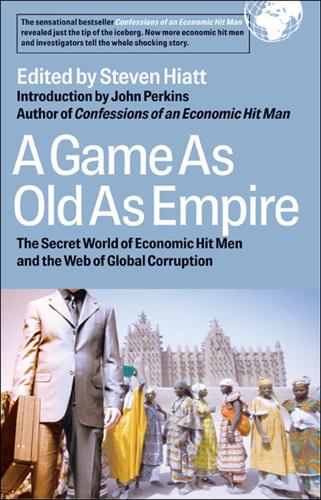
A Game as Old as Empire: The Secret World of Economic Hit Men and the Web of Global Corruption
by
Steven Hiatt; John Perkins
Published 1 Jan 2006
While studying, I linked up with a network of campaigners associated with Oxfam 2000, a British nongovernmental organization, and started research into how the financial resources of many of the world’s poorest countries drain away into secret banking accounts. This research continued after my graduation, and, while working in India in the early 1980s, I became increasingly aware that the capital market and trade liberalization programs promoted by the International Monetary Fund and the World Bank were making it far easier for wealthy people and corporations to evade taxes. Tax havens were playing a pivotal, but hidden, role in transferring money illicitly into secret bank accounts and offshore trusts—not just benefiting the world’s wealthiest and most powerful individuals and companies but also sapping the prospects for economic development in the world’s poorest nations.
…
Now, on the market side, cheap imports of tires came in, and our business competed directly with brand-new tires. Our business was in tire retreading. When old tires get chewed up and abraded, we retreaded them and made them look and function like new. Cheap imported tires came in because of trade liberalization. We lost market share, and we couldn’t raise our prices as much as we should have. Even without the imports, the market was already very competitive here. There were many tire retreading companies—a few big ones, and many small ones. Especially after we joined the WTO in 1995–96, the industry started to have real problems.
…
Nowhere is this more evident than in Bolivia, Argentina, and Venezuela, whose economies all have been decimated under previous neoliberal governments. . . . Even Costa Rica, Peru, and Mexico, traditionally neoliberal strongholds, have experienced presidential elections almost entirely dominated by debate over trade liberalization.9 The global justice movement has also matured. For example, under the influence of unions such as Unite! and the Service Employees International Union, organized labor in the U.S. changed from first supporting corporate globalization to then supporting only instances that helped U.S. workers and then to a broader opposition grounded in the reality of the shared sacrifice of workers everywhere.
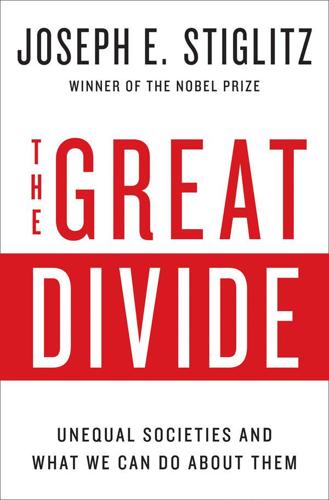
The Great Divide: Unequal Societies and What We Can Do About Them
by
Joseph E. Stiglitz
Published 15 Mar 2015
The big insight of modern economics was that trade in goods and services was effectively a substitute for the free movement of labor and capital: when China sells labor-intensive goods to the United States, it increases the demand for China’s labor and lowers the demand for that in America, raising wages there and lowering them here. Trade liberalization moves the wages of unskilled labor in the two countries closer together. And the wages of our workers is likely to go down more than theirs is likely to go up. While economists have long debated the relative importance of this effect—compared with others that increase income inequality—there is a growing consensus that today the impact of trade on wages and inequality can be significant.
…
His party’s new-found commitment to fiscal discipline—in the form of insisting on low taxes for the rich while slashing services for the poor—is the height of hypocrisy. There are all kinds of excuses for inequality. Some say it’s beyond our control, pointing to market forces like globalization, trade liberalization, the technological revolution, the “rise of the rest.” Others assert that doing anything about it would make us all worse off, by stifling our already sputtering economic engine. These are self-serving, ignorant falsehoods. Market forces don’t exist in a vacuum—we shape them. Other countries, like fast-growing Brazil, have shaped them in ways that have lowered inequality while creating more opportunity and higher growth.
…
They also extended the policy of lowering taxes at the top, to the point where today, the richest 1 percent of Americans pay only around 15 percent of their income in taxes, far lower than those with more moderate incomes. Reagan’s breaking of the air-traffic controllers’ strike is often cited as a critical juncture in the weakening of unions, one of the factors explaining why workers have done so badly in recent decades. But there are other factors as well. Reagan promoted trade liberalization, and some of the growth in inequality is due to globalization and the replacement of semiskilled jobs with new technologies and outsourced labor. Some of the increase in inequality common to both Europe and America can be ascribed to that. But what’s different about America is the remarkable growth in incomes of the very top—especially the top 0.1 percent.
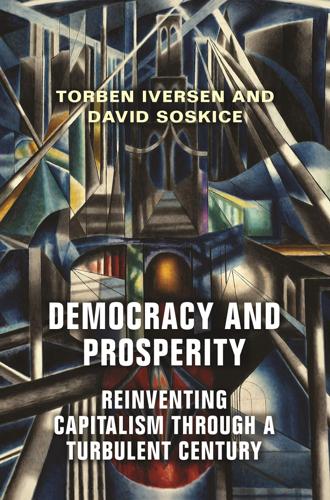
Democracy and Prosperity: Reinventing Capitalism Through a Turbulent Century
by
Torben Iversen
and
David Soskice
Published 5 Feb 2019
“Horizontal Depth: A New Database on the Content of Preferential Trade Agreements.” Policy Research Working Paper, No. 7981. World Bank, Washington, DC. © World Bank. https://openknowledge.worldbank.org/handle/10986/26148. License: CC BY 3.0 IGO. Across-the-board trade liberalization, although it is no longer sufficient to guarantee competition, makes it harder for companies to establish entrenched monopolistic or oligopolistic market positions. Trade liberalization is a global phenomenon, as illustrated in figure 4.6, but the agreements with the most extensive free-trade provisions and greatest impact have been between advanced democracies, especially in Europe (the creation of the internal market) and in North America (NAFTA).
…
We do believe that the homophobic, sexist, and generally intolerant views associated with populism are incompatible with the way modern cities work. But rarely are such policies adopted and implemented in a manner that seriously interfere with the live-and-let-live ethos of modern urban life. The same is generally true of more radical proposals to restrict international trade. Trade liberalization has been revisited politically, but, on the whole, open world trade has not been seriously threatened. It is true that Brexit was a blow to the principle of a Europe without borders, but few seriously think that the UK will shut its borders to trade and investment with the EU, or vice versa.
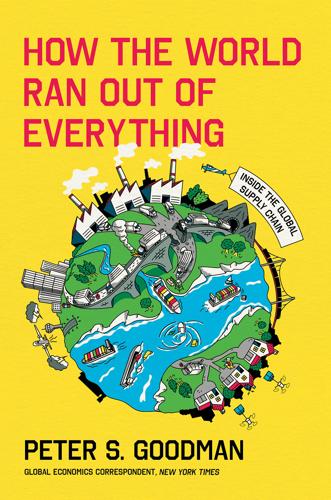
How the World Ran Out of Everything
by
Peter S. Goodman
Published 11 Jun 2024
More recently, they witnessed the logical extension of this trend—trucks with no drivers at all. They had watched the ports hand the work of cleaning out containers to North African immigrants. They were cognizant that the ultimate winners in these developments were not the low-wage employees who were getting the work, but the conglomerates that dominated the shipping trade. Trade liberalization, immigration, containerization, automation. They were all instruments wielded in the service of a consistent objective—stiffing workers and transferring the proceeds to the multinational companies that dominated the supply chain. The work of moving containers between ships and docks was more important than ever.
…
The following month, Biden’s national security advisor, Jake Sullivan, effectively declared last rites on the philosophy that had propelled globalization for decades. “In the name of oversimplified market efficiency11, entire supply chains of strategic goods—along with the industries and jobs that made them—moved overseas,” Sullivan said. “And the postulate that deep trade liberalization would help America export goods, not jobs and capacity, was a promise made but not kept.” The corrective, he asserted, was “a modern American industrial strategy” in which the government would reorient trade policy and invest unabashedly toward boosting manufacturing capacity at home. There were worrying signs that an obsession with containing China had reached feverish proportions in Washington, shunting aside all other objectives.
…
Pan, “Chinese Workers Pay for Wal-Mart’s Low Prices,” Washington Post, February 8, 2004. 42. 80 percent were in China: Ibid. 43. spending $15 billion: Ibid. 44. beyond $200 billion: Devon Pendelteon and Bloomberg, “World’s Richest Family Loses $19 Billion on Walmart’s Biggest One-Day Wipeout Since 1987,” Fortune, May 18, 2022. 45. fewer than one-third: Andreas Oeschger, “How to Recalibrate Trade Adjustment Assistance to Help Workers Hurt by Trade Liberalization,” International Institute for Sustainable Development, September 26, 2022, https://www.iisd.org/articles/policy-analysis/trade-adjustment-assistance-help-workers. 46. “overcorrection in the narrative”: Interview with Jessica Chen Weiss, October 19, 2023. Chapter 2: “Everyone Is Competing for a Supply Located in a Single Country.” 1. covered up reports: Jane Li, “Martian Language, Emoji, and Braille: How China Is Rallying to Save a Coronavirus Story Online,” Quartz, March 11, 2020. 2. isolating Wuhan: Amy Qin and Vivian Wang, “Wuhan, Center of Coronavirus Outbreak, Is Being Cut Off by Chinese Authorities,” New York Times, January 23, 2020, A1. 3. forcibly rounding up people: Amy Qin, “China Expands Chaotic Dragnet in Coronavirus Crackdown,” New York Times, February 14, 2020, A1. 4. 300 million migrant workers: Javier C.

The Long Game: China's Grand Strategy to Displace American Order
by
Rush Doshi
Published 24 Jun 2021
If China is out of the GATT . . . not only will this daunt the universality of the global multilateral trade system, even China’s thorough implementation of the plan of trade liberalization in the APEC region will be affected. So long as China’s GATT contracting party status is not resumed, it would be very difficult for China to commit itself to the implementation of the Uruguay Round agreements, and the implementation of the APEC regional trade liberalization program would be affected adversely.78 If China could not get direct entry into the GATT/WTO, it hoped to at least lower the bar to entry by encouraging APEC members to support the principle that those APEC states designated as “developing countries” should also be designated as such within the GATT/WTO.
…
Chinese diplomats also worked to wield the organization to inoculate China against American power (especially economic sanctions), all while simultaneously using the platform APEC provided to reassure China’s neighbors that Beijing was not a threat. As a partial consequence, APEC has been ineffective in promoting trade liberalization and generally irrelevant during the Asian Financial Crisis and the 2008 Global Financial Crisis. Alternative Explanations What might explain China’s participation in APEC? China does not appear to have been a sincere participant in the organization. APEC was not particularly “thick.”
…
58 China would not stand idly by as Washington rewrote the economic, political, and military rules of Asia through APEC. After the United States sought to elevate APEC at Seattle, Wang observed that “US strategic intent became quite obvious. Its ‘community’ concept encompasses three pillars: namely economic integration based on trade liberalization; multilateral security mechanisms dominated by the United States; and democratization with American values as the standard.”59 He continued, “The establishment of such a ‘community’ and its vision, of course . . . is something that cannot be accepted by China.”60 And so China sought to prevent the emergence of such a community by weakening APEC itself.
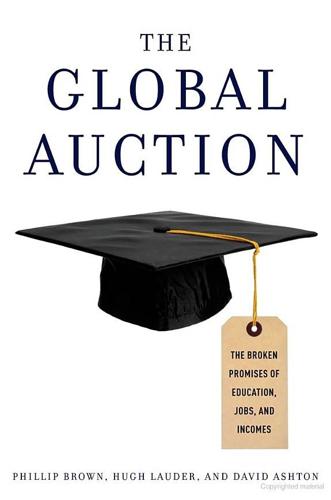
The Global Auction: The Broken Promises of Education, Jobs, and Incomes
by
Phillip Brown
,
Hugh Lauder
and
David Ashton
Published 3 Nov 2010
David Ricardo, a nineteenth-century English political economist, argued the case for free trade, believing that rich and poor nations alike could gain from trading with each other as long as they specialized in products for which they had an advantage. The rise of the global knowledge economy was believed to remove much of the source of conflict and strife between nations. Trade liberalization was presented as a “win-win” opportunity for emerging and affluent nations. The territorial disputes that drove nations to war in pursuit of land and material wealth became less important in terms of power, privilege, and wealth. According to Richard Rosecrance of Harvard’s Kennedy School: “In the past, material forces were dominant in national growth, prestige, and power; now products of the mind take precedence.
…
Quality: From Local Adaptation to Global Markets We have already seen how Western companies have played a key role in the transfer of knowledge in China and India. The opening up of new markets to more than 2 billion potential consumers led them to follow the market. Some of these companies had a presence across Asia decades before the creation of the World Trade Organization in 1995, but trade liberalization in both China and India proved irresistible to many other companies.4 American household brands where among those quick to recognize how the extension of global trade gave them access to new consumer markets and gave them the potential to revolutionize their global operations. This will be examined in a later chapter, but first we need to investigate the role of these companies in moving price competition up the value chain by achieving global quality standards in low-cost locations.
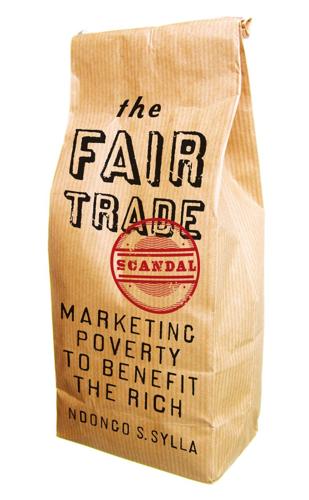
The Fair Trade Scandal: Marketing Poverty to Benefit the Rich
by
Ndongo Sylla
Published 21 Jan 2014
Booth, Philip (2008) ‘The Economics of Fair Trade: A Christian Perspective’, Institute of Economic Affairs (www.iea.org.uk, accessed August 2013). Boris, Jean-Pierre (2005) Commerce inéquitable: le roman noir des matières premières [Unfair Trade: The Dark Story of Raw Materials] (Paris: Hachette littératures). Bouët, Antoine (2008) ‘The Expected Benefits of Trade Liberalization for World Income and Development. Opening the “Black Box” of Global Trade Modelling’, Food Policy Review 8 (Washington, DC: International Food Policy Research Institute). Bowes, John (2011) The Fair Trade Revolution (London: Pluto Press). Brenner, Robert (1977) ‘The Origins of Capitalist Development: a Critique of Neo-Smithian Marxism’, New Left Review 104: 25–92.
…
Understanding the “Coffee Crisis”’, Center for Trade Policy Studies, Trade Briefing Paper no. 16, May, Washington, DC: Cato Institute. Brown, Michael B. (1993) Fair Trade: Reform and Realities in the International Trading System (London: Zed Books). Bureau, Jean-Christophe, Jean, Sebastian and Matthews, Alan (2006) ‘The Consequences of Agricultural Trade Liberalization for Developing Countries: Distinguishing Between Genuine Benefits and False Hopes’, World Trade Review 5(2): 225–49. Chang, Ha-Joon (2002) Kicking Away the Ladder: Development Strategy in Historical Perspective (London: Anthem Press). 164 Sylla T02779 01 text 164 28/11/2013 13:04 bibliography Chang, Ha-Joon (2008) Bad Samaritans: The Myth of Free Trade and the Secret History of Capitalism (New York: Bloomsbury Press).

Age of the City: Why Our Future Will Be Won or Lost Together
by
Ian Goldin
and
Tom Lee-Devlin
Published 21 Jun 2023
The Butterfly Defect: How Globalization Creates Systemic Risks, and What to Do About It Divided Nations: Why Global Governance is Failing, and What We Can Do About It Exceptional People: How Migration Shaped our World and Will Define Our Future Globalization for Development The Case for Aid The Economics of Sustainable Development Economic Reform and Trade Modelling Economy-wide Reforms Trade Liberalization: Global Economic Implications Open Economies Trade: What’s at Stake? The Future of Agriculture Lessons from Brazil Making Race: The Politics and Economics of Racial Identity Contents List of Figures Preface 1 Introduction 2 Engines of Progress 3 Levelling Up 4 Divided Cities 5 Remote Work: The Threat to Cities 6 Cities, Cyberspace and the Future of Community 7 Beyond the Rich World 8 The Spectre of Disease 9 A Climate of Peril 10 Conclusion: Better Together Acknowledgements Notes Bibliography Index List of Figures Figure 1: More than half the world’s population now lives in cities Figure 2: Income dispersion across cities varies from country to country Figure 3: Rising sea levels will leave many cities under water Preface We live in tumultuous times.
…
Index abortion here abstract mathematics here Achaemenid Empire here Adani, Gautam here agglomeration effects here agriculture here, here, here, here, here, here, here, here, here and carbon emissions here and disease here, here productivity here, here vertical farming here Ahmedabad here air-conditioning here, here airports here, here, here, here Albuquerque here Alexandria here Allen, Paul here Allen, Thomas here Altrincham here Amazon here, here, here Amazon rainforest here Amsterdam here Anatolia here Anderson, Benedict here Anheuser-Busch here antibiotics here, here, here Antonine Plague here Anyang here apartment conversions here, here Apple here, here, here Aristotle here Arizona State University here Arlington here Assyrian merchants here Athens, Ancient here, here, here, here, here, here Atlanta here, here Austin here, here, here automation here, here, here, here, here, here, here, here axial precession here Baghdad, House of Wisdom here Baltimore here, here Bangalore here, here Bangkok here Bangladesh here, here, here, here Barlow, John Perry here Bauhaus here Beijing here, here Belmar redevelopment here Berkes, Enrico here Berlin here, here, here Berlin Wall, fall of here Bezos, Jeff here biological weapons here ‘biophilia’ here biospheres here bird flu here Birmingham here, here Black Death here, here, here Blake, William here Bloom, Nick here BMW here ‘bobo’ (bourgeois bohemian) here, here, here Boccaccio, Giovanni here Boeing here, here, here Bogota here Bologna here Bonfire of the Vanities here Borneo here Boston here, here, here Boston University here, here Brand, Stewart here Brazil here, here Brexit here, here, here Bristol here Britain broadcasting here deindustrialization here education here enclosure movement here foreign aid here high-speed rail here, here house prices here immigration here industrialization here, here infant mortality here ‘levelling up’ here life expectancy here mayoralties here per capita emissions here per capita incomes here remote working here social housing here Brixton riots here broadcasting here Bronze Age here, here, here, here bronze, and shift to iron here Brooks, David here Brynjolfsson, Eric here Burgess, Ernest here bushmeat here, here Byzantine Empire, fall of here Cairncross, Frances here Cairo here calendar, invention of here Cambridge, Massachusetts here Cambridge University here canals here, here, here ‘cancel culture’ here Cape Town here Catholic Church here C40 Cities partnership here Chadwick, Edwin here Chang’an (Xi’an) here, here, here, here Charles, Prince of Wales here charter cities here Chengdu here Chiba here Chicago here, here, here, here, here, here, here, here childbirth, average age at here childcare here, here, here, here, here China here ancient here, here, here, here call-centre workers here cereal production here civil strife here and Covid-19 pandemic here Cultural Revolution here definition of cities here economic liberalization here entry into WTO here Household Responsibility System here hukou system here One Child Policy here Open Coastal Cities here per capita emissions here rapid ageing here Special Economic Zones here technology here urbanization here China Towns here Chinese Communist Party here cholera here, here, here, here Chongqing here cities, definition of here Citigroup here city networks here civil wars here Cleveland here, here, here, here climate change here, here, here, here, here, here, here, here, here, here coastal cities here, here, here, here commuting here, here, here, here, here, here, here, here Concentric Zone Model here Confucius here conspiracy theories here Constantinople here, here containerization here, here Copenhagen here, here Corinth here Cornwall here corruption here Coventry here, here covid-19 see pandemics crime rates here ‘cyberbalkanization’ here cycling here, here, here, here Damascus here Dark Ages here, here data science here de Soto, Hernando here deforestation here, here, here, here Delhi here Dell here Delphic oracle here democracy here, here, here Democratic Republic of Congo here, here, here, here, here, here Deng Xiaoping here dengue fever here Denmark here, here Detroit here, here, here, here, here, here, here Dhaka here, here, here, here, here Dharavi here Diana, Princess of Wales here diasporas here, here Dickens, Charles here district heating systems here Dresden here drought here, here, here, here, here, here, here Drucker, Peter here dual-income households here, here Dubai here, here, here Dunbar, Kevin here Düsseldorf here East Antarctic ice sheet here East China Sea here, here Easterly, William here Eastern Mediterranean here, here, here Ebola here Edinburgh here education here, here, here, here, here, here, here, here, here, here, here, here, here, here higher education here, here, here, here; see also universities Japanese school system here Egypt here, here Ancient here, here, here, here Ehrenhalt, Alan here electric vehicles (EVs) here Engels, Friedrich here Enlightenment here Epic of Gilgamesh here Erfurt here Ethiopia here, here Euripides here European Enlightenment here exchange rates here Facebook here, here, here fake news here famine here, here fertility rates here, here, here ‘15-minute city’ principle here Fischer, Claude here Fleming, Alexander here flooding here, here, here, here, here, here, here Florida, Richard here, here food shortages here Ford, Henry here, here foreign aid here fossil fuels here, here France here, here, here, here, here, here, here, here, here, here, here Frankfurt here Franklin, Benjamin here Friedman, Thomas here, here Fryer, Roland here Fukuoka here, here Gaetani, Ruben here Galileo Galilei here Ganges River here Garden Cities here Garden of Eden here Gates, Bill here, here gay community here General Electric here General Motors here genetic engineering here gentrification here, here, here, here, here George, Andy here Germany here, here, here, here, here, here Gingrich, Newt here glaciers here Glasgow here Glass, Ruth here global financial crisis here, here, here global population, size of here globalization here, here, here, here, here, here, here, here, here, here Goldstein, Amy here Google here, here, here Goos, Maarten here Grant, Adam here Great Depression here, here Greece, Ancient here, here, here, here, here Griffith Observatory here Gropius, Walter here Gruen, Victor here Gulf Stream here Haiti here Hamburg here Hanseatic League here, here Harappa here, here Harry, Prince here Harvard University here hate speech here Haussmann, Baron here, here Hawaii here Hazlitt, William here healthcare here, here, here, here, here, here, here, here, here, here heatwaves here, here Hebei here Heckscher, Eli here Herodotus here Himalayas here Hippocrates here Hippodamus here Hittite Empire here HIV here, here Ho Chi Minh City here Holocene here, here, here homophily here Hong Kong here house prices here, here, here, here, here, here, here Houston here, here, here Howard, Ebenezer here Hudson River here Hugo, Victor here Hume, David here Hurricane Katrina here hybrid working, see remote and hybrid working ice melting here, here import substitution industrialization here InBev here India here, here, here, here, here, here, here, here, here fertility rates here Indonesia here, here Indus River here Indus Valley here, here, here inequality here, here, here, here, here, here, here, here, here, here, here infant and child mortality here, here, here, here influenza here, here, here ‘information cocoons’ here Instagram here internet here, here, here, here, here, here invention here, here, here, here, here, here, here, here, here, here irrigation here, here, here, here Italy here Jacobs, Jane here, here, here Jakarta here, here James, Sheila here Japan here, here, here, here, here, here, here, here, here post-war development here schooling system here Jenner, Edward here Jesus Christ here Jobs, Steve here jobs apprenticeships here ‘lousy’ and ‘lovely’ here tradeable and non-tradeable here Justinian Plague here Kashmir here Kenya here Kinshasa here, here Kish here knowledge workers here, here, here, here, here, here, here, here, here, here, here, here Koch, Robert here Kolkata here Korean War here Krugman, Paul here Kushim Tablet here Lagash here Lagos here, here, here, here, here, here, here Lahore here land titling programmes here Las Vegas here Latin language here Lee Kuan Yew here, here Leeds here, here Leicester here Leipzig here, here, here, here Letchworth here life expectancy here, here, here, here, here, here Liverpool here, here Ljubljana here London here, here, here, here, here, here, here bike lanes here Canary Wharf here, here Chelsea here, here, here China Town here cholera outbreaks here City of London here, here coffeehouses here and Covid-19 pandemic here financial services here gentrification here, here, here Great Stink here, here heatwaves here, here house prices here, here hybrid working here, here immigration here, here incomes here, here mayoralty here migration into inner London here population growth here, here, here poverty here, here public transport here, here, here slum housing here social housing here suburbanization here Los Angeles here, here, here, here Louisville here Luoyang here Luther, Martin here Luton Airport here Luxembourg here, here Lyon here McDonald’s here McDonnell Douglas here McLuhan, Marshall here Madagascar here malaria here, here, here, here Malaysia here Mali here malls, reinvention of here Manchester here, here, here, here, here, here, here Manila here Manning, Alan here Markle, Meghan here marriage here Marshall, Alfred here Marshall, Tim here Marx, Karl here Maya here, here measles here, here, here Meetup here mega regions here Mekong River here Memphis, Egypt here, here Mesoamerica here, here Mesopotamia here, here, here metallurgy here metaverse here methane here, here Mexico here Miami here, here, here microbiology here Microsoft here, here, here middle class, rise of here migration policy here millennial generation here Milwaukee here, here Minoan civilization here Mistry, Rohinton here MIT here MMR vaccine here ‘modernization’ theory here Mohenjo-Daro here, here Moretti, Enrico here, here mortality rates here, here, here, here, here, here, here, here, here, here, here, here motor car, invention of here Moynihan, Daniel here Mumbai here, here Mumford, Lewis here, here, here, here Munich here, here Mycenaean civilization here Nagoya here, here Nairobi here Nashville here National Landing, Arlington here Natural History Museum here natural resource exports here Nestlé here Netherlands here network effects here New Economics Foundation here New Orleans here, here New York here, here, here, here, here, here, here, here, here, here carbon emissions here and Covid-19 pandemic here gentrification here, here housing here, here, here incomes here, here Manhattan here, here, here, here, here population growth here, here and rising sea levels here slum housing here suburbanization here, here subway here waste and recycling here New York Central Railroad here New York World Fair here Newcastle here Nextdoor here Niger here Nigeria here, here, here, here Nilles, Jack here, here Nipah virus here Norway here, here Nottingham here Novgorod here ocean and air circulation here office rental and sales prices here Ohlin, Bertil here Oldenburg, Ray here online deliveries here OpenTable here Osaka here, here Oslo here Ottoman Empire here Oxford, population of here Oxford University here Pacific Belt Zone here Padua here Pakistan here, here, here pandemics here, here, here, here, here, here, here, here, here, here, here, here, here, here and zoonotic diseases here paramyxovirus here Paris here, here, here, here, here, here, here, here, here, here, here, here, here, here, here, here Paris Conference (2015) here Park Chung-hee, General here parks here Pasteur, Louis here Pearl River Delta here, here Peñalosa, Enrique here per capita income here Philadelphia here Philippines here, here Phoenix here, here Pixar here plague here, here, here, here Plato here plough, invention of here pollution here, here, here, here air pollution here, here, here, here population growth here, here, here, here, here, here, here, here PORTL here potter’s wheel, invention of here printing press here, here productivity here, here, here, here, here agricultural here, here Protestantism, rise of here public transport here, here, here, here, here, here, here, here, here, here, here, here, here, here Putnam, Robert here, here quarantine here railways here, here, here, here, here high-speed rail here, here, here Ralston Purina here Reagan, Ronald here recycling here, here religion here remote and hybrid working here, here, here, here Renaissance Florence here, here, here renewable energy here, here Republic of Letters here République des Hyper Voisins here ‘resource curse’ here Rheingold, Howard here Ricardo, David here Rio de Janeiro here Riverside, San Francisco here robotics here Rockefeller, John D. here Roman Empire here, here, here Rome, Ancient here, here, here, here, here, here Romer, Paul here Rotterdam here Rousseau, Jean-Jacques here, here Sahel here, here sailboat, invention of here St Augustine here St Louis here, here, here Salesforce here San Diego here San Francisco here, here, here, here, here, here, here, here, here, here, here gentrification here, here hybrid working here, here San Francisco Bay Area here, here, here Santa Fe here São Paulo here Savonarola, Girolamo here Scientific American here Scott, Emmett J. here sea levels, rising here, here, here Seattle here, here, here, here, here, here Second Opium War here Seneca here Seoul here Shanghai here, here, here, here, here Shantou here Sheffield here, here, here Shen Nung here Shenzhen here, here Siemens here Silk Roads here, here Sinclair, Upton here Singapore here, here, here, here Slater, Samuel here smallpox here, here Smith, Adam here, here Snow, John here social capital here social housing here, here social media here, here, here, here, here Socrates here solar panels here South Africa here South Korea here, here, here, here, here, here Southdale Center here specialization here, here, here, here, here, here Spengler, Oswald here Starbucks here Stephenson, Neal here Stewart, General William here Stuttgart here Sub-Saharan Africa here subsidiarity principle here suburbanization here, here, here, here, here, here, here, here, here Sunstein, Cass here Sweden here, here Sydney here, here, here, here, here, here Syrian refugees here, here Taiwan here Tanzania here telegraph here Tempest, Kae here Thailand here Thames River here, here Thatcher, Margaret here, here, here ‘third places’ here Tianjin here Tocqueville, Alexis de here Toffler, Alvin here Tokyo here, here, here, here trade liberalization here trade routes here Trump, Donald here, here tuberculosis here, here, here Twain, Mark here Twitter here, here typhoid here, here typhus here, here Uber here Uganda here Ukraine here, here Umayyad Caliphate here unemployment here, here United Nations here, here United States anti-global populism here anti-trust regulation and industrial consolidation here anxiety and depression here broadcasting here car registrations here cost of education here decline in trust here deindustrialization here Gilded Age here Great Migration here house prices here, here immigration here industrialization here inequality here labour mobility here ‘magnet schools’ here parking spaces here patent filings here per capita emissions here, here per capita incomes here remote working here, here, here return on equity here Rust Belt here schools funding here slavery here socioeconomic mobility here suburbanization here tax revenues here US Federal Housing Authority here US General Social Survey here US Trade Adjustment Assistance Program here universities here, here, here University College London here University of Texas here university-educated professionals here Ur here urban heat island effect here urbanism, subcultural theory of here Uruk here, here, here, here, here vaccines here, here Van Alstyne, Marshall here Vancouver here Venice here, here Vienna here, here Vietnam here voluntary associations here, here Wakefield, Andrew here walking here, here, here Wall Street here Warwick University here Washington University here WELL, The here Welwyn Garden City here wheel, invention of here wildfires here, here William the Conqueror here Wilson, Edward Osborne here, here Wilson, William here World Bank here, here World Health organization here World Trade Organization here World Wide Web here writing, invention of here Wuhan here, here Xiamen here Yangtze River here, here Yangtze River Delta here yellow fever here Yellow River here, here Yersinia pestis here Yokohama here YouTube here, here Yu the Great here Zhuhai here Zoom here Zoroastrianism here BLOOMSBURY CONTINUUM Bloomsbury Publishing Plc 50 Bedford Square, London, WC1B 3DP, UK 29 Earlsfort Terrace, Dublin 2, Ireland BLOOMSBURY, BLOOMSBURY CONTINUUM and the Diana logo are trademarks of Bloomsbury Publishing Plc This electronic edition first published in Great Britain 2023 Copyright © Ian Goldin and Tom Lee-Devlin 2023 Ian Goldin and Tom Lee-Devlin have asserted their right under the Copyright, Designs and Patents Act, 1988, to be identified as Authors of this work All rights reserved.
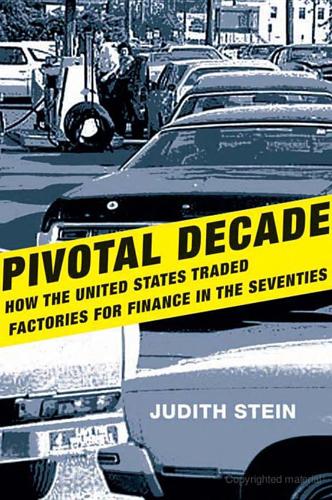
Pivotal Decade: How the United States Traded Factories for Finance in the Seventies
by
Judith Stein
Published 30 Apr 2010
Connally and Nixon, who had neither institutional nor ideological loyalties, were agnostic. Both just wanted to get the job done— reverse the balance of payments, produce prosperity, and reduce unemployment. The bold action, especially the temporary border tax, was the stick to get the Europeans to accept a big shift in exchange rates, trade liberalization, and more help on defense costs. Although publicly the Japanese condemned Nixon’s “shock,” privately government officials acknowledged that America’s trade deficit with Japan was unacceptable and that the president had “in effect ‘lanced the boil’ without singling out Japan as culprit.”87 In December, Japan did revalue the yen by nearly 17 percent, more than any other nation, although movement on trade was snail-paced.
…
Henry Owen told Carter that “others will look to you to speak to the common interest, to the need for according it priority over more parochial concerns, and to the US willingness to play its full part in mutually reinforcing actions to this end.”69 Those parochial concerns were national interests, like the specialty steel industry. Although Owen thought that the price was worth paying, he understood that it was a price. This was not simply an American conclusion. Two British scholars in 1976 wrote that “postwar trade liberalization has been a beneficial exercise for America’s trade partners, and … if any country could be said to have ‘lost’ within our given time horizon it was the United States itself.”70 But as many more industries were threatened by imports, American elites could not avoid responding to “parochial” industrialists and union leaders.
…
The new financial order departed from the gold exchange standard in three fundamental ways: 1) Pegged exchange rates became adjustable, subject to special agreements. 2) Capital controls were permitted to limit the volatility of international capital flows. 3) The IMF could monitor national economic policies and extend balance of payment financing to countries at risk. 22. The British wanted to complement trade liberalization with full employment policies and escape clauses to protect economies from balance of payments pressures and deflation. Instead, the GATT reflected the internationalists in the State Department and took little consideration of domestic concerns. Nitsan Chorev, Remaking U.S. Trade Policy: From Protectionism to Globalization (Ithaca, N.Y.: Cornell University Press, 2007), 50–53. 23.
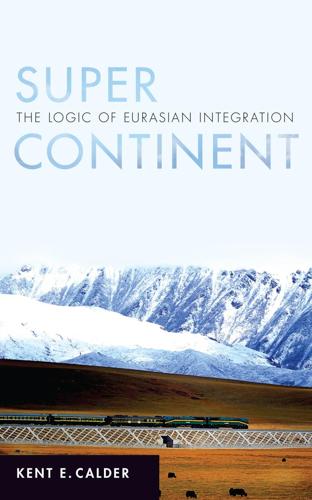
Super Continent: The Logic of Eurasian Integration
by
Kent E. Calder
Published 28 Apr 2019
Europe’s steady march toward economic integration, from the Treaty of Rome (1957) to Maastricht (1992) and the advent of the common currency (1999), naturally encouraged such logistical advances as well. The rich geography of European transport, involving complex transfers among rail, road, river, and sometimes air, made intermodal transport innovation a high priority. Digitalization has synergistically amplified the potential efficiency gains available through trade liberalization. These gains showed up first within the European Community early in the twenty-first century. They spawned the dynamic expansion of new logistics providers such as Deutsche Post DHL, formed by Deutsche Post’s acquisition of DHL in 2002 and Airborne Express in 2003. By 2013 this postal-based European firm was drawing 53 percent of its total revenue from logistics alone.41 China is the world’s largest manufacturer and naturally, like other large manufacturers such as Germany, is preoccupied with improving transporta- The Logic of Integration 87 tion efficiencies for physical goods.
…
Third, NATO’s expansion mutes the ambivalence of the United States about expanding Sino-European ties, due to the felicitous impact that such ties have on NATO’s deterrence capabilities vis-à-vis Russia. Rising Chinese Trade and Investment in Europe The deepening Sino-European relationship flows both from developments within China as well as the historic changes in Europe outlined above. On the trade side, China’s explosive growth of the past four decades, coupled with a degree of trade liberalization after China joined the WTO in December 2001, have naturally made China a larger and larger market for European firms, as indicated in Figure 8.1. The pace of expansion in trade reliance on China has flattened since 2010, however, as China’s growth has slackened and penetrating the Chinese market has grown more difficult, for a variety of reasons.
…
Yet they now face increasing challenge in maintaining both prosperity and stability within a changing, increasingly mobile Chinese society, ever more interdependent with the world, that features both a rising middle class and growing economic inequality. The BRI, it is argued, helps to sustain the role of established political institutions and industries, therefore serving a central and predictable foreign policy function under President Xi Jinping. How financial or trade liberalization might impact the stability of this system is a critical uncertainty that will profoundly shape China’s—and Eurasia’s—future. Shadows and Critical Uncertainties 205 Predictable shadows on the Eurasian future include demographic change (the graying of Asian society), globalization, ethno-religious conflict, weapons of mass destruction, and possible conflict over natural resources, especially under high-growth scenarios.
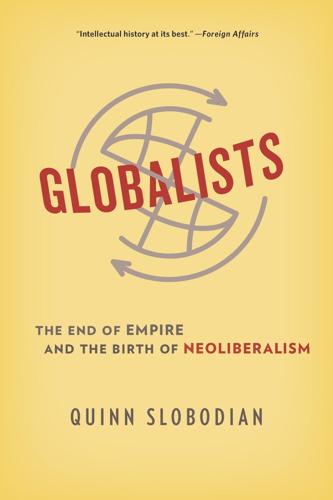
Globalists
by
Quinn Slobodian
Published 16 Mar 2018
In a piece written in a festschrift for Erhard the same year, Haberler spoke similarly about the outsiders, including “Latin American countries, which are much poorer than Europe,” that will be injured by European trade discrimination “and had no reason to accept this injury calmly.”124 Europe itself may profit, Haberler argued, “but the world economy as a whole loses.”125 “The question about an alternative to discriminatory integration policy is easy to answer. The alternative is: overall trade liberalization [as advocated by GATT].”126 Even against Haberler’s precise intentions, his report launched a new era at the GATT. As a follow-up to the Haberler Report, the contracting parties at their thirteenth session in November 1958 decided to establish three committees to examine various types of action to promote an expansion of international trade.127 The working group called “Committee III” initiated a “permanent shift” in the GATT relationship to developing countries in favor of their demands for market access.128 For the next two decades, the developing countries were able to use GATT successfully to lobby for exemptions from “disciplines” of nondiscrimination and for permission to deviate from the strictures of the treaty.129 One scholar notes that Haberler openly opposed the interpretation of the report’s finding as proof for the theory of the declining terms of trade, arguing instead that “more trade” would solve the problem in the long run.130 In 1964 he declared confidently that “the less developed countries have greatly benefited from the expansion of world trade and that the prosperity in ‘the industrial centers’ has spread to ‘the less developed periphery.’ ” Failure to grow more quickly was the fault of their own protectionism.131 In a notable irony, the Geneva School attempt to lock in liberal trade policy through the Haberler Report ended up creating the conditions for the precise opposite: ammunition for a Global South argument against a one-size-fits-all application of trade rules.
…
He used other cybernetic terms elsewhere, including “closed circuit feedback loops,” “circular causality,” “spill-over,” and “spill-back mechanisms.” Petersmann, “Die Dritte Welt und das Wirtschaftsvölkerrecht,” 513. 173. Petersmann, “Völkerrecht und Entwicklung,” 161. 174. Richard Blackhurst, Nicolas Marian, and Jan Tumlir, Trade Liberalization, Protectionism, and Interdependence (Geneva: GATT, 1977), 5. 175. Tumlir, “National Sovereignty, Power and Interest,” 21. 176. Jan Tumlir, “How the West Can Pay the New Arab Oil Bill,” Sunday Times (London), February 3, 1974. 177. Tumlir, “National Sovereignty, Power and Interest,” 2. 178.
…
Jan Tumlir, “Notes on the Theory and Present State of International Economic Order,” paper presented at the International Conference on the Free Trade Movement in Latin America, June 21–24 [1981], Haus Rissen, Hamburg, Hayek Papers, Duke, box 53, folder 28. 181. Ibid. 182. Tumlir, “National Sovereignty, Power and Interest,” 24. 183. Richard Blackhurst, Nicolas Marian, and Jan Tumlir, Adjustment, Trade and Growth in Developed and Developing Countries (Geneva: GATT, 1978), 1. 184. Blackhurst, Marian, and Tumlir, Trade Liberalization, Protectionism, and Interdependence, 49. 185. Tumlir, “International Economic Order and Democratic Constitutionalism,” 72. 186. Ibid., 80. 187. Tumlir, “Need for an Open Multilateral Trading System,” 403. 188. Ibid.; emphasis in the original. The field of public choice and so-called constitutional economics (a term coined by Richard MacKenzie in 1982) is the silent partner in much of the discussion in this chapter, but it is not included for reasons of space.
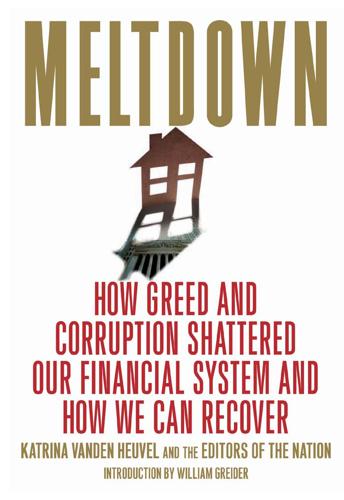
Meltdown: How Greed and Corruption Shattered Our Financial System and How We Can Recover
by
Katrina Vanden Heuvel
and
William Greider
Published 9 Jan 2009
The former Treasury Secretary, now executive co-chair of Citigroup, captured the party’s allegiance in the 1990s as principal architect of Bill Clinton’s governing strategy, the conservative approach known as “Rubinomics” (or less often “Clintonomics”). Balancing the budget and aggressively pushing trade liberalization went hard against liberal intentions and the party’s working-class base. But when Clinton’s second term ended in booming prosperity, full employment and rising wages, most Democrats told themselves, Listen to Bob Rubin and good things happen. So it’s a big deal when Robert Rubin changes the subject and begins to talk about income inequality as “a deeply troubling fact of American economic life” that threatens the trading system, even the stability of “capitalist, democratic society.”
…
Middle-class wages fall at the top, but the bottom does not rise as rapidly as it should. “But it’s a complicated question,” Rubin responds. Improving the distribution of incomes in poorer countries “is in everybody’s interest,” he agrees. “On the other hand, I’ve had exposure to people who make that argument, and I think they make it as a way to prevent trade liberalization. ... The one hope some of these countries have to take people out of abject poverty is that their labor-cost advantage will result in a shift of production to their countries. ... Would you say the people of Sri Lanka have to stay in abject poverty to keep that from happening?” Labor rights, I counter, do not prevent the very poorest countries from developing on the advantage of their cheap labor, but reform would require all developing countries to operate so that wage levels can rise proportionate to the economy’s rising productivity and profit, however that is measured.

23 Things They Don't Tell You About Capitalism
by
Ha-Joon Chang
Published 1 Jan 2010
Job security has always been low in developing countries, but the share of insecure jobs in the so-called ‘informal sector’ – the collection of unregistered firms which do not pay taxes or observe laws, including those providing job security – has increased in many developing countries during the period, due to premature trade liberalization that destroyed a lot of secure ‘formal’ jobs in their industries. In the rich countries, job insecurity increased during the 1980s too, due to rising (compared to the 1950s–70s) unemployment, which was in large part a result of restrictive macroeconomic policies that put inflation control above everything else.
…
Financial deregulation has created huge opportunities for speculative gains as well as astronomical paycheques for top managers and financiers (see Things 2 and 22). Deregulation in other areas has also allowed companies to make bigger profits, not least because they were more able to exploit their monopoly powers, more freely pollute the environment and more readily sack workers. Increased trade liberalization and increased foreign investment – or at least the threat of them – have also put downward pressure on wages. As a result, income inequality has increased in most rich countries. For example, according to the ILO (International Labour Organization) report The World of Work 2008, of the twenty advanced economies for which data was available, between 1990 and 2000 income inequality rose in sixteen countries, with only Switzerland among the remaining four experiencing a significant fall.1 During this period, income inequality in the US, already by far the highest in the rich world, rose to a level comparable to that of some Latin American countries such as Uruguay and Venezuela.

The Way That Leads Among the Lost: Life, Death, and Hope in Mexico City's Anexos
by
Angela Garcia
Published 30 Apr 2024
Migration” (Annals of the American Academy of Political and Social Science 610); Alyshia Gálvez, Eating NAFTA: Trade, Food Policies, and the Destruction of Mexico (University of California Press); Bill Ong Hing, Ethical Borders: NAFTA, Globalization, and Mexican Migration (Temple University Press); Asa Cristina Laurell, “Three Decades of Neoliberalism in Mexico: The Destruction of Society” (International Journal of Health Services 45, no. 2); Gerardo Otero, “Neoliberal Globalization, NAFTA, and Migration: Mexico’s Loss of Food and Labor Sovereignty” (Journal of Poverty 15, no. 4); Pablo Ruiz Nápoles, “Neoliberal Reforms and NAFTA in Mexico” (Economía UNAM 14, no. 41); Elizabeth F. S. Roberts, “What Gets Inside: Violent Entanglements and Toxic Boundaries in Mexico City” (Cultural Anthropology 32, no. 4); Kathleen Staudt, “How NAFTA Has Changed Mexico” (Current History 117, no. 796); Lilia Domínguez-Villalobos and Flor Brown-Grossman, “Trade Liberalization and Gender Wage Inequality in Mexico” (Feminist Economics 16, no. 4); Sidney Weintraub, ed., NAFTA’s Impact on North America: The First Decade (CSIS Press); Mark Weisbrot et al., “Did NAFTA Help Mexico? An Update After 23 Years” (Mexican Law Review 11, no. 1); and Albert Berry, ed., Poverty, Economic Reform, and Income Distribution in Latin America (Lynne Rienner Publishers).
…
Garcia, Mexico’s Drug War and Criminal Networks: The Dark Side of Social Media (Routledge); John Gibler, To Die in Mexico: Dispatches from Inside the Drug War (City Lights); Ioan Grillo, Blood Gun Money: How America Arms Gangs and Cartels (Bloomsbury); Joel Salvador Herrera, “Cultivating Violence: Trade Liberalization, Illicit Labor, and the Mexican Drug Trade” (Latin American Politics and Society 61, no. 3); Edward Hunt, “Staying the Course in Mexico: The Role of the US in the Drug War, 2006–Present” (Third World Quarterly 40, no. 6); Claudio Lomnitz, “The Ethos and Telos of Michoacán’s Knights Templar” (Representations 147, no. 1); Beatriz Magaloni et al., “Living in Fear: The Dynamics of Extortion in Mexico’s Drug War” (Comparative Political Studies 53, no. 7); Angélica Durán-Martínez, The Politics of Drug Violence: Criminals, Cops, and Politicians in Colombia and Mexico (Oxford University Press); Jorge Fernández Menéndez, El otro poder: Las redes del narcotráfico, la política y la violencia en México (Aguilar); Rolando Ochoa, Intimate Crimes: Kidnapping, Gangs, and Trust in Mexico City (Oxford University Press); Dawn Paley, Drug War Capitalism (AK Press); Guillermo Trejo and Sandra Ley, Votes, Drugs, and Violence: The Political Logic of Criminal Wars in Mexico (Cambridge University Press); Pablo Piccato, Historia mínima de la violencia en México (El Colegio de México AC); Ricardo Ravelo, Herencia maldita: El reto de Calderón y el nuevo mapa del narcotráfico (Grijalbo); Viridiana Rios, “How Government Coordination Controlled Organized Crime: The Case of Mexico’s Cocaine Markets (Journal of Conflict Resolution 59, no. 8), and Viridiana Rios Contreras, “The Role of Drug-Related Violence and Extortion in Promoting Mexican Migration: Unexpected Consequences of a Drug War” (Latin American Research Review 49, no. 3); David Shirk and Joel Wallman, “Understanding Mexico’s Drug Violence” (Journal of Conflict Resolution 59, no. 8); Jeremy Slack, Deported to Death: How Drug Violence Is Changing Migration on the US-Mexico Border (University of California Press); Aileen Teague, “Mexico’s Dirty War on Drugs: Source Control and Dissidence in Drug Enforcement” (Social History of Alcohol and Drugs 33, no. 1); María Celia Toro, Mexico’s “War” on Drugs: Causes and Consequences (Lynne Rienner Publishers); Guillermo Trejo and Sandra Ley, “Why Did Drug Cartels Go to War in Mexico?
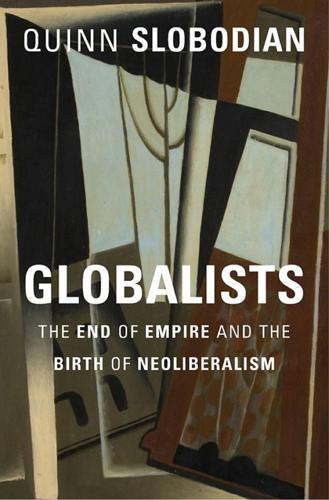
Globalists: The End of Empire and the Birth of Neoliberalism
by
Quinn Slobodian
Published 16 Mar 2018
In a piece written in a festschrift for Erhard the same year, Haberler spoke similarly about the outsiders, including “Latin American countries, which are much poorer than Europe,” that will be injured by European trade discrimination “and had no reason to accept this injury calmly.”124 Europe itself may profit, Haberler argued, “but the world economy as a w hole loses.”125 “The question about an alternative to discriminatory integration policy is easy to answer. The alternative is: overall trade liberalization [as advocated by GATT].”126 Even against Haberler’s precise intentions, his report launched a new era at the GATT. As a follow-up to the Haberler Report, the contracting parties at their thirteenth session in November 1958 decided to establish three committees to examine various types of action to promote an expansion of international trade.127 The working group called “Committee III” initiated a “permanent shift” in the GATT relationship to developing countries in favor of their demands for market access.128 For the next two decades, the developing countries w ere able to use GATT successfully to lobby for exemptions from “disciplines” of nondiscrimination and for permission to deviate from the strictures of the treaty.129 One scholar notes that Haberler openly opposed the interpretation of the report’s finding as proof for the theory of the declining terms of trade, arguing instead that “more trade” would solve the problem in the long run.130 In 1964 he declared confidently that “the less developed countries have greatly benefited from the expansion of world trade and that the prosperity in ‘the industrial centers’ has spread to ‘the less developed periphery.’ ” Failure to grow more quickly was the fault of their own protectionism.131 In a notable irony, the Geneva School attempt to lock in liberal trade policy through the Haberler Report ended up 204 GLOBALISTS creating the conditions for the precise opposite: ammunition for a Global South argument against a one-size-fits-all application of trade rules.
…
He used other cybernetic terms elsewhere, including “closed circuit feedback loops,” “circular causality,” “spill-over,” and “spill-back mechanisms.” Petersmann, “Die Dritte Welt und das Wirtschaftsvölkerrecht,” 513. 173. Petersmann, “Völkerrecht und Entwicklung,” 161. 174. Richard Blackhurst, Nicolas Marian, and Jan Tumlir, Trade Liberalization, Protectionism, and Interdependence (Geneva: GATT, 1977), 5. 175. Tumlir, “National Sovereignty, Power and Interest,” 21. 176. Jan Tumlir, “How the West Can Pay the New Arab Oil Bill,” Sunday Times (London), February 3, 1974. 177. Tumlir, “National Sovereignty, Power and Interest,” 2. 178.
…
Jan Tumlir, “Notes on the Theory and Present State of International Economic Order,” paper presented at the International Conference on the Free Trade Movement in Latin America, June 21–24 [1981], Haus Rissen, Hamburg, Hayek Papers, Duke, box 53, folder 28. 181. Ibid. 182. Tumlir, “National Sovereignty, Power and Interest,” 24. 183. Richard Blackhurst, Nicolas Marian, and Jan Tumlir, Adjustment, Trade and Growth in Developed and Developing Countries (Geneva: GATT, 1978), 1. 184. Blackhurst, Marian, and Tumlir, Trade Liberalization, Protectionism, and Interdependence, 49. 185. Tumlir, “International Economic Order and Democratic Constitutionalism,” 72. 186. Ibid., 80. 187. Tumlir, “Need for an Open Multilateral Trading System,” 403. 188. Ibid.; emphasis in the original. The field of public choice and so-called constitutional economics (a term coined by Richard MacKenzie in 1982) is the silent partner in much of the discussion in this chapter, but it is not included for reasons of space.
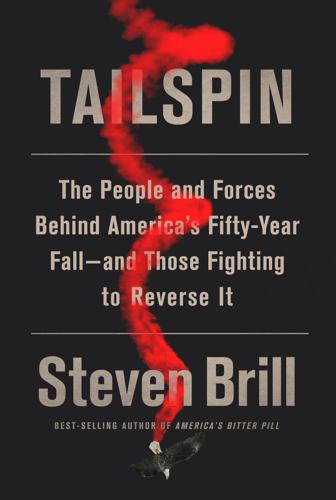
Tailspin: The People and Forces Behind America's Fifty-Year Fall--And Those Fighting to Reverse It
by
Steven Brill
Published 28 May 2018
There were some holdouts, particularly the longshoremen’s union, whose workers unloaded the ships bringing in the growing imports of textiles, footwear, machine tools, appliances, consumer electronics, cars, and other goods. However, by 1970—the year before the U.S. would fall into what would become a perpetual and growing trade deficit—the unions’ position had jelled into outright opposition to the Kennedy Round of trade liberalization. In May 1970, the AFL-CIO circulated a paper around Washington that read like a 2016 Donald Trump or Bernie Sanders speech. “The United States position on world trade deteriorated in the 1960’s, with an adverse impact on American workers, communities, and industries,” the union paper declared.
…
“But Nixon and everyone else just paid lip service to it. Nothing really happened. * * * — The Nixon administration was not the first to pay that kind of lip service to the idea of training American workers to be more competitive. It started in the Kennedy years. When Kennedy proposed global trade liberalization in 1962, he tacked on a program called Trade Adjustment Assistance, or TAA. He justified it with the same argument to Congress that Peterson would make nine years later about not forcing a small group to pay the cost of a beneficial change in national policy. “When considerations of national policy make it desirable to avoid higher tariffs, those injured by that competition should not be required to bear the full brunt of the impact,” Kennedy urged.
…
More subsidy would mean greater Federal control and ultimately higher taxes for such subsidies….The only logical conclusion I can draw from the present trade bill is that socialization of industry must be the inevitable result if we embark on this avenue.” Others opposed TAA because the subsidies would give special treatment for those affected by trade liberalization. It was a position that might logically have led to the kind of overall job-training initiatives that would be advocated fruitlessly by Peterson in 1971. Instead, those making the argument used it as a rationale to block all subsidies. “Particularly objectionable is the treatment accorded workers dis-employed by imports under the bill,” said Prescott Bush, a Republican senator from Connecticut (and father and grandfather of the future presidents Bush).
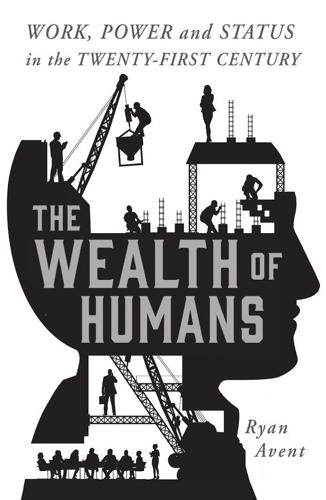
The Wealth of Humans: Work, Power, and Status in the Twenty-First Century
by
Ryan Avent
Published 20 Sep 2016
Yet a series of momentous economic changes beginning in the 1970s and carrying through the 1980s boosted the economic importance of social capital. Economic liberalization and deregulation contributed to this process. Britain and America reduced tax rates and liberalized, and privatized, government-dominated sectors in the 1980s; other European economies followed in earnest in the 1990s. The long process of trade liberalization that had begun in the post-war decades continued, and was joined by a push to open up cross-border capital flows. Integration of the world economy accelerated, raising the economic return to social organizations capable of managing the more complex economic environment. At the same time, the digital revolution first registered in a significant way in the public consciousness.
…
A California technology company could source component supplies from half a dozen Asian economies, have them all meet together in a Chinese port city for assembly, and then ship the finished package to consumers. This allowed production chains that previously needed to be located within a single firm or country to fragment across an economic archipelago.11 Information technology was not solely responsible for these developments: better shipping technologies and trade liberalization helped. Yet without the ability to coordinate production efficiently and in real time, the system could never have developed. Its effects were profound. Emerging economies no longer needed to slowly and painfully accumulate knowledge and capabilities as they worked their way from production of plastic toys to industrial robots.
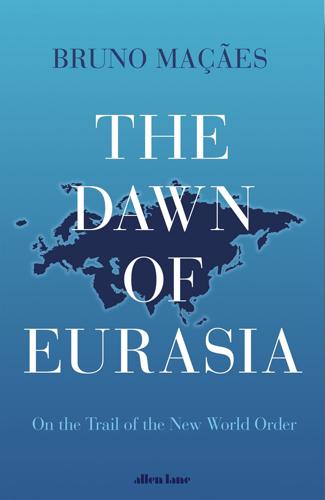
The Dawn of Eurasia: On the Trail of the New World Order
by
Bruno Macaes
Published 25 Jan 2018
In this new age it pays to think across national borders. When intermediate inputs tend to cross borders many times, even small tariffs and border bottlenecks have a cumulative effect and protective measures against imports increase the costs of production and reduce your export competitiveness. These are all good arguments for trade liberalization, but what happens to your ability to organize production along the most efficient lines? If goods are produced entirely within one country, you have full control over the whole process. Once they are produced in the world, the combined result of an intricate division of labour within each value chain, then things get rather tricky.
…
What happens when globalization starts to be perceived as not necessarily advantageous and congenial to Europeans? Unsurprisingly, the commitment to an open global order starts to wobble. As we have witnessed over the last two years, it has become difficult if not impossible to defend further trade liberalization in most European countries, and a number of initiatives have been put forward to limit the impact of Chinese imports and investment acquisitions. Comfort with the world outside is of course much increased if one has the ability to shape or at least influence that world. By historical standards, the European ability to project its power outwards has suffered a precipitous decline, throwing Europeans back to a time when the world seemed a strange and chaotic place, with the not-insignificant difference that there is nothing left of the old ‘civilizing mission’, the impulse to organize far-away places along familiar lines.
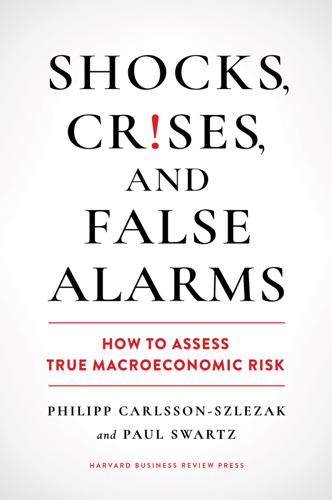
Shocks, Crises, and False Alarms: How to Assess True Macroeconomic Risk
by
Philipp Carlsson-Szlezak
and
Paul Swartz
Published 8 Jul 2024
The rivalry of competing economic systems was also seen as settled, paving the way for convergence toward a neoliberal version of capitalism.6 A polished set of principles emerged to shape new market economies across the globe. Often disseminated through institutions like the IMF and the World Bank, the so-called Washington Consensus offered a playbook for how to get economics right.7 Figure 17.1C shows the degree of global trade liberalization as a proxy for the playbook’s success. This also represented a bubble in economics, the discipline. Not short of hubris, the profession believed it could fix the macroeconomies of the emerging world the way a surgeon would fix a broken body (or, to paraphrase Keynes, the way a dentist fills a cavity).8 Financial convergence.
…
Gary Gerstle, The Rise and Fall of the Neoliberal Order: America and the World in the Free Market Era (New York: Oxford University Press, 2002). 7. The Washington Consensus is an informal set of policy recommendations aimed at promoting economic development in less developed countries. Recommendations include such things as fiscal discipline, trade liberalization, privatization, and liberalization of foreign direct investment inflows. John Williamson, “What Washington Means by Policy Reform,” Peterson Institute for International Economics, November 1, 2002, https://www.piie.com/commentary/speeches-papers/what-washington-means-policy-reform. 8. Keynes once wrote, “If economists could manage to get themselves thought of as humble, competent people on a level with dentists, that would be splendid.”
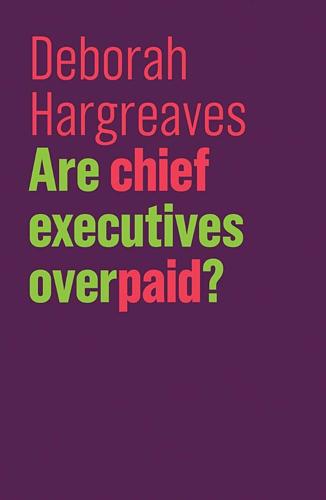
Are Chief Executives Overpaid?
by
Deborah Hargreaves
Published 29 Nov 2018
The absence of trickle down, the growing feeling that business leaders are in it for themselves and the damage to the economy from short-term management incentives, would all indicate that change is required in the way we pay our top bosses. The deep influence of the business sector has imposed globalization and trade liberalization on a populace that finds it hard to discern the benefits. At the same time, they see the corporate elite hand in glove with governments around the world to ensure there is little challenge to the current set-up. This reinforces the impression among the public that the system is rigged and the powerful are not just greedy but corrupt as well.
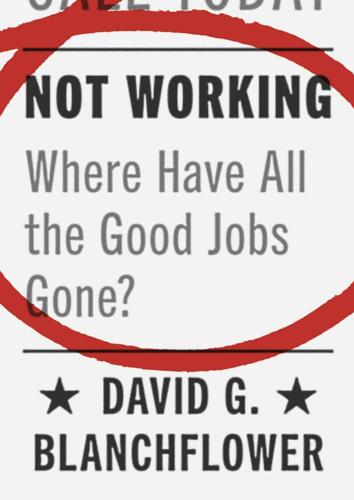
Not Working: Where Have All the Good Jobs Gone?
by
David G. Blanchflower
Published 12 Apr 2021
A recent study explored the relationship between mortality and a plausibly exogenous change in U.S. trade policy in October 2000: granting Permanent Normal Trade Relations (PNTR) to China that differentially exposed U.S. counties to increased international competition via their industry structure.45 The authors of the study found that counties more exposed to trade liberalization exhibit higher rates of suicide among whites and especially white men. Case and Deaton argue that the rise in mortality of prime-age, less-educated whites in the United States is explained by cumulative disadvantage, which they suggest is “rooted in the steady deterioration in job opportunities for people with low education.
…
MacCulloch. 2004. “Inequality and Happiness: Are Europeans and Americans Different?” Journal of Public Economics 88 (9–10): 2009–42. Algan, Y., and P. Cahuc. 2013. “Trust, Well-Being and Growth: New Evidence and Policy Implications.” IZA Discussion Paper No. 7464, Bonn. Amiti, M., and J. Konings. 2007. “Trade Liberalization, Intermediate Inputs, and Productivity: Evidence from Indonesia.” American Economic Review 97 (5): 1611–38. Anderson, S. A., C. S. Russell, and W. R. Schumm. 1983. “Perceived Marital Quality and Family Life-Cycle Categories: A Further Analysis.” Journal of Marriage and the Family 45: 127–39.
…
“Suicide Rates by Major Occupational Group—17 States, 2012 and 2015.” Morbidity and Mortality Weekly Report 67 (45): 1253–60. Phillips, A. W. 1958. “The Relation between Unemployment and the Rate of Change of Money Wage Rates in the United Kingdom, 1861–1957.” Economica 25 (100): 283–99. Pierce, J. R., and P. K. Schott. 2016. “Trade Liberalization and Mortality: Evidence from U.S. Counties.” Paper #2016–094. Finance and Economics Discussion Series, Divisions of Research & Statistics and Monetary Affairs, Federal Reserve Board, Washington, DC. Pike, A., D. MacKinnon, M. Coombes, T. Champion, D. Bradley, A. Cumbers, L. Robson, and C.
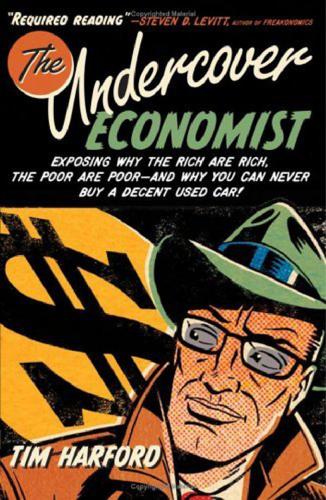
The Undercover Economist: Exposing Why the Rich Are Rich, the Poor Are Poor, and Why You Can Never Buy a Decent Used Car
by
Tim Harford
Published 15 Mar 2006
The policy encourages intensive farming with the obvious results of poor food quality and high use of pesti-cides and fertilizers, and all the while dumps food on the developing world and depresses the prices received by farmers in poor countries. Into the bargain it is helping to derail the current round of world trade liberalization. As Martin Wolf commented in the Financial Times: “This is a multifunctional policy indeed: regressive, wasteful, damaging to food quality and the environment and an obstacle to trade liberalization everywhere.” Other rich nations, especially Japan and Korea, privilege their farmers the same way as the European Union: a third of the typical OECD farm’s revenue comes from government support, and as the second figure on page 217 shows, the more agriculture is subsidized, the more fertilizers it consumes.
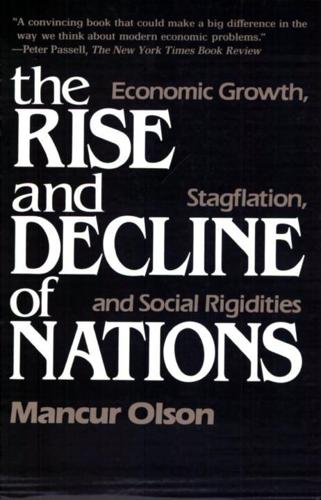
The Rise and Decline of Nations: Economic Growth, Stagflation, and Social Rigidities
by
Mancur Olson
As table 5.2 reveals, Sweden and Switzerland, and especially the latter, have had unusually low levels of protection. Note also that the Japanese economy grew more rapidly in the 1960s than in the 1950s, despite the fact that Japan could gain more from catching up by borrowing foreign technology in the earlier decade than the later. As Alfred Ho emphasizes in Japan's Trade Liberalization in the 1960's, is between 1960 and 1965 the Organization for Economic Cooperation and Development (OECD) "liberalization rate" measure for Japan improved from 41 percent to 93 percent. Finally, note that Germany, which considerably liberalized its economic policies before entering the Common Market, grew more rapidly in the 1950s than in the 1960s, in contrast to EEC partners like Belgium, France, and the Netherlands.
…
Indeed, since we now have a wider array of cases where freer trade is associated with more rapid growth and several aspects of the patterns of growth suggest that the freer trade is connected with the growth, the paradox is heightened. If freer trade leads to more rapid growth, why does it not show up in the measures of the gains from the transactions that the trade liberalization allows to take place? The reason is that there is a further advantage of freer trade that escapes the usual comparative-static measurements. It escapes these measurements because the gains are not direct gains of those who take part in the international transactions that the liberalization permitted, but other gains from increases in efficiency in the importing countryincreases that are distinct from and additional to any that arise because of comparative advantage.
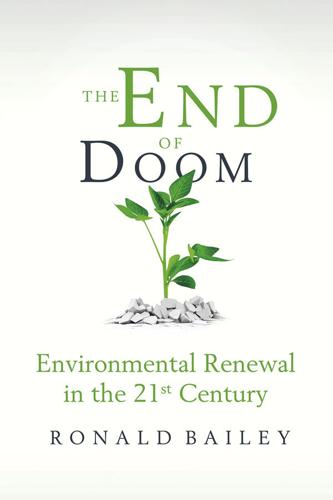
The End of Doom: Environmental Renewal in the Twenty-First Century
by
Ronald Bailey
Published 20 Jul 2015
In addition, Doces cites a 2006 study analyzing the effects on globalization on women in 180 countries that shows “increasing international exchange and communication create new opportunities for income-generating work and expose countries to norms that, in recent decades, have promoted equality for women.”46 As a result, trade-induced demand for human capital expands to include women, further cutting fertility rates in poor countries. This conclusion is further bolstered by a 2005 study by University of Helsinki economists Ulla Lehmijoki and Tapio Palokangas; according to this study, in the short run trade liberalization boosts birth rates, but in the long run it cuts fertility. Again, this is true largely because trade liberalization encourages the development of women’s human capital (education), which makes childbearing relatively more costly. The Invisible Hand of Population Control In 2002, Seth Norton, an economics professor at Wheaton College in Illinois, published a remarkably interesting study, “Population Growth, Economic Freedom, and the Rule of Law,” on the inverse relationship between prosperity and fertility.
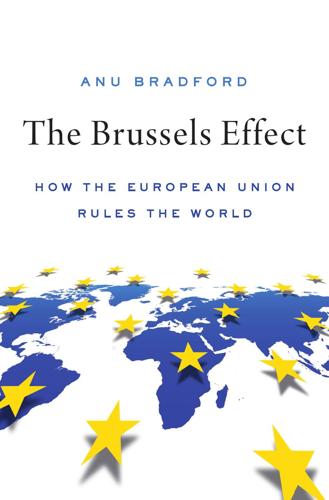
The Brussels Effect: How the European Union Rules the World
by
Anu Bradford
Published 14 Sep 2020
Within these debates, the Brussels Effect also invites us to reconsider the relative roles that governments and markets play in shaping economic outcomes. It also aims to bring a new perspective to discussions on international cooperation by highlighting the power of unilateral rule-making to transform both global markets and global politics. The Brussels Effect challenges the critics of globalization who claim that trade liberalization undermines domestic regulation.4 These critical voices fear that globalization leads to a “race to the bottom” where countries lower their regulatory standards in order to improve their relative competitive position in the global economy.5 Recently, many of the assumptions driving this influential literature have been discredited.6 For example, fears of businesses relocating to pollution havens or capital flights following higher levels of corporate taxation have generally not materialized.
…
The EU’s own successful experience in creating a common market has encouraged it to pursue a global order based on those same rules. More regulation in EU has meant more predictability and stability. This has fostered a belief that an extensive regulatory system is similarly needed to preserve global public goods. The EU subscribes to a view that trade liberalization fails to achieve economic goals without a simultaneous harmonization of policies. For the EU, this offers the most efficient and universally valid model of economic and political integration,79 and potentially a compelling reason to replicate its experience abroad. In recent years, the broader geopolitical context may have provided an additional incentive for the EU to assume the role of a global standard setter.
…
This long-standing tendency to link competition law to the EU’s broader market integration agenda is perhaps the most distinctive feature of EU competition law.27 As described by a European parliament document: “The fundamental objective of EU competition rules is to prevent distortion of competition. This is not however an end in itself. It is rather a condition for achieving a free and dynamic internal market.”28 Seen this way, competition law is an essential complement to trade liberalization, enacted to ensure that private anticompetitive practices do not frustrate the economic gains accomplished through the removal of public barriers, such as tariffs and quotas, between member states. Surely, competition law has always been a mechanism to advance consumer welfare as such—and not only through its contribution toward market integration.29 More competition pushes companies toward efficient allocation of their resources, which results in lower prices and better quality products for consumers.30 While the EU has, over the decades, increasingly come to embrace consumer welfare as the primary goal of competition law, it has always been more open to considering a wider range of additional policy goals, even if at the margin.31 For example, through its competition policy, the EU has advanced values such as fairness,32 the protection of small- and medium-sized companies,33 and the protection of the structure of the market and hence competition as such.34 These multiple goals set the EU apart from the United States that has traditionally focused very narrowly on economic goals—whether determined by consumer welfare or efficiency.35 Presumably, these broader goals behind EU competition law also allow for more bases of intervention, expanding the scope of competition enforcement compared to the scope of the law in the United States, which only allows for an intervention on a narrow basis of consumer harm.36 Beyond these well-established goals of EU competition law, a more skeptical view portrays EU competition policy as a political instrument that is leveraged not just for the benefit of consumers but deployed as a tool for protectionism.37 Protectionist competition policy can manifest itself, for example, in the form of a biased enforcement strategy, with agencies applying more stringent standards to acquisitions by foreign-owned firms than companies that are locally owned.

The Linguist: A Personal Guide to Language Learning
by
Steve Kaufmann
Published 15 Jan 2003
The message of this book was that a Japanese newspaper publisher importing foreign newsprint paper was selling out freedom of speech to a foreign conspiracy. Times have changed now, and Japanese paper companies themselves have built paper mills in many countries of the world, including Canada. In the 1980s, under trade liberalization pressure from the United States, the Japanese Telephone Company (NTT) allowed foreign paper producers to bid for the telephone directory paper business. Our company was the first foreign supplier to pass the quality testing. That was the easy part. It was much more difficult to deal with the cozy relationships between Japanese suppliers and customers, often described by the term “Japan Incorporated.”
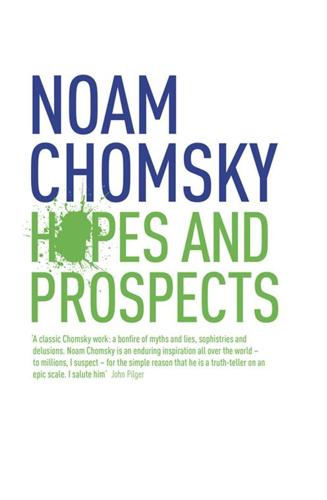
Hopes and Prospects
by
Noam Chomsky
Published 1 Jan 2009
One prominent economic historian, Paul Bairoch, argues that protectionism, paradoxically, has commonly increased trade. The reason, he suggests, is that protectionism tends to stimulate growth, and growth leads to trade; while imposed liberalization, since the eighteenth century, has fairly consistently had harmful economic effects. The historical record provides substantial evidence that “historically, trade liberalization has been the outcome rather than the cause of economic development” (Ha-Joon Chang), apart from the “development” of narrow sectors of great wealth and privilege who benefit from resource extraction.1 From an extensive review, Bairoch concludes that “It is difficult to find another case where the facts so contradict a dominant theory [as the theory] concerning the negative impact of protectionism.”
…
See “free trade” Taylor, Lance, 107 technology, 87–89, 93 terrorism, 26–29, 249 war on, 42, 60–61, 267–68 See also specific topics Texas, annexation of, 17 Thailand, 90 Thucydides, 37 Tiedeman, Christopher, 30 Timor Gap Treaty, 184–85 Torricelli, Robert, 51–52 Torture Convention, UN, 262 torture memos, 259–68 “trade,” concept of, 90 trade liberalization, 76 and third world, 80 See also “free trade” Trujillo, Rafael, 47 Turkey, 44 Turner, Mark, 100 “unholy trinity,” 72 Union of South American Nations (UNASUR), 59–60, 104, 115 United Nations (UN), 128–29, 163 Charter, 136, 150, 195, 200, 250 Committee on Disarmament, 167 Human Development Index, 175 Israel-Arab conflict and, 195, 252–53 R2P and, 20, 185, 278 Security Council, 129, 146, 148, 149, 169, 179, 195, 249, 278 Resolution 242 (UN 242), 161, 179 Resolution 687, 136, 170 Resolution 1887, 195, 200 Torture Convention, 262 World Food Program, 12 United Nations Relief and Works Agency (UNRWA), 151 United States characterizations of, 21 early history, 17–20 Fourth Fleet, 57 Liberal Illiberalism, 40–42 mega-embassies, 63, 203 “national identity,” 40 “national purpose,” 39–40 political ideals, 40–41, 46–47, 97, 122, 131–32 (See also “democracy promotion”; idealism) popular attitudes toward social democratic (welfare state) programs, 208–9 “transcendent purpose,” 39 See also specific topics Universal Declaration on Human Rights (UDHR), 38, 99 Uttar Pradesh, 213 Valenzuela, Arturo, 68 van Alstyne, R.

Border and Rule: Global Migration, Capitalism, and the Rise of Racist Nationalism
by
Harsha Walia
Published 9 Feb 2021
Thus, like those of undocumented and irregular migrants and refugees, the experiences of legally authorized migrant workers are foundationally organized through immobility. Migrant worker programs shape and are shaped by racial capitalism, where land and labor are appropriated but people are disenfranchised. Coming from Mexico and Ghana, for example, indebted farmers and peasants, displaced from their own lands and livelihoods by capitalist trade liberalization, become bonded laborers for agribusinesses in the US and Italy. Because these distinctly racialized migrant workers are categorized as “foreigners,” a material and ideological differentiation is produced between them and citizens. This distinction further conjoins race to the nation-state, buttresses racialized and nationalized working-class identities, and exacerbates the legally constructed and state-sanctioned vulnerability of migrant workers.
…
These makeshift tent cities have no running water, electricity, healthcare, or sanitation. When an encampment gets too large, officials raze it to the ground. One of the cruelest ironies of capitalist globalization is the proletarianization of displaced peasants into migrant farmworkers. In Ghana, for example, trade liberalization policies have caused an influx of cheap imported Italian tomato puree and the decline of local tomato production.3 Consequently, Ghana has become one of the world’s largest importers of tomato paste, 90 percent of which comes from the EU, mainly from Italy, which is one of the world’s largest tomato producers.4 Farmers from Ghana now have to pick and process tomatoes for the same Italian agribusinesses that decimated their livelihoods.
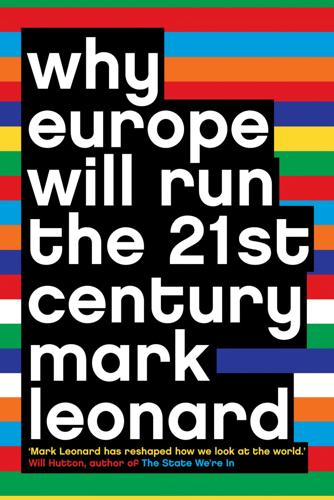
Why Europe Will Run the 21st Century
by
Mark Leonard
Published 4 Sep 2000
Many people had argued that Europe should develop a presidential or parliamentary system modelled on the nation-state. But these critics were missing the point of the European Union. The reason that people do not turn out in their droves to vote for the European Parliament is not because it has no power. It is because none of the issues in which the EU specializes – trade liberalization, monetary policy, the removal of non-tariff barriers, technical regulation in the environmental and other areas, foreign aid, and general foreign policy co-ordination – appears anywhere on the list of issues that voters care about.15 In fact, none of the policies in the five most important issues for voters in Europe – health care provision, education, law and order, pension and social security policy, and taxation – are set by the European Union.
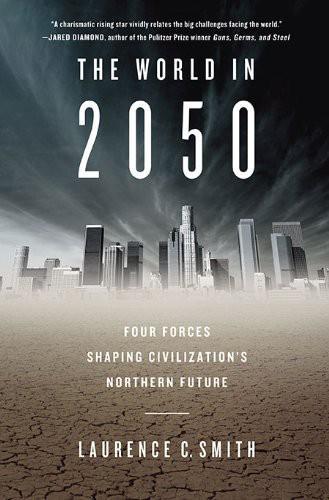
The World in 2050: Four Forces Shaping Civilization's Northern Future
by
Laurence C. Smith
Published 22 Sep 2010
A score of 86, for example, means a country ranked higher than 86% of all of the countries in the world that are measured by that particular index. Also shown is a single composite score for each country, averaged across the five numeric indices. A remarkable story leaps from these numbers. With the exception of Russia, the NORC countries are the most stable, trade-liberal, rapidly globalizing players on the planet. Who knew that Denmark and Canada are even more open to free trade than Japan, Germany, or the United States? Of particular relevance to energy production is that this openness also pervades the oil and gas industry, in contrast to the worldwide trend toward nationalization described in Chapter 3.433 Civil and political freedoms run remarkably high except in Russia.
…
To allow comparison between these indices, numeric index data were converted to percentile country rank. Taking an average of these percentile rankings provides the composite score in the right-most column of the table. 432 Each index has its own agenda, which is why I prefer to look at all of them. Jeffrey Sachs, for example, questions the contention in Index of Economic Freedom that trade liberalization necessarily leads to GDP growth, citing examples, like China, which have very strong economic growth despite low scores on the index. J. Sachs, The End of Poverty: Economic Possibilities for Our Time (New York: Penguin Group, 2005), 416 pp. 433 Most oil and gas outfits operating in the northern high latitudes are private multinational companies, except in the Russian Federation, where the industry is increasingly returning to state control. 434 The 2010 Economist Intelligence Unit assessed 140 countries in their global livability index.

The Marshall Plan: Dawn of the Cold War
by
Benn Steil
Published 13 Feb 2018
Members would agree to cut quantitative import restrictions in half by year’s end, and to collaborate on the creation of a payments union, underwritten with Marshall funds, to eliminate currency barriers to trade. In January 1950, Hoffman would press further, making up to a quarter of ECA aid dependent on progress in trade liberalization and integration. Cripps decried it as “dollar dictatorship.” Even Acheson, ever pragmatic and anxious to sustain solidarity in the face of Soviet threats, opposed such conditionality. But van der Beugel defended Hoffman, noting that “it was again American and not European initiative which pushed Western Europe further on the road to greater cooperation and integration.”15 Seeing the need for a “Marshall Plan” of his own to showcase Soviet economic leadership in eastern Europe, Stalin decreed one.
…
In Britain, the Attlee Labour government directed 97 percent of counterpart funds to retiring government debt, thereby depriving the ECA of levers it might, even in principle, have applied to change economic priorities in London. The only areas in which British policy was clearly steered from Washington were trade liberalization (which had been a condition going back to wartime Lend-Lease aid) and European Payments Union membership, both of which London initially resisted.35 The aid itself, however, amounting to 1.9 percent of GDP from 1948 to 1951, served to prop up a socialist program of nationalization and industrial control with which the Truman administration, not to mention Republican legislators, strongly disagreed.
…
Indeed, in August 1949 Britain—virtually dollarless and at odds with Washington over plans for protectionist retreat into the sterling area—reluctantly devalued sterling by 30 percent after its Treasury warned of “another instalment of dollar crisis (even with ERP).”102 Germany and other nations quickly followed (twenty-three within a week), with the intended effect. Dollar deficits dissipated, and recovery picked up steam. British reserves tripled within two years.103 In the context of the early postwar period, however, a time in which most currencies were inconvertible and trade barriers high, global multilateral monetary and trade liberalization, of the sort envisioned at Bretton Woods, was utopian. Within Marshall aid countries, establishing a stable environment in which trust and cooperation could take hold among government, business, and workers was vital to the re-creation of a market economy. Across Marshall countries, U.S. security guarantees and financial support were indispensable to allowing those economies to integrate without engendering unmanageable domestic and foreign conflict.
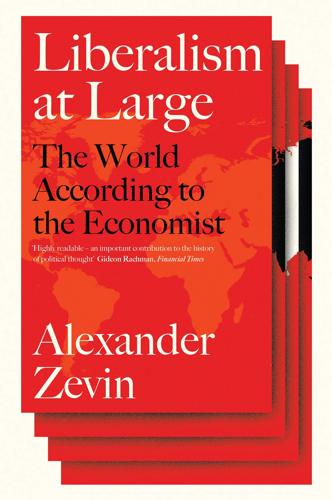
Liberalism at Large: The World According to the Economist
by
Alex Zevin
Published 12 Nov 2019
The remarkable fact, however, is that on the eve of the greatest electoral triumph for Liberalism, when it won 400 out of 670 Commons seats, the Economist failed to endorse it. Conservatives, under a Chamberlainite ‘delusion’ the Empire could be bound with reciprocal tariffs, were no longer trustworthy on free trade; sound on trade, Liberals seemed to lack the nerve to defend the Empire, most damningly in Ireland.85 So far as the paper was concerned, the election of 1906 was a choice between the devil and the deep blue sea. Asquith, Ireland and the New Radicalism One of the editors responsible for leading the Economist to this impasse had, paradoxically, just assumed high office in the new Liberal government.
…
Liberals made gains almost everywhere – even in formerly hostile parts of Lancashire and London – adding 224 more seats since the khaki election of 1900. They now enjoyed an outright majority of 130, and with their Irish Nationalist and Labour allies, this rose to 356 – the widest margin since 1832.5 Yet the 1906 landslide had its origins in more than a negative defence of free trade. Liberals took active steps to win their historic victory, as evidenced by the widespread expectation that it was about to usher in a new era of social reform. Even as the franchise in Britain remained deeply undemocratic up to 1918 – with four and a half million lower class men unable to vote, 500,000 or so plural votes to property owners in the boroughs and counties, and women excluded – after 1885–86, about half the electorate was working-class.6 By the turn of the century, the growing trade union movement was attempting to organize the working class as an independent political force – a development Liberals vigilantly watched and tried to head off.
…
When Moscow defaulted in 1998, triggering the collapse of Long Term Capital Management – the heavily exposed hedge fund that lost $4.6 billion in four months – the paper defended the computer wizards whose models had failed to foresee this: ‘it is pleasant to mock the Nobel Laureates who helped found LTCM, but much of this mockery clouds the truth’, for ‘the question arises whether recent events are ever likely to be repeated.’44 But it also went on the attack against any who used such examples of ‘market failure’ to criticize, question or hold up globalization, with deputy editor Clive Crook leading the charge.45 Crook was thirty-eight in 1993, but looked ‘more like a teenager in the grey flannel slacks, white oxford-cloth shirt, and blue pullover sweater that are his only known costume’.46 ‘Fearsomely brilliant’, ‘arguing for Free Trade in this gruff Lancashire accent’, he was ‘the Manchester School come to life’; others called him the ‘intellectual Godfather’, with Emmott by turns ‘enthralled’ and ‘intimidated’, as editors asked (on points of doctrine), ‘Is Clive ok with this?’ Penning the feistiest articles in favour of trade liberalization, Crook sensed that 1999 was the moment to ‘come out fighting’ at the World Trade Organization summit in Seattle. Holding high the banner of the WTO, the Economist exhorted the national governments gathered there to make a better sales pitch to citizens whose ‘support for free trade is weak at best’.
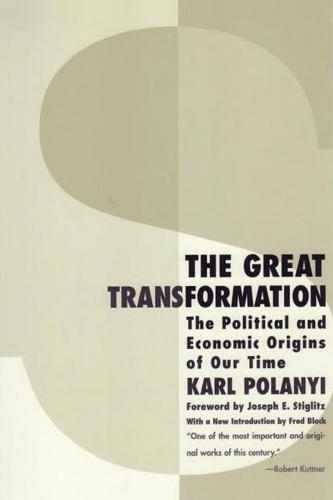
The Great Transformation: The Political and Economic Origins of Our Time
by
Karl Polanyi
Published 27 Mar 2001
Free international trade allows a country to take advantage of its comparative advantage, increasing incomes on average, though it may cost some individuals their jobs. But in developing countries with high levels of unemployment, the job destruction that results from trade liberalization may be more evident than the job creation, and this is especially the case in IMF “reform” packages that combine trade liberalization with high interest rates, making job and enterprise creation virtually impossible. No one should have claimed that moving workers from low-productivity jobs to unemployment would either reduce poverty or increase national incomes.

Open: The Story of Human Progress
by
Johan Norberg
Published 14 Sep 2020
Countries like the US – with low savings, large budget deficits and much foreign investment – tend to have trade deficits, no matter which trade policies others adhere to. The economic gains from free trade are mind-blowingly large. A study from the Peterson Institute for International Economics suggests that the US economy is annually around $1000 billion bigger than it would have been without post-war trade liberalization – that is $10,000 per US household. The study assumes that the cost to displaced workers from lost wages and lower wages once re-employed is $50 billion annually. This means that the benefit– cost ratio is 20:1 – that is, the gains from free trade are twenty times greater than losses.63 We constantly talk about the death of the American middle class, and blame it on trade, but the real story is brighter.
…
The only potential exception is that educational attainment predicts pro-trade views, which has often been interpreted as an expression of economic self-interest.22 They did find something else, though, when they asked how positively whites, blacks and Hispanics feel about their own group relative to the other two, and then asked them about trade. The stronger ethnocentrism they expressed, the less they liked free trade. On the surface this does not make any sense. ‘Why should how blacks feel about whites and Hispanics (or vice versa) have anything to do with trade liberalization?’ Yet in another way, it makes perfect sense. The more you think in terms of us vs them, the less likely you are to think groups can engage in mutually beneficial behaviour. Mansfield and Mutz believe this finding puts the result of education in a new light because, after accounting for the effects of one’s worldview, education does not have a direct effect on trade views.
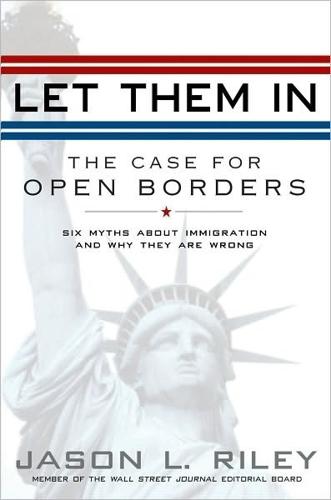
Let Them In: The Case for Open Borders
by
Jason L. Riley
Published 14 May 2008
Ultimately, the think tank was hoisted by its own analytic petard. But first, some background. Along with other conservative outfits like the National Center for Policy Analysis and the Institute for Policy Innovation, Heritage helped pioneer the use of dynamic analysis. Whether the issue was trade liberalization or tax policy, free-market conservatives regularly mocked economic studies that took into account only static impacts. “[No] matter how many times a ‘static’ analysis is disproved,” Heritage Foundation president Ed Feulner once wrote, “Congress keeps doing business in the same wrongheaded way.”
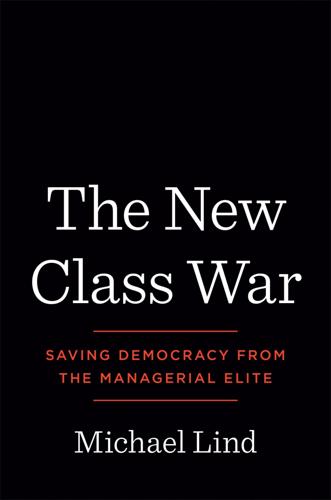
The New Class War: Saving Democracy From the Metropolitan Elite
by
Michael Lind
Published 20 Feb 2020
Their spontaneous protests escalated into months of violence in Paris and other French cities, forcing Macron’s government to abandon the policy.9 Subsequently in 2019 the conservative party in Australia, based in low-density working-class areas, came from behind and defeated a progressive party that pushed environmental regulations that threatened jobs and low living costs in the periphery.10 * * * — LIKE DEBATES ABOUT the environment, debates about trade are battlefields in the class war. The overclass population living in hubs continues to tout the benefits of trade liberalization among high-wage and low-wage countries, including slightly lower prices for consumers for imports from low-wage nations, but much of the Western working class is no longer listening. As manufacturing jobs disappear overseas, disproportionately affecting the livelihoods of the working class in the heartland, more and more disaffected Americans look to leaders who promise to change the trade balance, economic orthodoxy be damned.

Empire of Things: How We Became a World of Consumers, From the Fifteenth Century to the Twenty-First
by
Frank Trentmann
Published 1 Dec 2015
For his official photograph, Mr de Croos appeared in morning suit, complete with top hat.71 THE DISCOVERY OF THE CONSUMER In Europe, the era of high imperialism (1870s–’90s) took consumption to new heights. In part, this was the result of the fast-advancing global integration of markets, made possible by steamships, imperial expansion and trade liberalization. The price of wheat, sugar, beef, cooking oil and much else plummeted. Cooling technology and canning brought Argentinian steak and Canadian salmon to dining tables in Bordeaux and Bristol. The cost of clothing fell, too. At the same time, European and American labour became more productive, thanks to factory production and new technologies, boosting exports and raising wages.
…
Just as there are terms of trade, we thus need to think about the terms of consumption, terms that change between groups, products and regions. We have already observed how empire altered status. It also redefined the value of place. Ironically, Hobson launched his attack on empire during the heyday of free trade, when the empire had come to matter less to Britons’ welfare than ever before. Trade liberalization – sometimes free, sometimes forced – and steamboats opened up the world for late-Victorian consumers. Victorians enjoyed beef from Argentina, sherry from Portugal and sugar from Brazil. The round of second industrial revolutions in France, Germany and the United States created new markets for finished goods which, again, lay outside the empire.
…
In the longer perspective, however, the break-up of the Spanish empire after the Napoleonic wars turned out to be a step backwards, as Venezuela and other newly independent states raised their own barriers and export taxes to finance themselves. The conclusion is clear: in the long run, mercantilism was not fit for mass consumption. That was the historic achievement of free trade from the 1840s. The phenomenal spread of tropical goods in the second half of the nineteenth century was driven by two forces: trade liberalization and a massive increase in cash-crop production. Unlike sugar, cocoa resisted industrial-style cultivation. It thrived in shade and needed surrounding plants to protect it from wind and disease. Economies of scale were few. Slavery was not absent – the Portuguese used it on São Tomé and Príncipe, their cocoa islands off West Africa, while the Germans tried ‘scientific’ planting and coerced labour in Cameroon, without much success.
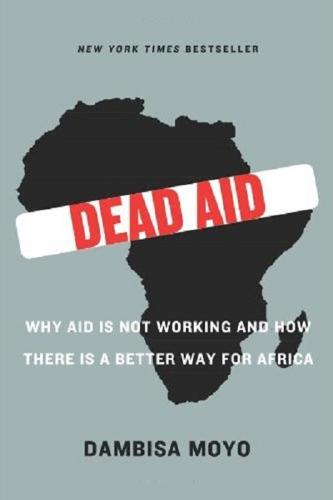
Dead Aid: Why Aid Is Not Working and How There Is a Better Way for Africa
by
Dambisa Moyo
Published 17 Mar 2009
In Africa, as with other parts of the developing world, this economic overhaul necessitated two new aid-based programmes: first, stabilization, and then structural adjustment. Stabilization meant reducing a country’s imbalances to reasonable levels – for example, the government’s fiscal position and the country’s import–export ratio. Meanwhile structural adjustment was aimed at encouraging greater trade liberalization and reducing price and structural rigidities by such means as removing subsidies. Both the World Bank and the IMF launched aggressive aid programmes to institute these two initiatives; the IMF’s Structural Adjustment and Enhanced Structural Adjustment Facilities are examples of these. Poor governments received cash in the form of budgetary support, and in return agreed to embrace the free-market solutions to development.
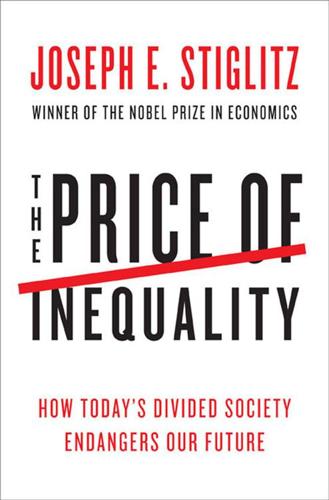
The Price of Inequality: How Today's Divided Society Endangers Our Future
by
Joseph E. Stiglitz
Published 10 Jun 2012
There is another reason why globalization may lower overall output; it typically increases the risks that countries face.27 Opening up a country can expose it to all kinds of risks, from the volatility of capital markets to that of commodity markets. Greater volatility will induce firms to move to less risky activities, and these safer activities often have a lower return. In some cases, the risk-avoidance effect can be so large that everyone is made worse-off.28 But even if trade liberalization leads to a higher overall output for a given economy, large groups in the population can still be worse off. Consider for a moment what a fully integrated global economy (with both knowledge and capital moving freely around the world) would entail: all workers (of a given skill) would get the same wage everywhere in the world.
…
But the agreements go to hundreds of pages, because they are in fact managed-trade agreements, and managed for the benefit of special interests. They are agreements in which hosts of industries insist on one form of favorable treatment or another. Companies’ focus is naturally on rules that increase their profits. When trade liberalization helps their profits, then they’re in favor of it; but when it works the other way, they oppose it. And for the most part, the U.S. trade representative and trade ministers from other advanced industrial countries represent the interests of the country’s companies. Opening up trade is, however, only one part of the focus of trade negotiations.
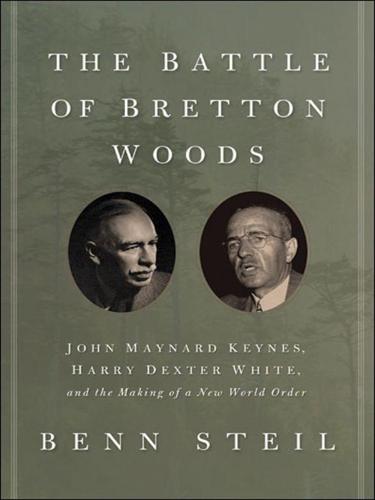
The Battle of Bretton Woods: John Maynard Keynes, Harry Dexter White, and the Making of a New World Order
by
Benn Steil
Published 14 May 2013
Yet in 1947 reform of the imperial mind-set lagged well behind the frantic pace of global reordering. Over the next three months, Clayton worked doggedly on three fronts of what he saw as the same battle: extracting a compelling Marshall Plan assistance request from the Paris delegates, achieving a breakthrough on global trade liberalization, and encouraging the formation of a “European federation” to coordinate Europe’s economic efforts and implement a customs union. On the Marshall Plan front, the eponymous author had rebuffed Clayton’s repeated pleadings throughout the summer for interim assistance to the increasingly desperate and frustrated Europeans.
…
In September Marshall relented; on the tenth he publicly pressed Congress for quick appropriations to mitigate “hunger and cold this winter.” This had a profound effect on the Paris discussions, and on the twenty-second the Europeans finally submitted an “initial” report and assistance request that satisfied American expectations. Clayton immediately left Paris for London to press his case on trade liberalization, which he saw as an essential complement to American aid. This proved a tougher nut to crack. Throughout the summer, Clayton had struggled simultaneously with London over the dismantling of imperial preference and with protectionists in his own capital determined to erect new wool import tariffs.

Hit Refresh: The Quest to Rediscover Microsoft's Soul and Imagine a Better Future for Everyone
by
Satya Nadella
,
Greg Shaw
and
Jill Tracie Nichols
Published 25 Sep 2017
He pointed out that the Trans-Pacific Partnership (TPP), a major trade agreement that was pending approval in Washington at the time, is about helping large and small companies find growth in Japan, Australia, Canada, Chile, and other Pacific Rim nations that want to increase trade with America. The world needs continued progress on trade liberalization. Kasich pointed out that 40 million U.S. jobs depend on trade. But our trade laws also need to be modernized. In this digital economy, the bits and bytes imported and exported are as critical to trade as the automobiles, agricultural products, and other goods we trade. We need to be able to transfer data across borders in the course of business and to do so without having to locate computing facilities in every territory, while protecting privacy, source code, and other forms of intellectual property.
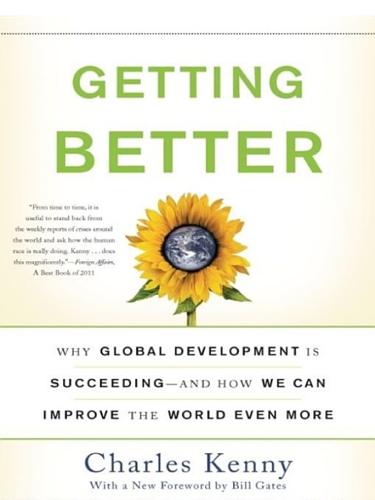
Getting Better: Why Global Development Is Succeeding--And How We Can Improve the World Even More
by
Charles Kenny
Published 31 Jan 2011
Even if the link between levels of trade and rapid economic growth appears fragile, trade in goods has been a central factor in reducing the cost of quality of life around the world. It has also freed countries from the Malthusian trap through food imports. This makes the failure of the recent round of World Trade Organization talks on further trade liberalization an undoubted loss. International trade negotiations have had some significant negative implications for the quality of life of the world’s poorest, nonetheless. They have begun to impinge dramatically on the free flow of knowledge and ideas around the world, by strengthening the intellectual property laws that restrict such flows.
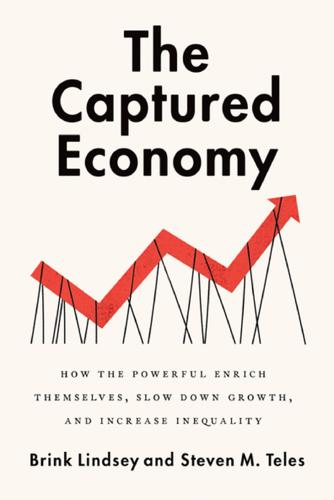
The Captured Economy: How the Powerful Enrich Themselves, Slow Down Growth, and Increase Inequality
by
Brink Lindsey
Published 12 Oct 2017
The minimum wage declined steadily, both in real terms and in comparison to the median wage, although there is now a flurry of initiatives to hike it dramatically. At the same time, the old anticompetitive policies that sustained unionism even as they subsidized industry have likewise receded. Price and entry controls were eliminated in the late 1970s and early ’80s while ongoing trade liberalization has steadily whittled away tariffs to almost nothing. The main rent-creating policies that have emerged and grown in recent decades have a much tighter focus on helping out those at the top. As we will describe in the case studies that follow, sometimes these policies directly benefit higher-income individuals at the expense of everyone else.

The WikiLeaks Files: The World According to US Empire
by
Wikileaks
Published 24 Aug 2015
Already in 2005, when Correa was minister for the economy in a populist administration, the US embassy in Quito had noted that he was “a strong critic of the FTA negotiations.” Correa favored abandoning the tight fiscal policy of the former administration that had aligned closely with the US and using oil revenues to invest in public-sector wages and development. He was critical of “trade liberalization in general … of the IMF, and of any orthodox economic reform.”23 A further cable noted that “Correa made public statements on April 21 that foreign debt needed to be renegotiated, that Ecuador’s oil revenue needed to be spent on social programs, that Ecuador would be completely sovereign in its relations with the IMF, and that any free trade agreement would be submitted to a referendum (where it would most likely be voted down).”
…
W. 479–80 Delare, Thomas 189–90 democracy promotion 28–9, 39–40, 46–7, 60, 162, 176, 312, 374, 493–4, 496, 518–22 Deng Xiaoping 444, 451 Deniau, Jean-François 341 Denmark 245 Derham, James 535–7, 542–3 Dermer, Ron 271, 274, 283 Der Spiegel (newspaper) 197 De Sutter, Paula 222–3 Detainee Treatment Act (DTA) 386 Diaz, Dave 86 Dictatorships, American relationship to 23–31 Digital Millennium Copyright Act 135 Digital Rights Management technology (DRM) 133–4, 135 Diskin, Yuval 273, 276–7, 285 documents: classification level 6–8, 149, 150–1; numbers published 1–2 dollar diplomacy 44, 126 dollar, the, importance of 121 Dominican Republic 56 Dostum, Ahmad Rashid 393–4 drone strikes 88–89 Duddy, Patrick 531 Duvalier, François “Papa Doc” 53, 62 Duvalier, Jean-Claude “Baby Doc” 53, 58, 62–3, 63, 64 economic liberalization 47–9, 122, 137–40 economic power 112, 112–41, 352–3; capital flight 131, 138; dominance of Wall Street 139–41; exchange rates 120; exercise of 123–32; exposing 113–17; free trade imperialism 117–23, 132–6; importance of the dollar 121; and market-dependency 125–32; money flows 120, 137–8 Economic Support Funds (ESF) 162 Economist 83, 113 Ecuador 18, 497–503, 516; Article 98 agreements 173–6; CIA involvement 501–2; Constituent Assembly 500–1; Correa presidency 498–503; corruption 174–5; democracy promotion 176; ICC-related sanctions 173–7; International Visitor program 174; market-dependency 125–32; oil revenue 127, 128; pharmaceutical licenses 502–3; public spending 130; trade liberalization 127; US ambassador expelled, 2011 503 Edelman, Eric 253–4, 258–9, 261 Egypt 27, 45, 46, 299; coup, 1952 42, 44; coup against the Muslim Brotherhood 41, 48; democracy assistance 30; economic crisis 45; economic reform 47–9; fall of Mubarak 32, 36–40; nationalization of Suez Canal 43; patronage 38; poverty 37; strategic importance 237–8; US aid 30 Eisenhower Doctrine, 44 ElBaradei, Mohamed 248, 339–48, 459–60 Ellsberg, Daniel 18–19 el-Masri, Khaled 201–6 El Salvador 18, 29, 30, 57, 58, 485, 486–92, 537, 538 el-Sisi, Abdel Fattah 48 embassies 3–4 empires 2–3 Erdoğan, Recep Tayyip 17, 31, 244–5, 250, 253–4, 258–9, 260–1, 262 Espionage Act, 1917 7 EU Council, and Article 98 agreements 163 European cables 181–211; and GMOs 187–95; Plan 2015 185–7; and trade relations 184–5, 187–95 European Commission 194 European Court of Justice 206 European Food Safety Authority 195 European Phased Adaptive Approach 331 European Union: collusion with CIA 14; court dealings 200–210; and GMOs 188, 189–90, 194, 194–5; Independent International Fact-Finding Mission on the Conflict in Georgia 220; resistance to American power 210; and the Ukraine crisis 210; and the war on terror 195–200 Europe, US missile defense 219, 223–30, 330–4 Eurozone, sovereign debt crisis 141 extraordinary rendition 75, 239–40, 261 Fackler, Martin 424–5 Facussé Barjum, Miguel 70, 71 Fallows, James 439 Farabundo Martí National Liberation Front (FMLN) 486–7, 490–2 FARC 125 Fatah 276–7, 278, 280–1, 293 Fayyad, Salam 271, 272 FBI 4 Federal Reserve 120, 127, 139 Fein, Ashden 9 Feith, Douglas 207–10 Fernández, Leopoldo 508–9 Fidan, Hakan 259 Financial Crisis Inquiry Commission 139 financial regulation 136–41 Financial Services Agreement 137 Financial Times 218 Flores, Javier 508 Flourney, Michelle 409–11, 412 Foltz, William J. 27 Forbes magazine 114, 187 Ford, Charles 536, 537 Ford, Robert Stephen 166 Foreign Affairs 217–18 Foreign Military Financing assistance program 166 Foreign Policy 226 Foreign Terrorist Organization list 464 Forgeard, Noel 185 FRAGO 242 protocol 76, 104–5 Fraker, Ford 301–2 France 27, 42, 194–6, 251–2 Frattini, Franco 329 Freedom Agenda 39–40 free market, the 83, 116–17 free trade 12, 40, 73; imperialism 11–12, 117–23, 132–6 Free Trade Area of the Americas (FTAA) 73, 125, 127, 175 French, Philip 521 Friedman, Milton 69, 122 Friedman, Thomas 112 Fukushima nuclear crisis 425, 427 Fukuyama, Francis 444 Funes, Mauricio 490–2 G8, summit, 2011 47 Gaddafi, Muammar 31, 44, 178 Gaidar, Yegor 218 Galant, Yoav 285 Gangotena, Raul 173 Gantz, Benny 272–3, 295–6 Garlasco, Marc 86 Garzón, Baltazar 209–10 Gates, Robert 41, 206–7, 213, 328–9, 331 GATT negotiations, the Uruguay Round 121 Gaza Strip 39, 180, 266, 276–85, 293 General Agreement on Tariffs and Services 137, 140 genetically modified agricultural products (GMOs) 187–95, 210 Geneva conventions 108–9, 270, 385, 393 Georgia: Rose Revolution 212, 220; and South Ossetia 219–22 Germany: ANA Trust Fund contributions 196–7; and the el-Masri case 202–3, 204–6; and the invasion of Iraq 195–6; reunification 212 Ghani, Ashraf 394 Gilad, Amos 274–5, 276, 279, 295–6 Gitmo Files, the 75, 80, 94, 97–101 Giuliani, Rudy 311 Glazer, Charles 489–90 global financial crisis, 2008 113, 136–41, 447, 452, 453 globalization 46, 83, 118, 123, 133 Global Policy Forum 92 Godec, Robert 33–4, 35 Goldberg, Philip 509 Goldstone Report 179, 274–5, 281–3, 285 Goldstone, Richard 281–2 Gonzales, Alberto R. 108, 207–10 Good Neighbor doctrine 50, 53, 54–8 Google Maps 222–3 Gorbachev, Mikhail 212, 223–4, 231 Gordon, Philip 248–51 Gottemoeller, Rose E. 232, 233 Gramsci, Antonio 440 Grandin, Greg 96, 484 Great Britain 182–3, 188; loss of empire 27, 28, 42, 44, 433 Greenlee, David 505–6, 541 Greenwald, Glenn 159–60, 178 Grenada 57, 123 Guam 417 Guam International Agreement 409–10 Guantánamo Bay 75, 75–6, 97–101; military prison opened 99; prisoner numbers 99; prisoner releases 100; use of torture 96, 99; validation 101 Guardian (newspaper) 105, 115, 179, 250 Guatemala 55, 164, 484, 535–6, 542–3 Gülen, Fethullah 17, 254–5, 259–60 Gülen schools 254–8 Gulf War, 1991 45, 46 Guriev, Sergey 214 Gutiérrez, Lucio 174, 175, 497, 498 Hague, William 183 Haiti 18, 26, 30, 49, 50, 58, 486; American involvement 60–5, 510–14; CIA involvement 64; coup, 2004 512; Group of 184 64–5; human rights 64; Lavalas movement 63–4; military intervention 62–3; neoliberal reform 59, 64; occupation, 1915 52–3; Petrocaribe program in 533–4; repression 61–2; UN occupation 65; wages 61, 64 al-Hajj, Sami 75–6, 79 al-Hakim, Muhammad Baqir 84 Hamada, Yasukazu 407 Hamas 265, 266, 276–8, 279–80, 281, 282–3, 284–5, 293 al-Hasani, Muhanad 318 Hatoyama, Yukio 398, 425–6 Hebb, Donald 101 Heinonen, Olli 346–7 Heleno, Augusto 514 Helms, Richard 66 Hersh, Seymour 76 Hezbollah 284 Hill, James 541 Hinchey Report 66 Ho Chi Minh 27 Hodges, Heather 501, 502, 503 Holbrooke, Richard 337–8 Honduras 49, 52, 57, 536–7, 543–4; Article 98 agreements 162; constitution 72; coup, 2009 70–3, 537, 544; US aid 71, 72 Hudson, William 34, 35 Hu Jintao 453–4 human rights 29, 30, 58, 74–111, 475; Afghanistan 78; brutality 76–7; Chile 68–9; Haiti 64; and labeling 78–81; Syria 297–8, 314; and torture 94–111; Tunisia 33–4; US abuses 74–8 Human Rights Watch 282, 357, 364, 366–7 Hurlburt, Heather 216–17 Hussein, Abbas Ali 358 Inamine, Susumu 428–30 India 27 Indochina 27 Indonesia 27, 28, 446, 450, 451–2, 453, 458–9, 463 Institute of International Finance 47 intellectual property 133–4, 135, 467–8 Intermediate-Range Nuclear Forces Treaty 224 International Atomic Energy Agency (IAEA) 291–2, 323, 339–48, 459–60 International Centre for Settlement of Investment Disputes 130 International Court of Justice 263, 270 International Criminal Court (ICC) 13, 281; engagement with 177–80; establishment 160; jurisdiction 160–1; related sanctions 169–77; US avoidance of sanctions 162–9; US opposition to 161–2 International Development Bank (IDB) 504, 505–6 International Military Education Training (IMET) program 166 International Monetary Fund 45, 48, 50, 51, 59, 118, 121, 123, 129, 130, 504 International Republican Institute (IRI) 29, 40, 519–20 International Security Assistance Force for Afghanistan” (ISAF) 385 International Studies Association (ISA), 10–11 10 International Studies Quarterly (ISQ) 10 International Trade Union Confederation 136 Iran 23, 28, 238, 321, 322–49, 458; armed confrontation threat 337–9; demonization of 248–51; and France 251–2; ICBM development 225, 226, 229, 230, 330–4; and Israel 251, 286–93, 323–9, 337–9, 348; nuclear program 15, 248–9, 281, 286–93, 294–5, 323, 335–6, 339–48, 348–9, 458–60; and Saudi Arabia 301–2; and Syria 299, 301–2; and Turkey 245–6, 246–53, 329–30; Venezuela’s relationship with 522 Iran-Contra scandal 492 Iraq 28, 42, 44, 350–67; economic warfare 352–3; embargo of 242; invasion of Kuwait 45; sectarianism 84, 85–6, 353–60, 361–3 Iraq Body Count 159 Iraqi Army (IA) 358–9 Iraq, invasion and occupation of 12, 23, 46, 83–6, 239, 288, 300, 369; Baghdad massacre 86–7; civilian casualties 88; collateral murder 350–2; counterinsurgency 84–6, 355; death squads 354–5; drone strikes 88–9; Europe and 195–6; Fallujah siege 88, 90–3, 254, 354, 357–60; human rights abuses 76; Iraqi insurgency 76–8, 362; Operation Phantom Fury 91–2; paramilitary strategy 84–5; reconnaissance by fire policy 353; resistance to 354–5; Sahwa movement 15, 360–3; sectarian divisions 15; Special Police Commandos (SPC) 84–5, 105, 110; use of torture 85, 103–5, 352, 363–7; US surge 360; US terrorism 82; war crimes prosecutions 159–60; war logs 15, 82, 103–4, 363–4 Ireland, Republic of 197–200 Ishak, Bassam 313 ISIS.
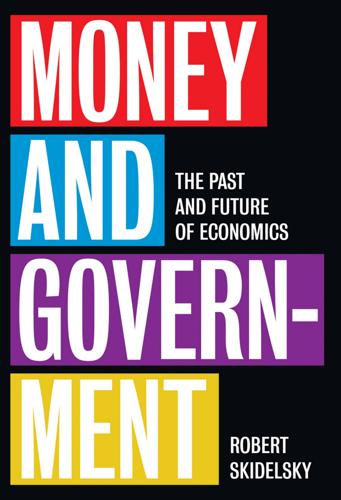
Money and Government: The Past and Future of Economics
by
Robert Skidelsky
Published 13 Nov 2018
It is still unclear how much is to be attributed to the one and how much to the other. 39 The post-war trading and monetary regimes undoubtedly facilitated the diffusion of best-practice technology. Keynes’s handiwork can be found in the setting up of both, but the ideas that inspired them – trade liberalization, currency convertibility at fixed exchange rates – were of ancient provenance. What was intended to be restored was the nineteenth-century free trade/gold standard system, improved by experience of the interwar years. This reflected the American conviction that the troubles of that period had been brought about by trade and currency wars.
…
This led the USA to acquiesce in the large sterling, franc and deutschmark devaluations against the dollar in 1949; it led to the huge outflow of American dollars on government account (Marshall Aid, military spending in Europe), later supplemented by large private outflows; and it led the United States to promote a European Payments Union, and allow the Union to discriminate against American goods, while also giving Japan privileged entry to the US market. The trend in the balance of payments in turn enabled exchange rates to be gradually stabilized and currencies to become convertible. This promoted trade liberalization, which 159 T h e R i s e , T r i u m p h a n d Fa l l of K e y n e s in turn fuelled economic growth. By the end of the 1960s America’s current account surplus had turned into a deficit. America’s role in the first phase of the golden age was not unfairly summed up by the banker Russell Leffingwell in 1960: Wisely we undertook to set the world to rights.
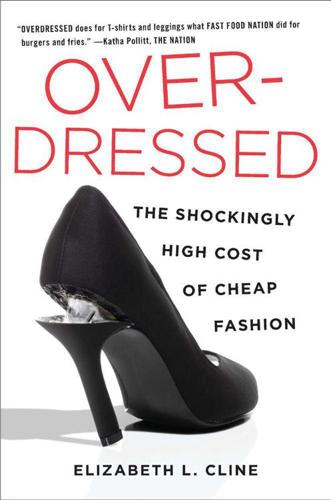
Overdressed: The Shockingly High Cost of Cheap Fashion
by
Elizabeth L. Cline
Published 13 Jun 2012
Inc., a California brand that once sourced all of its clothes in Los Angeles–based factories, dropped 40 percent of their domestic production in one six-month period in the late 1990s.19 Levi’s was one of the last major garment manufacturers to give in and source from overseas, closing their last factory in San Antonio, Texas, in 2004. Like a massive engine grinding to a halt and then slowly turning in the opposite direction, import barriers on clothing to the United States began to be deftly wiped out in the midnineties. Job loss in the clothing production trades was heaviest during these years of aggressive trade liberalization and quota removal.20 The first big hit to the L.A. garment industry came in the form of the North American Free Trade Agreement, ratified in 1994, which removed duties on exports to Mexico. The effect of NAFTA was many American companies moving cut-and-sew operations just over the Mexican border to maquiladoras, where garments could be slapped together under much lower minimum wages.
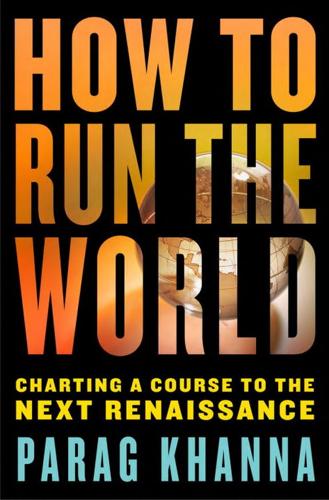
How to Run the World: Charting a Course to the Next Renaissance
by
Parag Khanna
Published 11 Jan 2011
All top figures in their fields, they were convened by the World Economic Forum (WEF) for a “Summit on the Global Agenda,” lending their minds to what the BBC’s Nik Gowing dubbed a “fundamental reboot” of global problem solving. But rather than formulating extravagant proposals, they huddled in “Global Agenda Councils” to perform mental brain dumps, sharing the latest thinking on alternative energy, food security, Mideast peace, financial risk, social entrepreneurship, biodiversity, trade liberalization, and dozens of other issues. No oversized groupthink here: Each expert group appointed ambassadors to fan out like intellectual hunter-gatherers, identifying linkage points: How can more efficient construction and transportation cut emissions while also creating jobs? How can skill-building centers be used to mitigate interfaith tensions?
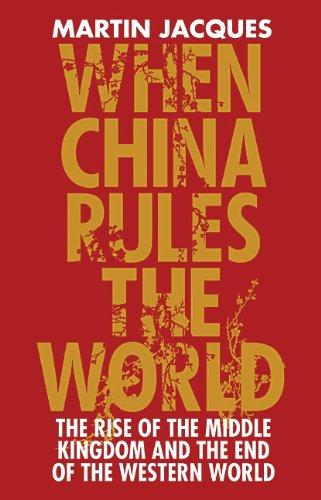
When China Rules the World: The End of the Western World and the Rise of the Middle Kingdom
by
Martin Jacques
Published 12 Nov 2009
As China’s financial power expands, its ability to make loans and give aid will increase dramatically, as we have seen in the case of Africa, where Chinese loans already exceed those made by the World Bank; in time, Chinese aid and loans could dwarf those made by the World Bank on a global basis as well.176 Meanwhile the WTO , with the demise of the Doha round - effectively torpedoed by China and India177 - together with the growing popularity of bilateral trade agreements, presently looks rather less important than it did a decade ago when trade liberalization was in full swing. The process of trade liberalization in East Asia since 2000, indeed, has largely bypassed the WTO, with China playing a key role through bilateral trade agreements. Another institution of the present international economic system, the G8, acts as a kind of metaphor for the way in which the international system might come to look increasingly less relevant.
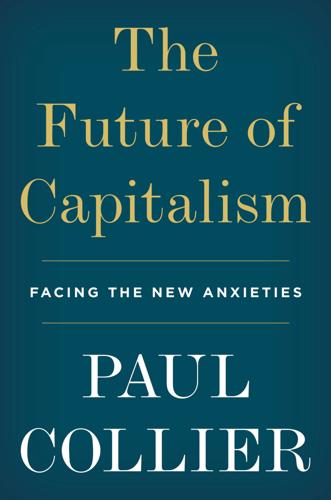
The Future of Capitalism: Facing the New Anxieties
by
Paul Collier
Published 4 Dec 2018
As with NATO, the central principle of the club was acceptance of reciprocal obligations. To unwind the beggar-thy-neighbour protectionism of the 1930s, another new club was formed: the General Agreement on Tariffs and Trade (GATT). Between 1947 and 1964 it concluded six rounds of reciprocal trade liberalization. Again, the key driver was enlightened self-interest; everyone recognized where protectionism had led. In response to the Great Depression of the 1930s, a further new club of nations was established. The International Monetary Fund (IMF) was a public bank into which a defined membership paid, undertook to abide by a set of rules and supervision, and in return were entitled to loans in the event of crisis.

The Globotics Upheaval: Globalisation, Robotics and the Future of Work
by
Richard Baldwin
Published 10 Jan 2019
Once this change made long-distance trade feasible, the huge price differences across the world made it profitable. Trade in goods boomed from the early 1800s as the steam impulse was augmented by later developments like steel hulls, diesel engines, containerized cargo ships, air cargo, and worldwide trade liberalization. These advances lowered the cost of moving ideas and people as well, but not in a revolutionary way. Strangely enough, as production dispersed across nations in this first phase of globalization, it clustered within nations into factories and industrial districts. This microclustering wasn’t done to save trade costs; it was done to save on communication costs—namely, the cost of moving ideas.
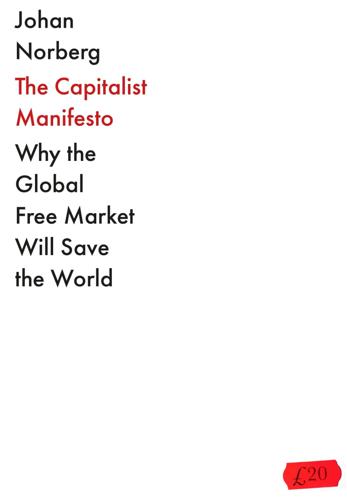
The Capitalist Manifesto
by
Johan Norberg
Published 14 Jun 2023
However, if you include all the taxes that mostly reduce incomes at the top and the transfers that add more at the bottom, the difference is reduced from 16.7 to just four times as much.20 Globally, of course, inequality is more conspicuous, but thanks to the fact that low- and middle-income countries have grown faster than rich countries during the era of trade liberalization and international supply chains, global income inequality has decreased for the first time since the Industrial Revolution. This is a monumental change, and it has been dizzyingly quick. Betwee n 2000 and 2018 the global Gini coefficient (a measure of income inequality, rated from 1 to 100) decreased from seventy to sixty points, thus erasing a hundred-year build-up of global inequality in less than two decades.21 Nor have we seen a rapid increase in global inequality in assets.
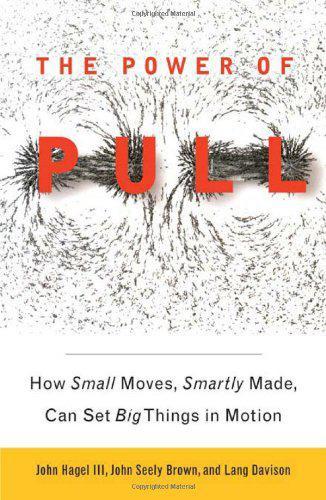
The Power of Pull: How Small Moves, Smartly Made, Can Set Big Things in Motion
by
John Hagel Iii
and
John Seely Brown
Published 12 Apr 2010
First, during the Depression in the 1930s, business leaders in major developed economies around the world were motivated to exploit the capabilities of new communication and transportation infrastructures more effectively to harness scalable efficiency and compete during a period of stagnant or declining demand. Second, during the 1950s, another generation of business leaders broadened their horizons to scale push programs beyond national boundaries to take advantage of trade liberalization and to serve global markets. It is no coincidence that the famous British economist Ronald Coase wrote his path-breaking essay, “The Nature of the Firm,” in 1937.4 He effectively captured the primary thrust of institution-building during this period, arguing that firms existed to reduce the transaction costs that made coordinating activity across independent entities difficult.
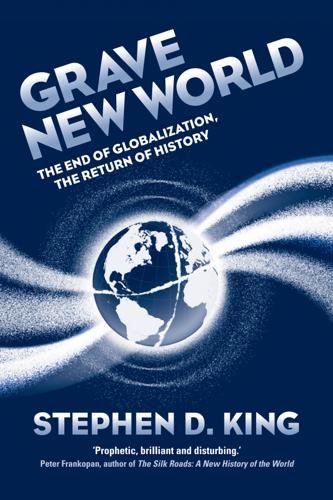
Grave New World: The End of Globalization, the Return of History
by
Stephen D. King
Published 22 May 2017
Elsewhere in the world, free-market philosophies were seemingly contributing to financial instability: most striking was the Asian Crisis of 1997/98 – which hit Thailand, South Korea, Indonesia, Malaysia and Hong Kong hard, even as communist China emerged relatively unscathed – and the broader emerging-market upheavals that followed. The phrase ‘Washington Consensus’ – which originally referred to a ten-point plan involving, inter alia, fiscal discipline, tax reform, trade liberalization, open cross-border capital markets, property rights and privatization3 – was reinterpreted pejoratively as a symbol of US ‘neo-liberalism’, leading to huge criticism of the post-war Washington-based institutions that, in earlier decades, had done so much to foster economic stability. Multilateral trade talks stalled.
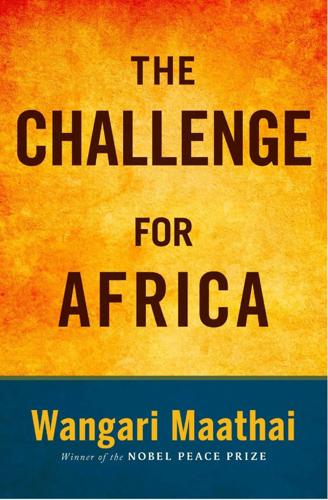
The Challenge for Africa
by
Wangari Maathai
Published 6 Apr 2009
When Africans desire to rediscover and reclaim their own culture, they're often obliged to travel to European and American libraries and archives for the information. It isn't unusual to find that foreigners know more about the native peoples than the latter know about themselves. Such is often the fate of the colonized. Africans have been shaped by many experiences: invasion, the slave trade, liberation, discrimination, and apartheid; the arrival of literacy, Christianity, and Islam; and deculturalization and displacement. Some were beneficial and revolutionized the African way of life; others were destructive. All these experiences have touched and shaped the African psyche. Perhaps because of the intensity, frequency, and persistence of these challenges, it has been more difficult for the African spirit to overcome them than it has been for other peoples who experienced similar upheavals.
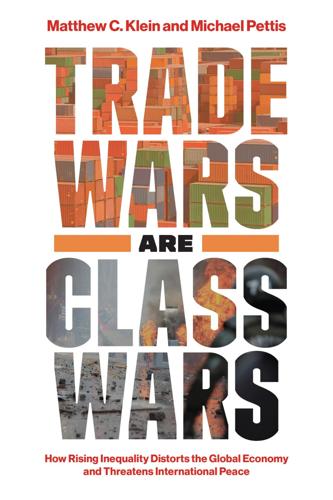
Trade Wars Are Class Wars: How Rising Inequality Distorts the Global Economy and Threatens International Peace
by
Matthew C. Klein
Published 18 May 2020
David Autor, David Dorn, and Gordon Hanson, “The China Shock: Learning from Labor-Market Adjustment to Large Changes in Trade,” Annual Review of Economics 8 (2016): 205–40; David Autor, David Dorn, and Gordon Hanson, “When Work Disappears: Manufacturing Decline and the Falling Marriage Market Value of Young Men,” American Economic Review: Insights 1, no. 2 (September 2019): 161–78; Justin R. Pierce and Peter K. Schott, “Trade Liberalization and Mortality: Evidence from U.S. Counties,” FEDS Working Paper No. 2016-094, November 2016; Leo Feler and Mine Z. Senses, “Trade Shocks and the Provision of Local Public Goods,” IZA Discussion Paper No. 10231, 2015. 39. FRB, “Summary Measures of the Foreign Exchange Value of the Dollar,” https://www.federalreserve.gov/releases/h10/summary/default.htm. 40.
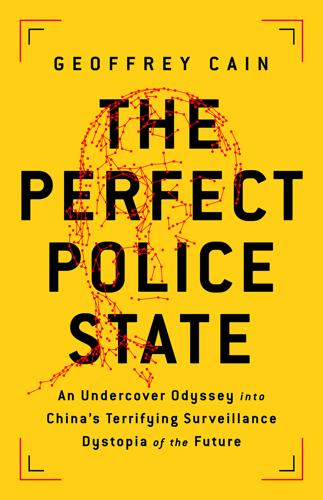
The Perfect Police State: An Undercover Odyssey Into China's Terrifying Surveillance Dystopia of the Future
by
Geoffrey Cain
Published 28 Jun 2021
Given the global nature of our operations, it is not possible for us to monitor the use or application of all products we manufacture.”25 But reports in Chinese state media quoted Thermo Fisher executives enthusiastically welcoming business opportunities in China. “We are encouraged by President Xi Jinping’s speech… and very grateful to the Chinese government’s support of global trade liberalization and opening-up,” Tony Acciarito, president of Thermo Fisher Scientific China, was quoted saying in state media outlet China Daily in November 2018. “We are also glad to learn that President Xi holds fully optimistic [sic] attitude toward China’s economic development.”26 Munsterhjelm looked back on the situation with a mixture of disgust and exasperation.
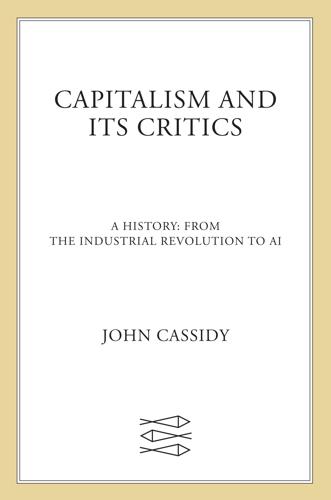
Capitalism and Its Critics: A History: From the Industrial Revolution to AI
by
John Cassidy
Published 12 May 2025
“I knew from my own experience that without a certain amount of trade protection in Turkey, a lot of the middle class, or the upper-middle class to which I belonged, wouldn’t have existed,” he recounted in a 2019 interview. “That was, in many ways, the beginning of my unorthodox views on economic development.”27 After finishing his doctorate in 1985, Rodrik moved back to Harvard, where he worked on a range of issues, including the impact of trade liberalization on developing economies. It was the era of “the Washington Consensus,” a phrase originally coined in 1989 by John Williamson, a senior fellow at the Institute for International Economics in Washington, to describe a set of pro-market policies that the IMF and other international institutions prescribed for highly indebted countries in Latin America and elsewhere.28 By the mid-1990s, the term was used to apply to a broader policy framework that the IMF and the US government urged on all developing countries, including the transition countries in eastern Europe.
…
In the years preceding the blowup, East Asia had seen big influxes of financial capital and run up large debts. Even among supporters of globalization, the ensuing crash raised doubts about the wisdom of liberalizing capital flows. In a 1998 article, “The Capital Myth,” Jagdish Bhagwati, a Columbia professor who was a prominent supporter of trade liberalization, argued that Washington policymakers had made a big error by treating money as just another commodity and letting it flow across borders at will. Unlike trade in tangible items like clothes and computers, international flows of money are sometimes driven by speculative manias, which often end in a bust.
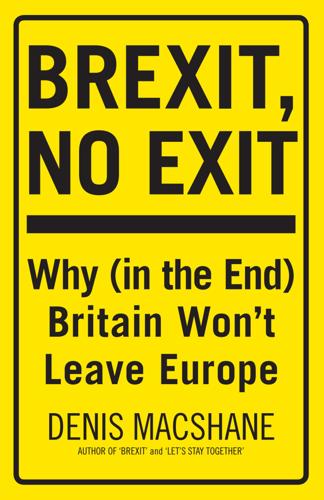
Brexit, No Exit: Why in the End Britain Won't Leave Europe
by
Denis MacShane
Published 14 Jul 2017
By February 2017, the Swiss parliament had quietly turned the referendum vote into a system of internal management of people movement which allowed European workers into Switzerland and was acceptable to the European Commission in Brussels. Many were aghast at this rapid expansion of the EU from a grouping of states with roughly similar levels of development based broadly on the system of responsible, open-trade liberal capitalism with a social face that put down roots after 1950, despite widely varied political and government systems. Greece was perhaps the most egregious example, though southern Italy would run it a close second. The creation of the euro was meant to have a double effect. It would allow the Single Market to expand, as every economic actor would now stop worrying about currency wars or need to hedge against the uncertainty of what a franc, peseta, lira or drachma would be worth.
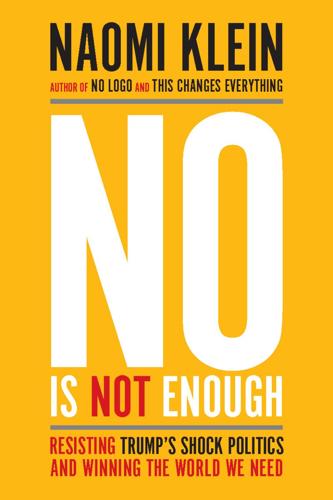
No Is Not Enough: Resisting Trump’s Shock Politics and Winning the World We Need
by
Naomi Klein
Published 12 Jun 2017
Ralph Lauren launched a line of paints, Virgin went into wedding dresses and colas, Starbucks had a line of jazz CDs. The possibilities seemed endless. Many of these highly branded companies made the (then) bold claim that producing goods was only an incidental part of their operations, and that, thanks to recent victories in trade liberalization and labor law reform, they could have their products produced for them at bargain-basement prices by contractors and subcontractors, many of them overseas. It didn’t really matter who did the physical work, because the real value lay not in manufacturing but in design, innovation, and of course marketing.
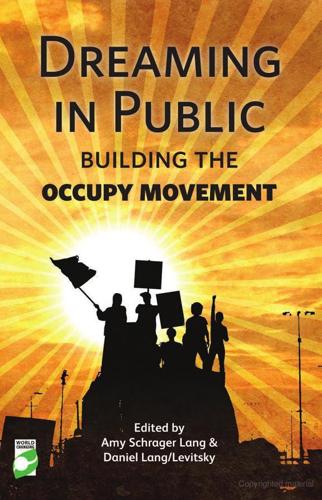
Dreaming in Public: Building the Occupy Movement
by
Amy Lang
and
Daniel Lang/levitsky
Published 11 Jun 2012
And in order to perpetuate this myth, the real and unignorable problems (like homelessness in Hungary) get thrown into a seemingly lively, but blind debate – inevitably resulting in botched ‘solutions’ which almost always have the victim as culprit. Stop paying Johnny Foreigner This morning’s news cycle was full of the idea that provision of overseas aid should be attached to conditions on the country receiving the aid – such as privatization, trade liberalization, oh and human rights.3 A plethora of eager comments and calls in, crying out: ‘We should be spending this money at home’ and ‘Why are we paying for those mad mullahs to hate us?’ Of course, anyone who had the chance to pick up a book on the matter of overseas aid would know that, once again, this is victim blaming with no context.
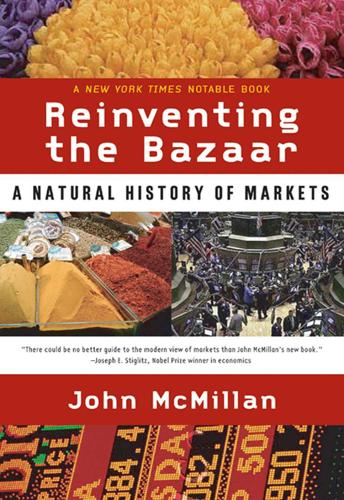
Reinventing the Bazaar: A Natural History of Markets
by
John McMillan
Published 1 Jan 2002
“A Bidding Model of Perfect Competition.” Review of Economic Studies 44, 511–518. ————. 1999. “Market Architecture.” Presidential address to the Econometric Society. Wood, Ellen Meiksins. 1999, The Origin of Capitalism. New York, Monthly Review Press. Woodruff, Christopher. 1998. “Contract Enforcement and Trade Liberalization in Mexico’s Footwear Industry.” World Development 26, 979–991. Wrong, Michela. 2000. In the Footsteps of Mr Kurtz: Living on the Brink of Disaster in the Congo. London, Fourth Estate. Wurgler, Jeffrey. 2000. “Financial Markets and the Allocation of Capital.” Journal of Financial Economics 58, 187–214.
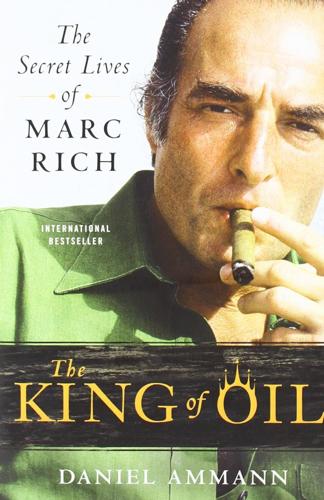
The King of Oil: The Secret Lives of Marc Rich
by
Daniel Ammann
Published 12 Oct 2009
Moritz), 7–8 Sweet Pain of Love, 218 Swissair Flight 111, 113–14 Swiss Federal Act on International Mutual Assistance in Criminal Matters (IMAC), 126–27, 284n Swiss Office for Police Matters, 128–29 Swiss Penal Code, 115, 152–53 Swiss tax treaty, 120–21, 125–27 Switzerland, 76–78, 125–34 extradition of Marc Rich, 128–34, 149–50 flight of Marc Rich to, 109–11, 113–16, 125–26, 201–2 “Sympathy for the Devil” (song), 7 Syria, 54, 72, 202 Taba Summit, 259 Tachkemoni School, 28 Tanker trade, 84–85, 189–90 Tapies, Antony, 10 Tax evasion and fraud, 8–9, 116–17, 125–28, 136–37, 145–47, 167–71 Texaco, 55–57 Thomajan, Bob, 110 Time (magazine), 137 Tin, 41, 44, 227 Torre de Madrid, 49 Trade liberalization, 267 Trader principle, 180–81 Trafford, John, 75–76, 80, 83, 115 Transaction costs, 85, 176 Trans-Asiatic Oil Ltd., 65–66 “Transfer pricing,” 145 Trau, René, 34, 217 Trillin, Calvin, 33–34 Troland, John, 107, 119 Trust, 40, 78, 86–88 Trust (Fukuyama), 86–87 Tucholsky, Kurt, 25 Tunisia, 14, 53, 63 Turkey, 82 20th Century Fox, 108, 111, 122, 123 20/20 (TV program), 254 UNITA (National Union for the Total Independence of Angola), 183–85 United Nations Human Rights Commission, 199 United Nations Oil-for-Food Programme, 231–32 United Nations Security Council, 191 United States of America v.
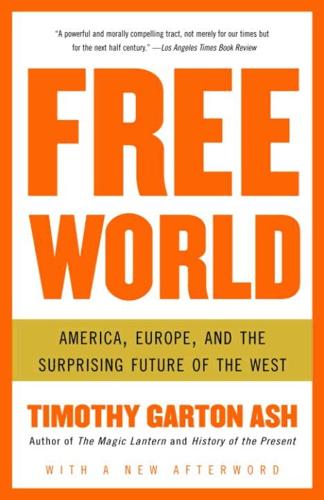
Free World: America, Europe, and the Surprising Future of the West
by
Timothy Garton Ash
Published 30 Jun 2004
There is a shocking disparity between what the United States has spent on the war in Iraq and the subsequent occupation, and what it spends on development aid to the rest of the world. Let America’s next war be the war on want. A country so large in spirit, so religious, and so rich can surely be won for such a war. Let a campaign of well-administered aid, medicine, debt relief, and trade liberalization be carried to the poorest of the world’s poor. Let the world see again, as it saw once after 1945, just how generous America can be—with a great big Stars and Stripes on every packet. Let Europe be challenged to keep pace, matching packet for packet, this time with our own yellow-and-blue star-spangled banner stuck on the side.
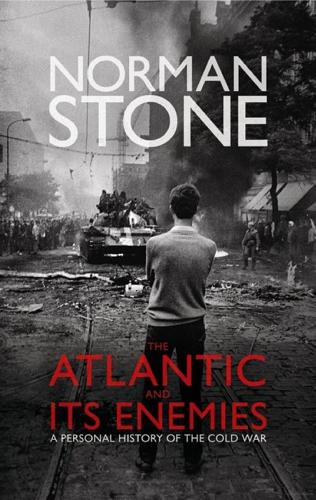
The Atlantic and Its Enemies: A History of the Cold War
by
Norman Stone
Published 15 Feb 2010
The British, still attempting to refloat their empire as a bloc, were much less intimately involved. They used the dollars just to pay off debts. It was on continental western Europe that the Marshall Planners concentrated, and its unity, in that sense, came in the (considerable) logistics trains of the American army. The essential was trade liberalization, and that could not be managed unless there were some means of payment, i.e. recognition of the various paper currencies. The old Bank for International Settlements at Basle in Switzerland - originally set up to handle the Reparations payments of the First World War - was revitalized, with a European Payments Union (in 1950).
…
But Britain, with still strong imperial or ex-imperial connections, with exports booming, with an important position in Atlantic affairs and a sizeable force fighting in Korea, had solid interests elsewhere, and in 1951 very few people took developments in Europe with the seriousness that they, in hindsight, merited. No-one in 1950 foresaw the rapidity with which England would decline. In practice the ECSC was not particularly successful. In a world of trade liberalization, it was at the mercy of imports, and, of all paradoxes, American coal imports were needed in Germany because the speed of her recovery meant that she needed all of her own coal. Much the same happened with metal: there was a ‘scrap mountain’ because it could not be sold at the cheap rates on offer elsewhere.
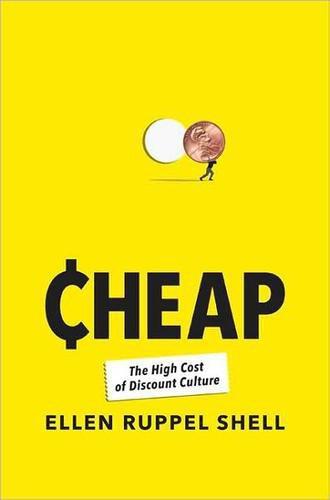
Cheap: The High Cost of Discount Culture
by
Ellen Ruppel Shell
Published 2 Jul 2009
Confident of the superiority of American products, United Steelworkers Union president David McDonald actually approved of the importation of steel from Japan. Years earlier he had testified before Congress, saying, “If I had the slightest feeling that increased trade, particularly imports, would be injurious to the American working man, I wouldn’t be supporting a policy of trade liberalization.” McDonald could not imagine that Japanese imports might pose a threat to his constituency. But even a tinny-sounding radio is a radio, after all, and American teenagers were happy to put up with static for the opportunity to enjoy the Beatles in private rather than huddle with their parents around a bulky American-made vacuum tube set.
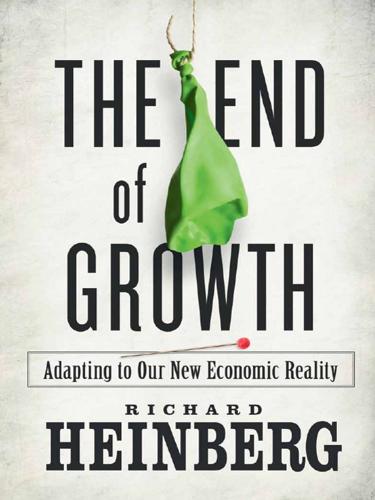
The End of Growth: Adapting to Our New Economic Reality
by
Richard Heinberg
Published 1 Jun 2011
Within Latin America, the Bolivarian Alliance for the Americas was initiated in 2004 with bilateral agreements between Venezuela and Cuba; the Alliance now numbers eight nations — including Ecuador, Nicaragua, and Bolivia — which are in the process of introducing a new regional currency, the sucre, to be used in place of the US dollar. The –sucre is intended to serve as the common virtual currency of the Alliance for now, and eventually to become a hard currency. The Alliance aims for social welfare, bartering, and mutual economic aid rather than trade liberalization led by Washington. Bolivia’s nationalization of its hydrocarbon assets and Ecuador’s declaration of the illegitimacy of its national debt (because it was contracted by prior corrupt and despotic regimes) can be interpreted as expressions of these nations’ rejection of the “shock doctrine” of the global economic elites.

Living in a Material World: The Commodity Connection
by
Kevin Morrison
Published 15 Jul 2008
The Middle East and Russia have also boosted economic growth on the back of the high oil price, while Brazil’s improving economy is primarily due to its emergence as a global agriculturalexport superpower. The rise in living standards has come at a time of unparalleled population growth, technological and scientific breakthroughs, political upheaval and economic and trade liberalization. Economic growth in developing countries has accelerated global growth at a faster pace than at any time since the 1960s. In the 1950s and 1960s, the world economy rose by 5 % due to the reconstruction of Europe and Japan, as well as the economic competition between the US and the Soviet Union.
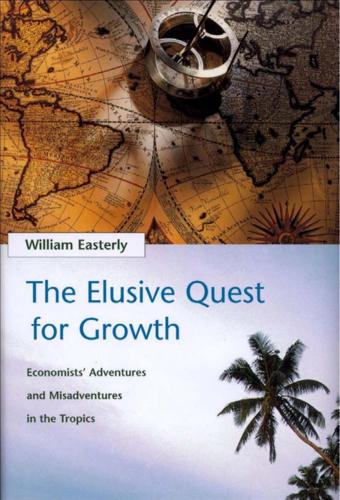
The Elusive Quest for Growth: Economists' Adventures and Misadventures in the Tropics
by
William R. Easterly
Published 1 Aug 2002
Journal of International Economics 43 (November): 287-311. Easterly, W., and S. Rebelo. 1993. ”Fiscal Policy and Economic Growth: An Empirical Investigation.” Journal of Monetary Economics 32, no. 3 (December). Economist Intelligence Unit. 1999. CBte d’Ivoire Country Report, Fourth Quarter. Edwards, Sebastian. 1993. “Openness, Trade Liberalization, and Growth in Developing Countries.” Journal of Economic Literature 31 (September). Edwards, Sebastian. 1995. Crisis and Reformin Latin America: From Despair to Hope. New York: Oxford University Press for the World Bank. Edwards, Sebastian. 1998. ”Openness, Productivity, and Growth What Do We Really Know.”
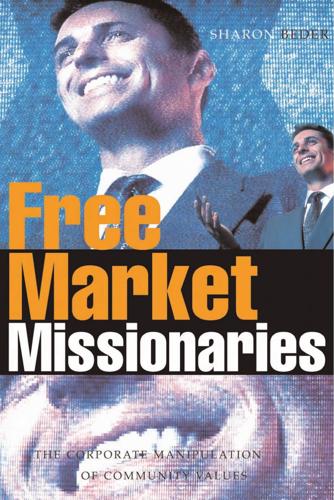
Free Market Missionaries: The Corporate Manipulation of Community Values
by
Sharon Beder
Published 30 Sep 2006
. • Financial Liberalization: Aiming towards market-determined interest rates and the abolition of preferential interest rates for privileged borrowers. • Exchange Rates: Setting exchange ‘to induce a rapid growth in nontraditional exports’, as well as to ensure exporters remain competitive. • Trade Liberalization: Reduction of tariffs and trade restrictions. • Foreign Direct Investment: Abolition of barriers to investment by foreign firms and foreign firms to be treated on the same basis as local firms. • Privatization: Privatizing government businesses and assets. • Deregulation: Abolition of regulations that impede investment or restrict competition, and requirement that all regulations be justified ‘by such criteria as safety, environmental protection, or prudential supervision of financial institutions’. • Property Rights: Securing property rights without excessive costs.15 ECONOMIC ADVISERS 149 These measures, a codified version of the Chicago School prescriptions, were measures that would expand business opportunities, reduce the cost of doing business and minimize the regulations that business would have to abide by.
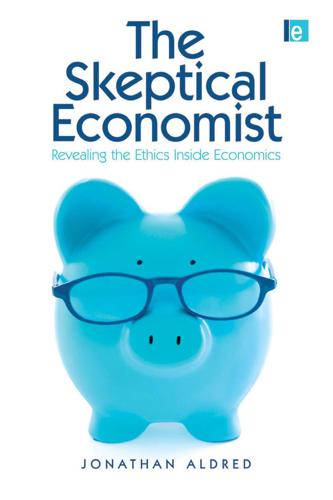
The Skeptical Economist: Revealing the Ethics Inside Economics
by
Jonathan Aldred
Published 1 Jan 2009
Surely that would effectively count as an objective improvement - an unambiguous gain for everyone. Consider the common argument that free trade makes the economy more efficient. Some economists argue that, at least in the long run, everyone will be better off from freer global trade. Suppose this is true. A sympathetic reading of the evidence on recent trade liberalization suggests that, roughly, rich countries have gained moderately, recently industrialized countries such as China have gained the most, while very poor countries have gained the least. And within countries, the gains are very uneven too, with the poorest in India and China gaining much less than others in their countries.
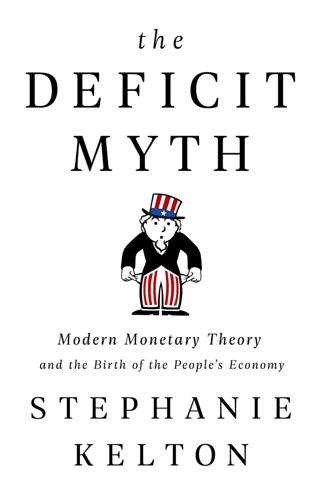
The Deficit Myth: Modern Monetary Theory and the Birth of the People's Economy
by
Stephanie Kelton
Published 8 Jun 2020
This involved a variety of tools, like tariffs and capital controls, aimed at keeping trade flows stable and national economies at least somewhat insulated from one another. When Bretton Woods ended, the global institutions it created remained. But over time, their governing philosophy shifted: the religion of free trade took over, and the tariffs and capital controls were relaxed in the name of trade liberalization. Western elites decided that fully exposing developing countries to global trade and to the in- and out-rushes of investor money would discipline their economies into becoming better. Protectionism and government intervention became dirty words. The champions of this new framework insisted that free trade would eventually bring full employment and harmonious trade relations across each participating country’s economy.28 Nothing like that has happened, of course.
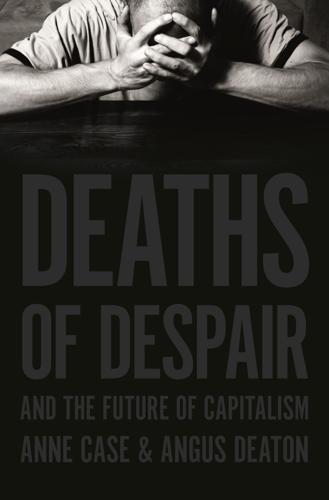
Deaths of Despair and the Future of Capitalism
by
Anne Case
and
Angus Deaton
Published 17 Mar 2020
Hendi, 2018, “Recent trends in life expectancy across high income countries: Retrospective observational study,” BMJ, 362, k2562, https://doi.org/10.1136/bmj.k2562. 21. David Autor, David Dorn, and Gordon Hansen, 2018, “When work disappears: Manufacturing decline and the falling marriage market-value of young men,” NBER Working Paper 23173, revised January; Justin R. Pierce and Peter K. Schott, 2016, “Trade liberalization and mortality: Evidence from U.S. counties,” NBER Working Paper 22849, November. 22. Amy Goldstein, 2017, Janesville: An American story, Simon and Schuster. Chapter 11: Growing Apart at Work 1. Benjamin M. Friedman, 2005, The moral consequences of economic growth, Vintage; Thomas B.
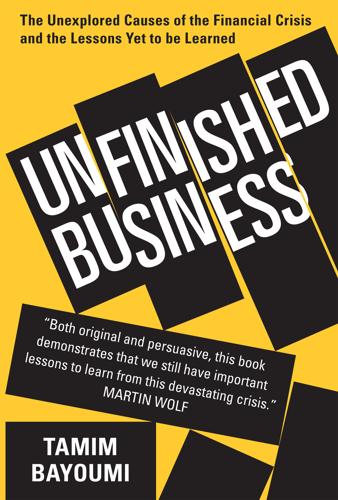
Unfinished Business
by
Tamim Bayoumi
In 1995, the loosely organized General Agreement on Tariffs and Trade (the GATT) was replaced by the World Trade Organization (WTO), whose wide membership was further enhanced by the accession of China in 2001 and Russia in 2002. The WTO proved a useful venue for dispute settlement, one of the most formalized parts of global economic cooperation. However, the complexities of a near-universal membership were exposed in the tortuous negotiations of successive rounds of international trade liberalization. This culminated in the seemingly never-ending wrangling over the 2001 “Doha” round. While Doha negotiations were advertised as being about supporting developing countries, they floundered on disagreements on the relative roles of advanced economies and emerging markets in improving the trading system.
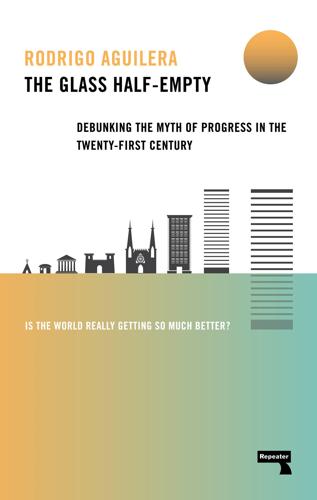
The Glass Half-Empty: Debunking the Myth of Progress in the Twenty-First Century
by
Rodrigo Aguilera
Published 10 Mar 2020
Unfortunately, the WTO still suffers from the tendency of a small number of rich countries to negotiate key decisions among themselves in so-called “green room” informal meetings in Washington or Brussels before subjecting them to full members’ consideration.50 The highly technical nature of trade legislation and dispute resolution means that poorer countries also often lack the resources to participate effectively, so much that some sub-Saharan countries have not even been able to afford to have permanent representatives at the WTO’s headquarters in Geneva — one of the world’s most expensive cities. Nevertheless, the successful resistance by developing countries (mainly the big ones like India and Brazil) to some of the most extreme attempts at trade liberalization proposed by rich countries in the 2000s is testament to the fact that the whims of Western countries on matters of global trade can’t always be rammed down the throats of the rest. Case in point, the spectacular failure of the controversial Doha Round of trade talks which would have knocked down trade barriers among the WTO’s members even further than they already had.
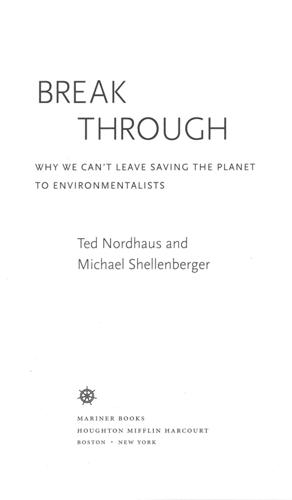
Break Through: Why We Can't Leave Saving the Planet to Environmentalists
by
Michael Shellenberger
and
Ted Nordhaus
Published 10 Mar 2009
But Friedman offers no evidence that any of the above is indicative of a shift in social values. The North American Free Trade Agreement (NAFTA) passed in Congress in 1993, when the economic recovery was just beginning, because President Clinton pushed it through, not because an increasingly prosperous and secure public had suddenly embraced trade liberalization. Notably, in 2005, after twelve years of solid economic growth (only briefly interrupted by a small recession), Congress rejected an expansion of NAFTA to the rest of Latin America. Affirmative action was dramatically rolled back in a voter initiative in California in 1996—a banner year for economic growth.
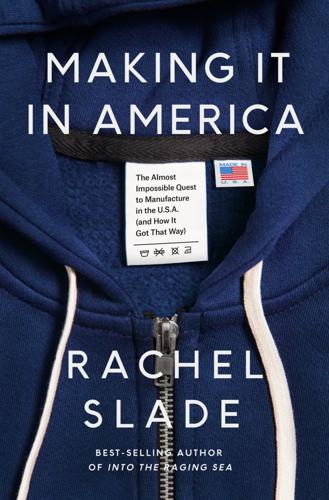
Making It in America: The Almost Impossible Quest to Manufacture in the U.S.A. (And How It Got That Way)
by
Rachel Slade
Published 9 Jan 2024
Following the ratification of NAFTA, agricultural work in Mexico was consolidated, local economies were gutted, jobs disappeared and wages sank, forcing rural Mexicans to leave their villages and join the 11 million undocumented workers competing for low-wage jobs in the United States, a labor pool compounded by the influx of Americans who had also lost their manufacturing jobs to Mexico and beyond. The World Bank, a major cheerleader of trade liberalization, estimates that the number of people struggling to earn enough to eat doubled in the first four years of NAFTA alone. Incidentally, the Pentagon warned in 2009 that Mexico now “bear[s] consideration for a rapid and sudden collapse.” Yet the U.S. government continues to encourage offshoring.
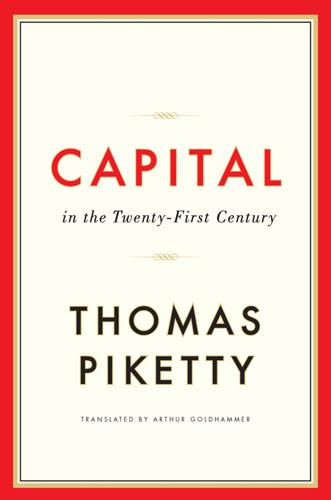
Capital in the Twenty-First Century
by
Thomas Piketty
Published 10 Mar 2014
After 1980, moreover, the new ultraliberal wave emanating from the developed countries forced the poor countries to cut their public sectors and lower the priority of developing a tax system suitable to fostering economic development. Recent research has shown that the decline in government receipts in the poorest countries in 1980–1990 was due to a large extent to a decrease in customs duties, which had brought in revenues equivalent to about 5 percent of national income in the 1970s. Trade liberalization is not necessarily a bad thing, but only if it is not peremptorily imposed from without and only if the lost revenue can gradually be replaced by a strong tax authority capable of collecting new taxes and other substitute sources of revenue. Today’s developed countries reduced their tariffs over the course of the nineteenth and twentieth centuries at a pace they judged to be reasonable and with clear alternatives in mind.
…
As I showed in the previous chapter, it is often quite difficult for people of modest means to achieve the average return on capital (or even just a positive return). In some respects, this what the Swedish system offers in the (small) part that it devotes to capitalized funding. 48. Here I am summarizing the main results of Julia Cagé and Lucie Gadenne, “The Fiscal Cost of Trade Liberalization,” Harvard University and Paris School of Economics Working Paper no. 2012–27 (see esp. figure 1). 49. Some of the problems of health and education the poor countries face today are specific to their situation and cannot really be addressed by drawing on the past experience of today’s developed countries (think of the problem of AIDS, for example).
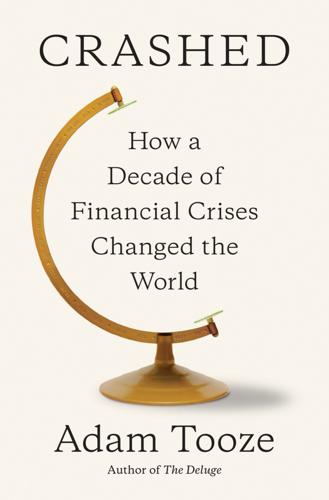
Crashed: How a Decade of Financial Crises Changed the World
by
Adam Tooze
Published 31 Jul 2018
The statements were of varying levels of discipline, relevance and sophistication. The Germans, Australians and Canadians were on point. Sarkozy grandstanded and demanded action on the Doha trade round, despite the fact that France’s defense of European agriculture was one of the greatest obstacles to progress on world trade liberalization. Italy’s Prime Minister Berlusconi had nothing to say about the economy, but he did at least offer warm wishes to the outgoing President Bush. For a “global” forum there were still too many Europeans around the table.27 Brazil and Argentina enjoyed their moment in the spotlight. They had axes to grind and wanted to fire off parting shots in the direction of President Bush.
…
But rather than translating this vision into positive proposals for the WTO, the Trump administration adopted the tactics the Republicans had used to such effect in Congress. The United States refused to permit the appointment of new arbitrators to WTO panels, threatening to hollow out the institution, making it increasingly dysfunctional and illegitimate. If there was no actual éclat at the WTO meeting in December 2017, the lack of progress on any area of trade liberalization was dismal.108 Lighthizer did not even deign to stay until the end of the conference. The shock delivered by the new administration to global economic institutions was severe. There had been nothing like this since the 1930s and nowhere was this felt more acutely than in Europe. In the early days it was unclear whether the Trump team actually acknowledged the EU as a counterparty or understood that the United States no longer maintained bilateral trade relations with individual European countries.
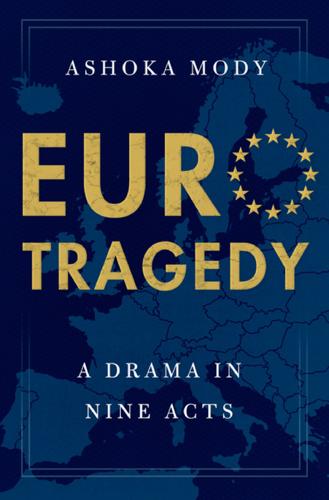
EuroTragedy: A Drama in Nine Acts
by
Ashoka Mody
Published 7 May 2018
Friedman, Johnson said, was right. Greater exchange- rate flexibility would give countries greater insulation from macroeconomic shocks and would allow national authorities more freedom in the pursuit of domestic policy objectives. Thus, while in 1957 the Treaty of Rome had been in the vanguard of international trade liberalization, in late 1969, Pompidou’s call for permanently fixed exchange rates embedded in a European monetary union was not just an eccentric priority for France, it was mystifyingly opposed to the global trend toward a system of flexible exchange rates. In seeking what appeared to him an easy fix, Pompidou was shirking his true obligation to seek real solutions to France’s long-term competitiveness problems.
…
See individual treaties Treaty of Accession (Greece-EEC), 131 Treaty of Rome (1957), 5 call for “an ever closer union,” 74 customs union establishment by, 55 France and, 50 Judt’s comment on, 31 Marjolin’s role in, 32, 55, 67 replacement of High Authority, 472 role in flowering of European community, 60 role in international trade liberalization, 40 signing of, 30 successes of, 32 trade ambitions of, 31 Treaty on the European Union. See Maastricht Treaty Trebesch, Christoph, 415 Tremonti, Giulio, 151 Trichet, Jean-Claude, 216–217, 295 on automatic sanctions, 274 Banque de France governorship, 121 Deauville decision and, 276, 278–280 ECB presidency of, 15 final months of, 298–303 Geithner-Trichet doctrine, 214 lack of accountability of, 335 letter to Berlusconi, 300–301 letter to Zapatero, 300–301 Maastricht summit participation, 84 Merkel’s support for, 303 raising interest rates in 2011, 293–296 opinion on ECB interest rate, 291 Sarkozy’s argument with, 303 subprime crisis response, 203, 211 support for Atlante, 376 3 percent rule and, 89–90b triggering of financial crisis, 300 Triffin, Robert, 43 Troubled Asset Relief Program (TARP), 216–219 True Finns, 429 Trump, Donald, 404 Tsipras, Alexis, 413, 418, 420–421 Tsoutsoura, Margarita, 185 unemployment in Europe, 100 eurozone rates, 11, 156 exchange rates and, 71b in France, 55, 57–58, 95, 96f in Germany, 65, 81, 95, 96f inflation rates and, 38 interest rates and, 39 in Italy, 96f Maastricht Treaty and, 95 Modigliani’s comment on, 91 monetary/fiscal austerity and, 68 of youth, in Greece, 232–233 UniCredit bank (Italy), 375–376, 379 United Kingdom belief in European free trade, 98 Cripps’s role as finance minister, 26 debt write-offs, 415 EEC membership, 44 euro-area productivity comparison, 169f euro-skeptical forces in, 334–335 eurozone non-membership, 136, 173–174 inflation rates, 99 Ireland and, 178, 179 Irish citizens emigration to, 432–433 low inflation rates, 173–174 low innovation in, 176f protests against European encroachment, 153 Maastricht summit participation, 84 R&D/GDP ratio (1997), 176f rumblings of Brexit, 333–335 role in steadying euro, 138–139 SGP and, 145 single currency, right to opt out, 9, 333–334 United States (U.S.)

What's Next?: Unconventional Wisdom on the Future of the World Economy
by
David Hale
and
Lyric Hughes Hale
Published 23 May 2011
And although Australia’s political cycles have not always mirrored those in the United States and Britain (indeed, it is striking how Australian and British electorates have swung in opposite directions since the 1980s), Australian policymakers have been significantly influenced by political and intellectual fashions and trends emanating from Britain and America. In particular, since the 1980s Australian government have for the most part been committed to the so-called Washington consensus of trade liberalization, privatization, and deregulation of financial and other markets. Moreover, most of Australia’s major financial institutions have been managed by executives originally from, or with substantial experience gained in, the American or British markets for at least part of the 1990s or early 2000s.

Age of Discovery: Navigating the Risks and Rewards of Our New Renaissance
by
Ian Goldin
and
Chris Kutarna
Published 23 May 2016
The Butterfly Defect: How Globalization Creates Systemic Risks, and What to Do About It Divided Nations: Why Global Governance Is Failing, and What We Can Do About It Exceptional People: How Migration Shaped Our World and Will Define Our Future Globalization for Development: Meeting New Challenges The Case for Aid The Economics of Sustainable Development Economic Reform, Trade and Agricultural Development Modelling Economy-wide Reforms Trade Liberalization: Global Economic Implications Open Economies The Future of Agriculture Economic Crisis: Lessons from Brazil Making Race About the Authors IAN GOLDIN is Professor of Globalization and Director of the Oxford Martin School at the University of Oxford. He was Vice President of the World Bank, Chief Executive of the Development Bank of Southern Africa and an adviser to President Nelson Mandela.
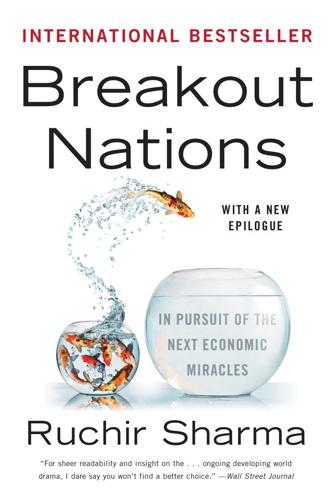
Breakout Nations: In Pursuit of the Next Economic Miracles
by
Ruchir Sharma
Published 8 Apr 2012
At its peak in the 1970s, state spending accounted for 59 percent of GDP, and four in ten Sri Lankans worked for the government, an extraordinarily high number. But by the late 1990s even the main left-leaning party, the SLFP, was moving toward a more modern development model built on an open economy and trade liberalization. State spending has fallen to about 30 percent of GDP today, and most parties agree this is movement in the right direction. Ultimately, the economic impact of Sri Lanka’s civil war was relatively mild despite the personal suffering of the people it swept up. According to USAID research, a typical civil war of fifteen-year duration reduces national GDP by around 30 percent, and it typically takes a decade just to recover the prewar levels of income.

The Blockchain Alternative: Rethinking Macroeconomic Policy and Economic Theory
by
Kariappa Bheemaiah
Published 26 Feb 2017
To gain a better insight into the role of technology, offshoring, and globalization in accentuating inequality, studies such as those done by Jaumotte et al (2008), have examined survey data of the subcomponents of trade and financial globalization, including comparative analysis of exports of manufacturing versus agriculture, and portfolio debt and equity flows versus foreign direct investment (FDI) . They found that while trade liberalization and export growth are associated with income inequality, increased financial openness was associated with higher inequality. ---------------------------------------------------------------------------------------- *(An economic hypothesis which states that as an economy develops, market forces first increase and then decrease economic inequality, following a bell curve trajectory.)
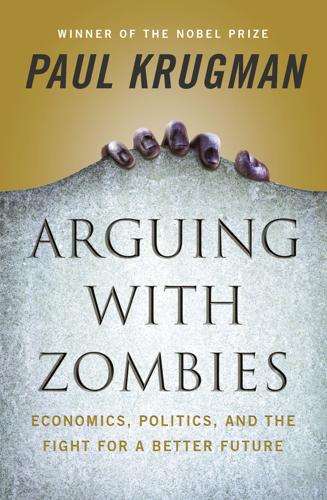
Arguing With Zombies: Economics, Politics, and the Fight for a Better Future
by
Paul Krugman
Published 28 Jan 2020
(In fairness, there’s an academic literature arguing that the underlying economics matter more than I’m suggesting, work that I consider admirable but unpersuasive.) True, for the past eighty years the U.S. has sought to make trade gradually freer; this reflected in part the (very) indirect influence of economic theory, in part the belief that closer economic integration was good for peace and the free world alliance. But the process by which trade liberalization was sought was all about political realism rather than abstract ideals. And what political realism on trade means is that producer interests matter much more than consumer interests, because producers tend to be far more organized and aware of the stakes in any given trade policy. The classic case was sugar, where for many years U.S. import quotas kept prices here several times above world levels.
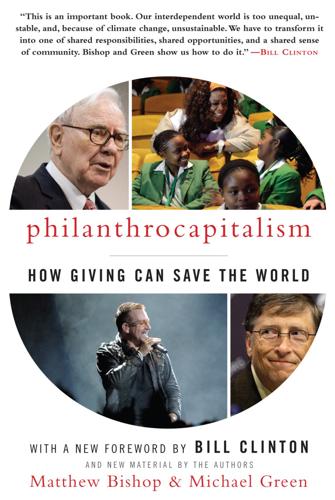
Philanthrocapitalism
by
Matthew Bishop
,
Michael Green
and
Bill Clinton
Published 29 Sep 2008
In their Brookings paper, Brainard and Chollett note that some “worry about the proliferation of actors and the oversimplification of messages such as Make Poverty History.” They point to some evidence that “advocacy networks have proven far more effective in instances of humanitarian crisis . . . where the face of human suffering is a powerful motivator for grassroots engagement, than on trade liberalization or dismantling agricultural subsidies, where domestic opposition is strong and the connection to poverty not as clear.” In short, they write, advocacy, including that done by celanthropists, “lends itself to simple and sometimes simplistic messaging but is far less amenable to telling a complicated story.”
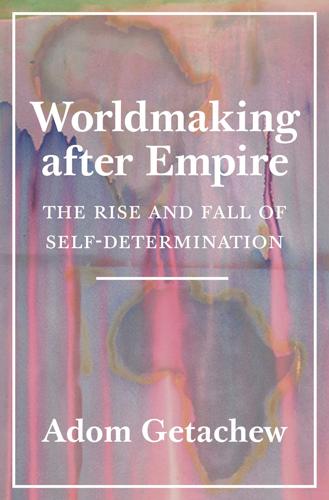
Worldmaking After Empire: The Rise and Fall of Self-Determination
by
Adom Getachew
Published 5 Feb 2019
While OPEC functioned in important ways as a model for the kinds of commodity associations other developing nations hoped to create and signaled what the power of collective action in the international sphere might accomplish, the hike in oil prices and the [ 170 ] Ch a pter Fi v e accompanying spike in food prices proved to be particularly painful for the developing world.125 Relatedly, the kinds of trade liberalization advocated by the NIEO were more likely to benefit larger, more industrialized countries like Brazil rather than predominantly rural economies.126 The language of a trade union for the poor nations thus tended to mask the dif ferentiated nature of the developing world. Beset with these limitations of the domestic analogy, the NIEO also embodied the central contradiction of anticolonial worldmaking in the age of decolonization, caught as it was between reinforcing state sovereignty and recommending internationalist solutions to the postcolonial predicament.

The Costs of Connection: How Data Is Colonizing Human Life and Appropriating It for Capitalism
by
Nick Couldry
and
Ulises A. Mejias
Published 19 Aug 2019
Although the site of data colonialism that we most often notice is the social quantification sector, and particularly the personal data extraction practiced by social media platforms, the basic extractive principles underlying data colonialism have been gestating in the business methods of modern capitalism for three decades. The original context was industrial capitalism’s progressive globalization in the late twentieth century through trade liberalization and extended supply chains as well as its financialization through an explosive growth of debt (both corporate and personal) and the acceleration of global capital flows. In this general context, the information infrastructures emerged that enabled people and processes to be connected to each other under conditions that facilitate data extraction.30 Take an example far from social media: the discipline of logistics.
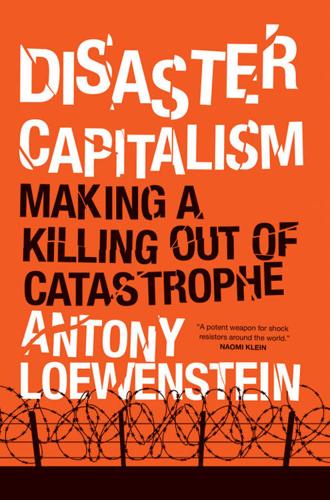
Disaster Capitalism: Making a Killing Out of Catastrophe
by
Antony Loewenstein
Published 1 Sep 2015
In the wake of the 2011 earthquake and tsunami in Japan, it did not take long for commentators to start calling for “reform”—code for mass privatization that would allow big business a free hand in redeveloping the devastated areas with the help of generous tax breaks. Murray McLean, Australia’s former ambassador to Japan, argued that trade liberalization was one viable solution, but he was worried that leaders would remain “bogged down in policymaking malaise.”25 His suggestions sounded benign, but they were remarkably similar to the prescriptions described by Klein in The Shock Doctrine in relation to the tsunami that bore down on Sri Lanka, among other countries, on December 26, 2004.
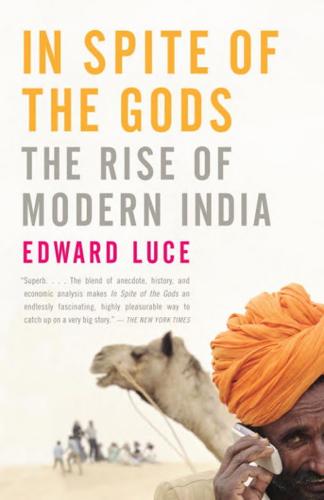
In Spite of the Gods: The Rise of Modern India
by
Edward Luce
Published 23 Aug 2006
Both countries have concluded trade agreements with the Association of South East Asian Nations. And India is hoping to emulate China’s growing trade relations with South America. At the global level, China, India, Brazil, and South Africa lead the G20, a block of twenty developing countries that has become a weighty player at world trade liberalization talks in Geneva. There is also a proposal for a bilateral trade deal between India and China, although this would take years to negotiate. Does all this mean China and India have entered on a genuine era of friendship? Proponents of free trade are fond of the saying “When countries start trading goods, they stop trading blows.”
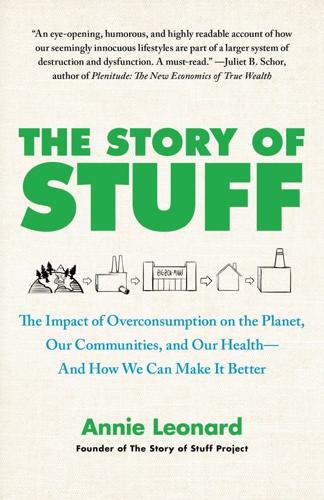
The Story of Stuff: The Impact of Overconsumption on the Planet, Our Communities, and Our Health-And How We Can Make It Better
by
Annie Leonard
Published 22 Feb 2011
House of Representatives and the Senate Foreign Relations Committee but didn’t make it to the full Senate for a vote.112 Even while waiting for the Jubilee Act to move forward, there are other signs of hope, such as the April 2009 promise by the Obama administration to provide $20 million to cancel Haiti’s absolutely crippling debt payments to the World Bank and its regional ally, the Inter-American Development Bank.113 The last of the big three is the World Trade Organization. The WTO was created in 1995 as the successor to the General Agreement on Tariffs and Trade (or GATT). First aimed at reducing trade tariffs, it later turned to “trade liberalization”—that is, removing obstacles to increased trade. Now, I am not against trade, which has been happening since the beginning of time and has brought many good things. But trade should take place when it supports a thriving environment, good jobs, healthy communities, and cultural diversity. Trade can support all those things when those things are the end, and trade is one (just one) means by which to achieve them.
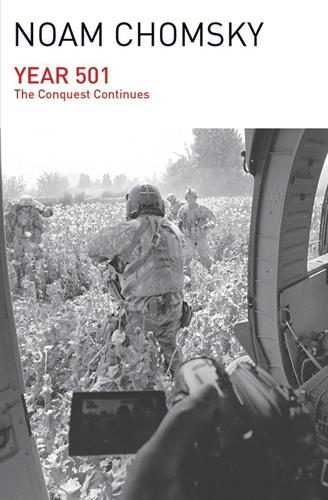
Year 501
by
Noam Chomsky
Published 19 Jan 2016
The most extensive comparative study concludes that “periods of significant export expansion are almost always preceded by periods of strong import substitution”—measures of state intervention in violation of the market (Chenery, et al.). The comparison of Brazil and the East Asian NICs is telling. Until 1980, they developed in parallel, with “active industrial and export polities” and import substitution. But the debt crisis compelled Brazil to adopt IMF-World Bank New Orthodoxy, elevating “trade liberalization over domestic growth objectives” and turning to the export of primary products, with grim consequences. The NICs, with much more powerful state controls, prevented the market disaster, barring capital flight and directing capital to investment.4 Meanwhile China, the one “Communist” country that has kept the Western experts at arms length, remains the only one with rapid economic development (along with vigorous repression and no pretense of democracy).
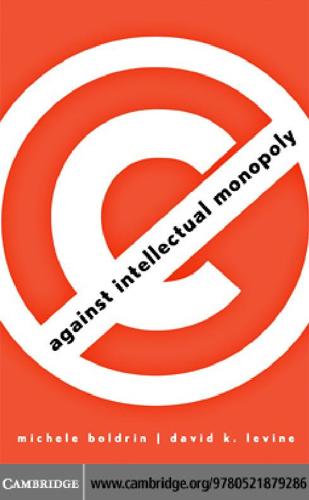
Against Intellectual Monopoly
by
Michele Boldrin
and
David K. Levine
Published 6 Jul 2008
At the same time, legal, economic, and business know-how has also accumulated about how markets for innovation operate without intellectual monopoly. To rule out abolition a priori would be as silly now as it would have been to rule out the abolition of tariffs and trade barriers fifty years ago, when the trade liberalization process that has given us prosperity and globalization began. For a long time, the individuals and firms that profited from trade barriers argued that these increased the wealth of the nation and defended homeland companies and jobs, and that abolishing them would lead to a disaster for many sectors of our economy.

The Future Is Asian
by
Parag Khanna
Published 5 Feb 2019
Capitalism, Asian Style Asian countries have no doubt that globalization has been their ticket to prosperity. Even as they become less dependent on Western economies, they are pursuing an “open regionalism” of integrating with one another while expanding trade ties far and wide. US backtracking on trade liberalization (even within its own region through NAFTA) has not diminished Asia’s appetite to expand trade with every other world region as well as the United States. Throughout history, “free trade” has been advocated by rising powers with trade surpluses, notably Great Britain in the nineteenth century and the United States in the twentieth.

Moon Mexico City: Neighborhood Walks, Food & Culture, Beloved Local Spots
by
Julie Meade
Published 7 Aug 2023
Measuring an 8.1 on the Richter scale, the quake shook Mexico City for three full minutes, during which time hundreds of buildings collapsed to the ground and around 10,000 people were killed (though some estimates put the number of fatalities much higher). There was major damage to infrastructure, leaving tens of thousands without potable water and hospitals inoperable. Economic recovery began under the next president, Carlos Salinas de Gortari, who renegotiated the country’s external debts and embarked on a policy of trade liberalization. By 1994, Mexico was economically stable enough to sign on as a member of the North American Free Trade Agreement (NAFTA). However, shortly after PRI president Ernesto Zedillo was sworn into office, Mexico’s currency collapsed and recession returned. The U.S. Treasury and the International Monetary Fund put together a massive financial bailout.
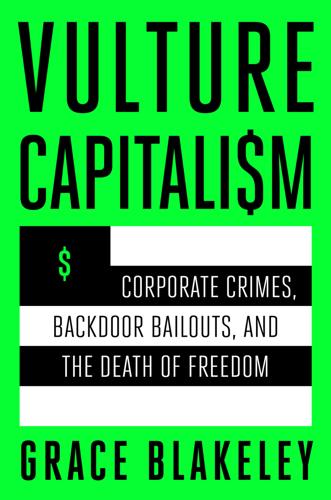
Vulture Capitalism: Corporate Crimes, Backdoor Bailouts, and the Death of Freedom
by
Grace Blakeley
Published 11 Mar 2024
Neoliberal economists claimed that these “structural adjustment programs” (SAPs) would encourage growth by replacing inefficient import-substituting industrialization programs with a strategy of “export-led growth.”153 Many believed that shifting from protectionism to free trade, while liberalizing domestic markets, would allow low-income countries to achieve the kind of “takeoff” predicted by Walt Rostow. But as dependency theorists like Prebisch would have predicted, these measures failed, deepening inequalities between rich and poor countries.154 Trade liberalization simply made it easier for predatory multinational corporations to enter the economies of the Global South and displace domestic capitalists before reshoring profits to the Global North. Meanwhile, domestic producers faced large barriers to exporting their goods on a global market weighted toward core countries, in part due to the protectionism of the rich world.155 Financial liberalization gave rise to immense financial instability, and austerity increased poverty and inequality.156 The plans also made it easier for elites to siphon their cash out of their countries into tax havens, undermining democracy.157 The financialization of the world economy “facilitated the outward flow of capital from developing countries.”158 One IMF economist later admitted that “everything we did from 1983 onward was based on our new sense of mission to have the south ‘privatized’ or die; toward this end we ignominiously created economic bedlam in Latin America and Africa.”159 For most of the world’s poorest states, the results were disastrous, especially in Nkrumah’s home in sub-Saharan Africa.160 The poor world did not have the productive base to withstand the overwhelming power of foreign capital.
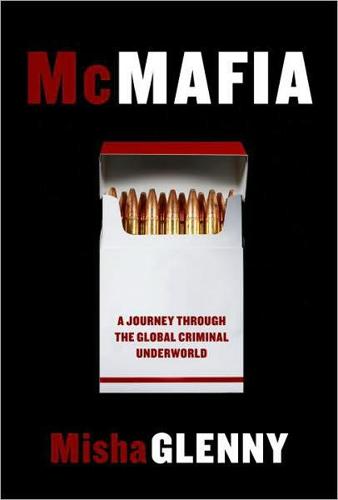
McMafia: A Journey Through the Global Criminal Underworld
by
Misha Glenny
Published 7 Apr 2008
An inherent aspect of their trading is risk taking and the scavenging of new markets—places that lie on the edge of organized trading networks, of states and of systems of moral values. And on the whole, these traders do not judge a commodity by its social function in its place of origin or consumption. They judge it by its profit margin. As trade liberalization was hailed in the late 1980s and early 1990s as a cornerstone of the complex new worldwide network of relations known as globalization, traders started traveling farther and in greater numbers than ever before in search of new opportunities to buy and sell. In the forefront were those peoples, often minority communities, who had centuries of tradition in trading and living on their wits along the farthest frontiers of global commerce: the Lebanese, the Chinese of Canton and Fujian provinces, the Balkan peoples, the Jews, the Muslims of India, the Sicilians, the Vietnamese.
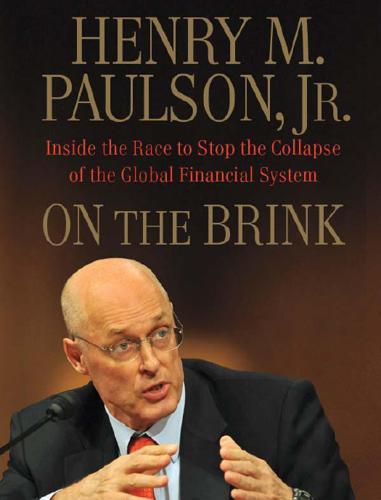
On the Brink: Inside the Race to Stop the Collapse of the Global Financial System
by
Henry M. Paulson
Published 15 Sep 2010
While much progress has been made, real risks remain, including those of trade and financial protectionism. At each G-20 summit, the leaders condemn protectionism, but they do so against the backdrop of increasing political pressures at home that have resulted in a variety of measures that are inconsistent with their repeated pledges. The U.S.’s own commitment to trade liberalization remains in question. As I complete this book, no action has been taken on pending free-trade agreements, and no progress has been made on completing the World Trade Organization’s Doha round of multilateral trade talks. In a world where virtually everyone agrees we have had inadequate regulation of banks and capital markets, there is a very real danger that financial regulation will become a wolf in sheep’s clothing, rivaling tariffs as the protectionist measure of choice for those nations that want to limit or eliminate competition not only in financial services but also in any other sector of their economy.
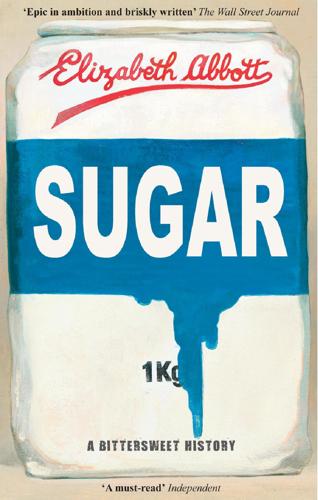
Sugar: A Bittersweet History
by
Elizabeth Abbott
Published 14 Sep 2011
In adulthood, cane workers remain underpaid, overworked and indifferently treated. Fears about irreconcilably different labor conditions and other issues pit beet against cane grower, ex-colony against ex-colony, and the entire developing, less and least developed world against former imperialists. Rival ideologies of free trade, liberalized trade and protectionism enter the fray as they vie for recognition, as do consumer advocates clamoring for cheaper prices and social justice advocates demanding fair trade. A series of international agreements formalize these changes in traditional sugar trade relationships. The Central American Free Trade Agreement, for instance, nudges American sugar producers into competition with five Central American nations plus the Dominican Republic, though just 1 percent of U.S. production is involved.
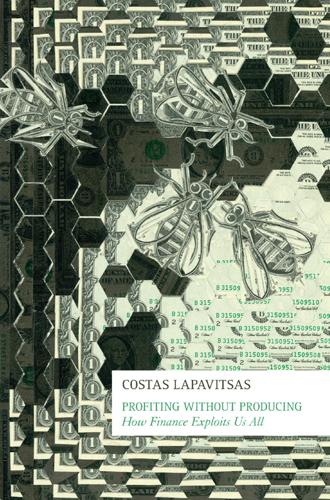
Profiting Without Producing: How Finance Exploits Us All
by
Costas Lapavitsas
Published 14 Aug 2013
FIG. 47 Private capital flows, emerging and developing countries, $bn Figure 46 further shows that, during this period, substantial current account surpluses have emerged among developing countries. Underlying this phenomenon has been the closer integration of developing countries into the world market as policies of trade liberalization have been generally adopted after the 1980s. Increasing integration has held even for low-income countries in Africa and Asia, judging by exports relative to GDP.28 The trajectory of the current account in the 2000s has varied significantly among developing countries in line with trade specialization and other historically specific factors.
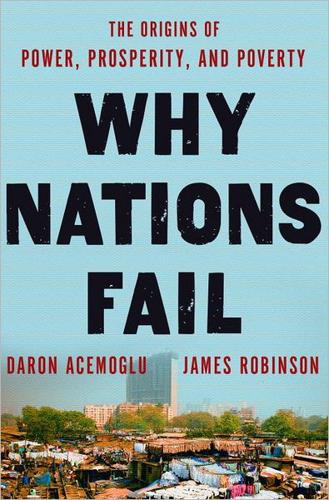
Why Nations Fail: The Origins of Power, Prosperity, and Poverty
by
Daron Acemoglu
and
James Robinson
Published 20 Mar 2012
The Chinese experience does raise several interesting questions about the future of Chinese growth and, more important, the desirability and viability of authoritarian growth. Such growth has become a popular alternative to the “Washington consensus,” which emphasizes the importance of market and trade liberalization and certain forms of institutional reform for kick-starting economic growth in many less developed parts of the world. While part of the appeal of authoritarian growth comes as a reaction to the Washington consensus, perhaps its greater charm—certainly to the rulers presiding over extractive institutions—is that it gives them free rein in maintaining and even strengthening their hold on power and legitimizes their extraction.

Meat: A Benign Extravagance
by
Simon Fairlie
Published 14 Jun 2010
In it he provided figures showing that only 33 per cent of UK compound pig food consisted of grains fit for human consumption; 22 per cent was oil seed residues and the remainder consisted mainly of various other kinds of animal and vegetable food residues.4 However, he warned that the pig’s role as recycler of waste food was under threat from a number of factors, including: (i) Changing animal feed legislation (ii) The concentration of the animal feed industry into national corporations too large to cope with intrinsically variable raw materials or those only available in small quantities. (iii) Lower cereal prices as a result of EU policies and trade liberalization. (iv) The influence of the supermarkets who were ‘increasingly dictating methods of production … and imposing limits on the range of raw materials and dietary inclusions’. Brooks concluded: the Pig must not be allowed to become a competitor with Man for food products but must remain a converter of that which Man cannot eat, or rejects, into a product which he can and will eat.

The Rise and Fall of Nations: Forces of Change in the Post-Crisis World
by
Ruchir Sharma
Published 5 Jun 2016
As Indonesia’s former finance minister Muhamad Chatib Basri notes, Indonesia had turned inward during the 1970s but was forced to reform in the 1980s following the collapse in the price of oil, then Indonesia’s leading export. Falling oil prices led to a drop in the value of the Indonesian rupiah, which had the effect of reducing the revenues earned by exporters, and transformed them into supporters of trade liberalization. The Indonesian leader Suharto put economic policy in the hands of technocrats, who began cutting tariffs and taxes. They opened doors to foreign investment and instituted an unusually creative answer to corruption among customs agents, by replacing the customs department with a private Swiss inspection company, SGS.
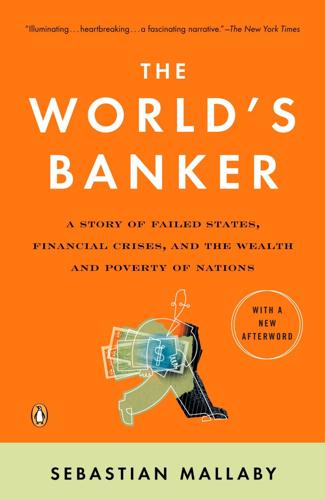
The World's Banker: A Story of Failed States, Financial Crises, and the Wealth and Poverty of Nations
by
Sebastian Mallaby
Published 24 Apr 2006
“What shall I tell the press?” the boss demanded. He wanted to know which loans he could point to that were tackling poverty. His staff answered that the Bank’s lending was largely directed at macroeconomic stabilization, even though no such stabilization had materialized. There was a loan to promote trade liberalization, they ventured. There was another to reform the banking sector. “I can’t tell the bloody press that these reforms are being financed by our money!” Wolfensohn shouted. “I’ve got to tell them we’re buying medicines, food for the poor, that’s what I need to say!” However terrifying his style, Wolfensohn’s instincts were right.
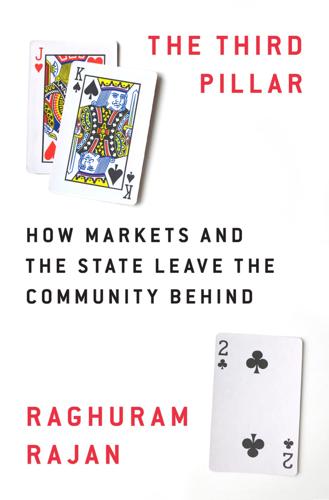
The Third Pillar: How Markets and the State Leave the Community Behind
by
Raghuram Rajan
Published 26 Feb 2019
Shubham Chaudhuri, “What Differences Does a Constitutional Amendment Make? The 1994 Panchayati Raj Act and the Attempt to Revitalize Rural Local Government in India,” in Decentralization and Local Governance in Developing Countries: A Comparative Experience, ed. Pranab Bardhan and Dilip Mookherjee (Cambridge, MA: MIT Press, 2006). 26. Petia Topalova, “Trade Liberalization, Poverty, and Inequality Evidence from Indian Districts,” in Globalization and Poverty, ed. Ann Harrison (Chicago: University of Chicago Press, 2007), 291–336, available at http://www.nber.org/chapters/c0110.pdf; Lakshmi Iyer and Petia Topalova, “Poverty and Crime: Evidence from Rainfall and Trade Shocks in India,” Harvard Business School Working Paper No. 14–067, September 2014. 27.
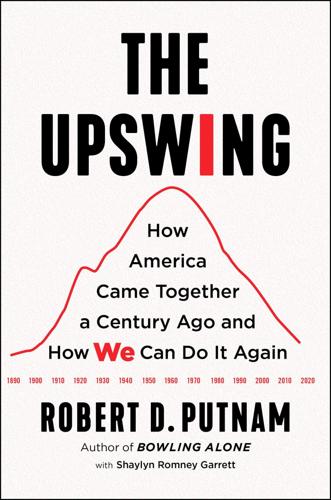
The Upswing: How America Came Together a Century Ago and How We Can Do It Again
by
Robert D. Putnam
Published 12 Oct 2020
For the argument that imports from low-wage developing countries have not reduced wages for American workers, see Lawrence Edwards and Robert Lawrence, “US Trade and Wages: The Misleading Implications of Conventional Trade Theory,” Working Paper 16106 (Cambridge, MA: National Bureau of Economic Research, June 2010), https://doi.org/10.3386/w16106. For the argument that trade liberalization in itself actually lowers inequality, see Florence Jaumotte, Subir Lall, and Chris Papageorgiou, “Rising Income Inequality: Technology, or Trade and Financial Globalization?,” International Monetary Fund Working Paper, 2008. And for the nuanced argument (which we largely share) “that trade played an appreciable role in increasing wage inequality, but that its cumulative effect has been modest, and that globalization does not explain the preponderance of the rise in wage inequality within countries,” see Elhanan Helpman, “Globalization and Wage Inequality,” Working Paper 22944 (National Bureau of Economic Research, December 2016), https://doi.org/10.3386/w22944. 66 To be sure, many reform efforts of the Progressive Era (like unions or antitrust legislation) had their roots earlier in the Gilded Age, but they gained momentum and power only in the new century. 67 For a very similar argument, see Piketty, Saez, and Zucman, “Distributional National Accounts,” 604–5. 68 Goldin and Katz, The Race Between Education and Technology. 69 Ibid.
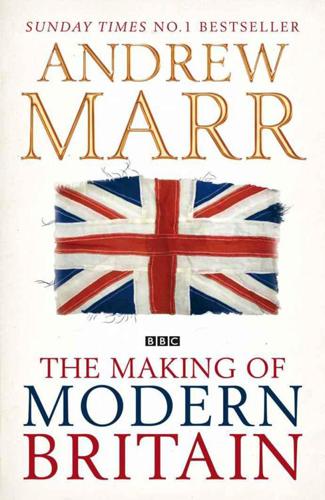
The Making of Modern Britain
by
Andrew Marr
Published 16 May 2007
When the economic storm finally arrived, Montagu Norman would find himself in the middle of it; neither his famous cloak nor his alleged propensity for walking through walls would provide any hiding place. By the early 1920s in politics, the old battle line between protectionist Tories and free-trade Liberals was being replaced. Now it was pro-capitalist Conservatives against socialists. This would squeeze the Liberals into near oblivion. Before it did, Britain went through volatile three-party elections. After capitalizing on his war leadership in 1918 Lloyd George had been hammered in 1922. When Stanley Baldwin became Conservative prime minister, replacing the dying Bonar Law, he decided to call another general election for late 1923.
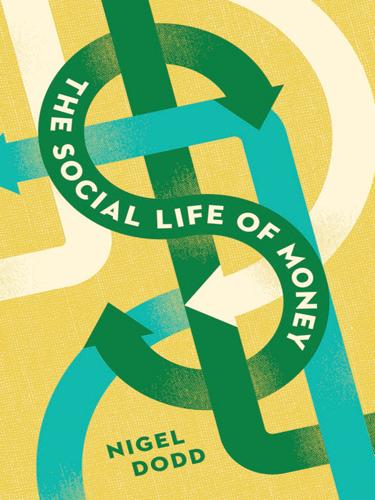
The Social Life of Money
by
Nigel Dodd
Published 14 May 2014
The Marshall Plan was significant for the development of the international monetary system. It was instrumental in the establishment of the European Payments Union (EPU) in 1950, lifting the majority of capital controls in Europe while encouraging a system of fixed exchange rates and a degree of trade liberalization. Moreover, drawing rights connected to the EPU were supported by ECA funds and facilitated the process of establishing full convertibility under the Bretton Woods Agreement. Describing it as “an investment in the world’s interest,” Bataille saw the Marshall Plan as an answer to the fundamental problem of general economy, namely, excess.
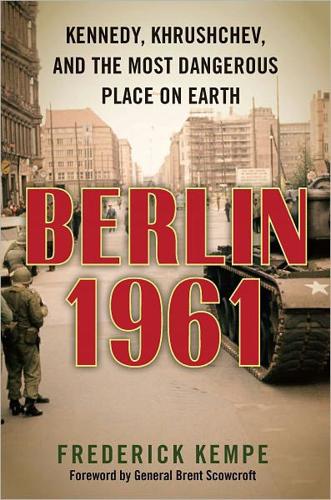
Berlin 1961: Kennedy, Khrushchev, and the Most Dangerous Place on Earth
by
Frederick Kempe
Published 30 Apr 2011
Playing devil’s advocate, Thompson responded that even if West Berlin were unimportant to the Soviets, “Ulbricht was very much interested,” and would be unlikely to endorse Khrushchev’s guarantee for its democratic, capitalist system. With a dismissive wave of the hand, as if swatting away a troublesome gnat, Khrushchev said he could compel Ulbricht to approve whatever he and Kennedy would decide. In an effort to find safer ground than Berlin, Thompson changed the subject to U.S.–Soviet trade liberalization. On that matter, he did have an offer he hoped would mollify Khrushchev. He said the U.S. was hoping to lift all restrictions on Soviet crabmeat imports to the United States. Instead of embracing the gesture, Khrushchev shot back his outrage at a recent U.S. decision to cancel, on national security grounds, the sale to Moscow of advanced grinding machine tools.

Money Changes Everything: How Finance Made Civilization Possible
by
William N. Goetzmann
Published 11 Apr 2016
No longer would import duties or canal revenues be seized by another country for direct debt service. Instead, the IMF set macroeconomic benchmarks as conditions for future loans and required structural adjustments to an economy that got itself into serious debt. These ranged from austerity measures to currency devaluation, to increased exports and trade liberalization, to introduction of free market policies and privatization: a toolkit of solutions designed by macroeconomists, as opposed to self-interested bondholders or bank lenders. Countries with these IMF-imposed conditions sometimes complain about the hardships they impose and the failure of the prescription.

The Rise of the Network Society
by
Manuel Castells
Published 31 Aug 1996
The European Community extended its membership to southern and northern Europe, and accelerated its process of economic integration to expand its internal market, while presenting a united customs front vis-à-vis Japanese and American competitors. The US, building on its superior technology and business flexibility, increased its pressures for trade liberalization and open markets, while keeping, as a bargaining chip, its own protectionist barriers. Capital markets increased their global circulation on the basis of the eurodollars market, largely created to allow US multinationals to lend and borrow outside the US, circumventing American regulations.
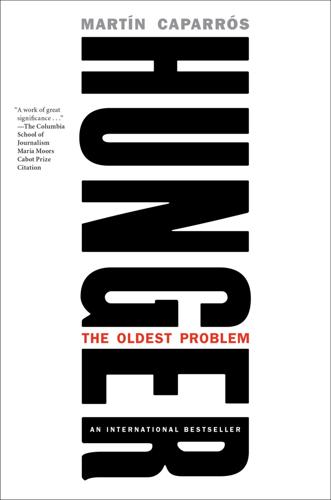
Hunger: The Oldest Problem
by
Martin Caparros
Published 14 Jan 2020
Aug. 2012” 7 “Eco Pulse 2012 Report” The Shelton Group. August 16, 2012. 8 Smithers, Rebecca. “UK households wasting less food, figures show.” The Guardian. Nov. 15th, 2011 9 Clerc, Denis. Foreword to Francois de Ravignan’s La faim, pourquoi? Paris: La Découverte, 2009. 10 Henriques, Gisele and Raj Patel. “Policy Brief No. 7: Agricultural Trade Liberalization and Mexico.” Food First (Institute for Food and Development Policy). August 2003. p. 2. 11 Footnoted in: Breman, Jay. The Labouring Poor In India. Oxford: Oxford University Press, 2003. p 13 12 Footnoted in: Central Intelligence Agency. The World FactBook. Washington D.C., 2002. p. 80. 13 Davis, Mike.
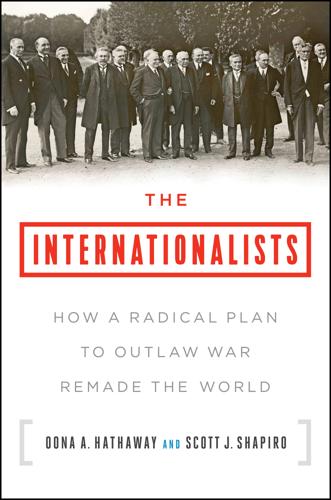
The Internationalists: How a Radical Plan to Outlaw War Remade the World
by
Oona A. Hathaway
and
Scott J. Shapiro
Published 11 Sep 2017
Federal Bureau of Investigation, 2014 Crime in the United States: Violent Crime, https://ucr.fbi.gov/crime-in-the-u.s/2014/crime-in-the-u.s.-2014/offenses-known-to-law-enforcement/violent-crime. 6. U.N. General Assembly Resolution 68/262, Territorial Integrity of Ukraine (March 27, 2014). 7. See Oona A. Hathaway, “Positive Feedback: The Impact of Trade Liberalization on Industry Demands for Protection,” International Organization 52, no. 3 (1998): 575–612. 8. Organization for Economic Cooperation and Development, Trade and Jobs, http://www.oecd.org/tad/tradeandjobs.htm. ILLUSTRATION CREDITS INSERT 1 1. Hendrik Cornelisz Vroom, The Return to Amsterdam of the Second Expedition to the East Indies. 1599, oil on canvas.
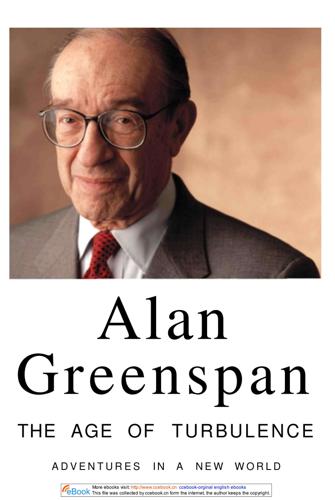
The Age of Turbulence: Adventures in a New World (Hardback) - Common
by
Alan Greenspan
Published 14 Jun 2007
A "fully globalized" world is one in which unfettered production, trade, and finance are driven by profit seeking and risk taking that are wholly indifferent to distance and national borders. That state will never be achieved. People's inherent aversion to risk, and the home bias that is a manifestation of that aversion, mean that globalization has limits. Trade liberalization in recent decades has brought about a major lowering of barriers to movement in goods, services, and capital flows. But further progress will come with increasing difficulty, as the stalemate in the Doha round of trade negotiations demonstrated. Because so much of our recent experience has little precedent, it is dif365 More ebooks visit: http://www.ccebook.cn ccebook-orginal english ebooks This file was collected by ccebook.cn form the internet, the author keeps the copyright.

Roller-Coaster: Europe, 1950-2017
by
Ian Kershaw
Published 29 Aug 2018
Economic growth was also spurred by the need to build new homes to cope with the acute housing shortage left by the war and the influx of refugees. Over five million homes were constructed during the 1950s, stimulating the myriad subsidiary industries that supplied the building trade. The resurgence of world trade, liberalized and regulated under the arrangements agreed at Bretton Woods, New Hampshire, in 1944, and the General Agreement on Trade and Tariffs (GATT) three years later, provided the international framework within which West Germany’s buoyant economy could flourish. The regulation of West Germany’s commercial debt, agreed in London in 1953, to pay off at low and completely manageable rates of interest a total amount of around $15 billion over more than thirty years, down to 1988 (what was owed from before and during the war to external creditors, mainly American firms), was a further important step in the recovery in firmly establishing the country’s debt-worthiness.
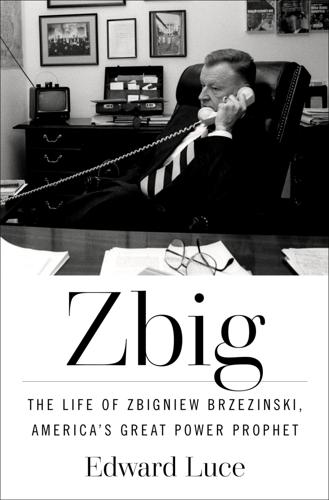
Zbig: The Life of Zbigniew Brzezinski, America's Great Power Prophet
by
Edward Luce
Published 13 May 2025
It was vintage Trilateralism. Brzezinski included it both a riposte to Kissinger’s great-power obsession and to signal strategic encirclement of the USSR. Carter’s first overseas visit to London had broadly advanced that goal. Many of the Trilateral Commission’s other priorities, including trade liberalization, monetary coordination, and a strengthening of NATO were part of that first item. Beyond that, the commission’s shadow quickly faded. As both Ford and Nixon had done, Carter hosted its members at the White House when the group met in Washington. Brzezinski, to the annoyance of Kissinger, who had joined the commission’s executive committee, also addressed the group’s annual meeting in Bonn in late 1977.

Growth: From Microorganisms to Megacities
by
Vaclav Smil
Published 23 Sep 2019
Perhaps the best summary of trade’s effects on economic growth can be gained from a closer look at the evidence published by Rodriguez and Rodrik (2000). They found that greatly overstating the systematic evidence in favor of trade openness helps to generate exaggerated expectations and to interfere with institutional reforms which might have potentially greater payoffs. Their conclusion: The effects of trade liberalization may be on balance beneficial on standard comparative-advantage grounds; the evidence provides no strong reason to dispute this. What we dispute is the view, increasingly common, that integration into the world economy is such a potent force for economic growth that it can effectively substitute for a development strategy.
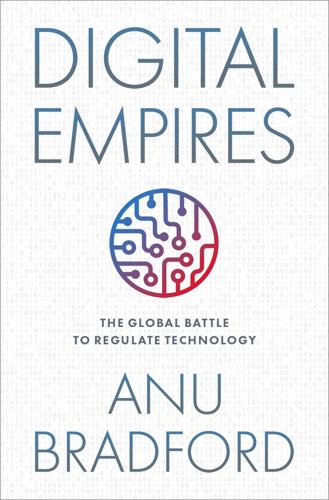
Digital Empires: The Global Battle to Regulate Technology
by
Anu Bradford
Published 25 Sep 2023
To foster an integrated, European single market, the EU has relied on several market-driven policies geared at eradicating tariffs and other trade barriers, while restricting various member state regulations capable of hindering market integration. Given these commitments, the EU has been described as “the leading exponent of neo-liberal regulation in Europe.”159 The EU’s central goal with these policies has been to foster competition, especially across member state borders. Trade liberalization measures and antitrust law have contributed to this goal, as have various measures aimed at constraining member state governments from adopting regulations that distort the single market. Thus, even the regulations the EU has adopted across numerous policy domains have typically had a pro-competitive, market-creating character.
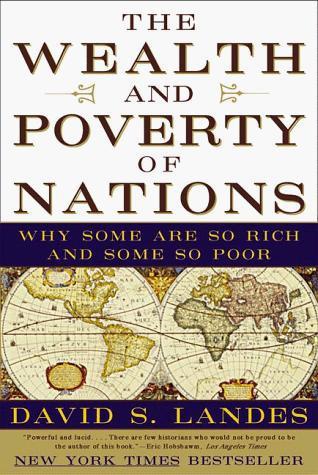
The Wealth and Poverty of Nations: Why Some Are So Rich and Some So Poor
by
David S. Landes
Published 14 Sep 1999
In the United States, the rules varied from state to state, but despite routine incorporation in some states well before the Civil War, partnerships continued to dominate until the 1870s. One reason was that banks preferred to lend on the security of unlimited liability. 7. On “assistance for the strong,” see R. Tilly, “German Banking, 1850-1914.” 8. Ibid., p. 113. All industrial capital? Or just that held in public joint-stock companies? 9. On the triumph of trade liberalization, see Levasseur, Histoire des classes ouvrières…de 1789 a 1870, Vol. II, Book VI, ch. 5. It should be noted that this move to freer trade was short-lived. In the wake of a severe financial and commercial crisis (1873-), the major industrial nations moved back toward protection (Germany, Austria, Italy, 1878-79; France, Méline tariff, 1892).

George Marshall: Defender of the Republic
by
David L. Roll
Published 8 Jul 2019
He said that “the most important achievement of the Marshall Plan was not so much the material aid it gave as the rekindling of hope, the rekindling of energy.”101 At a critical time, beginning before the first shipload of goods even arrived, there is no question that the Marshall Plan boosted confidence and raised the morale of its European recipients. The second consequence was the contribution of the Marshall Plan to cooperation and trade liberalization among the Western European states and the resulting divide with the Soviets and their satellites. Cooperation in the West was a long way from integration or a single market. But it set the stage for future unification and decisions by West Europe states to side with the U.S. in the Cold War against the Soviet Union (though the plan failed to lure satellites out of the Soviet orbit, which was one of Kennan’s objectives).
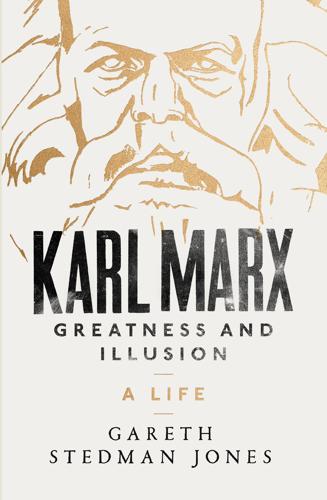
Karl Marx: Greatness and Illusion
by
Gareth Stedman Jones
Published 24 Aug 2016
It went without saying, as he had emphasized up to 1864, that the freedom of Europe required the breakup of the military despotisms of Austria, Prussia and Russia. But it had also become clear that national unification by no means necessarily brought with it social or political liberation. In early 1864, Bakunin had moved to Italy, where disillusion, particularly in the south, with trade liberalization and Piedmontese taxation had grown apace. In Italy, he became one of the first to respond to this disenchantment by criticizing Mazzini’s idea of the moderate political republic.246 In 1867, having moved from Italy to Switzerland, he attended the inaugural Congress of the League of Peace and Freedom, based in Geneva.

Gorbachev: His Life and Times
by
William Taubman
In a first phase (“institution building,” 1991–early 1992), the Soviet side would develop the political and legal framework for a market economy (mainly by agreeing on a new union treaty and removing limitations on private economic activity), and prepare for macroeconomic stabilization by controlling social spending and government credit. In return, Moscow would receive associate membership in the World Bank and International Monetary Fund, food and medical aid, technical assistance of all sorts, and trade liberalization of the kind that had been provided to Eastern Europe. In 1992, in return for strict macroeconomic control, large-scale price liberalization and initial privatization, the West would support convertibility of the ruble and provide balance-of-payments help, including foodstuffs and medicines, cash grants and loans, credits to the new private sector, and investments in infrastructure and industry.
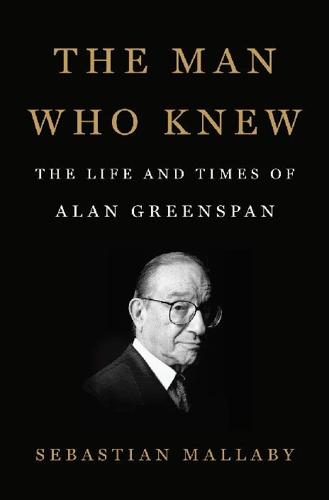
The Man Who Knew: The Life and Times of Alan Greenspan
by
Sebastian Mallaby
Published 10 Oct 2016
Buoyed by sizzling growth and a hot stock market, business executives were brimming with anecdotes about efficiency gains—gains that resulted from information technology; from innovations such as just-in-time inventory management; and from the multiple opportunities presented by deregulation, de-unionization, trade liberalization, and globalization. “Mike, I agree with your characterization of the productivity data,” Gary Stern, the president of the Minneapolis Fed, exclaimed during the August FOMC meeting. “But I think the business community would take sharp exception to it. Everywhere I go, they talk about the tremendous productivity improvements that they are achieving.”25 Greenspan was on both sides of this debate.
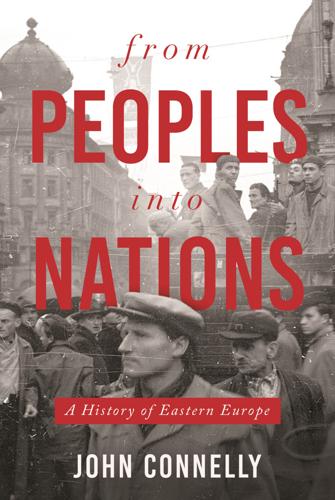
From Peoples into Nations
by
John Connelly
Published 11 Nov 2019
If it had any coherence, it was in opposition to “neoliberalism,” but neither then nor now has anyone identified alternatives that were substantially different as well as viable. Decades later, the leading economist of socialism and post-socialism, János Kornai, still refused to offer “solutions.” The historian Ivan T. Berend argued that the transformation did not have to proceed so rapidly. For example, it had not been necessary to devalue currencies so steeply. Trade liberalization could have proceeded more slowly, so that domestic industries would have more time to adapt to new circumstances.33 But for Berend, too, the basic idea was to achieve macroeconomic stability in a capitalist economy, and he agreed that some shock was necessary, including major elements of reform: stabilization, privatization, and marketization.